Sergio Aragonés Groo the Wanderer (1985) #1-120
by Sergio Aragonés, Mark Evanier, Stan Sakai and Tom Luth
If blog is supposed to be a chronological reading of everything published by Epic Comics, then why am I reading Groo after all the other books? Because I bought the set of comics from somebody on ebay who then said “I broke my leg, could you wait a bit?” and then ghosted me. (I hope your leg is better!) So I waited, and then I re-bought the set from somebody else. By the time I got the comics, I was reading the 1989 books, and I thought I may as well just do them at the end instead.
The other reason is that, of course, the Groo comics are about 13% of Epic’s output (if we’re counting issues, not story pages), so I thought it was going to take weeks and months to get through it all.
I have read Groo before (and before), and I… I’m not really a fan. In the first issues, the gag is that Groo is a raging asshole, and then they sweeten the deal by making Groo a total moron instead. It was an improvement, but the first few issues had problems with tone. There was a steady improvement, though, so perhaps the Epic issues will be where they find the right balance?
Every issue starts off with a two-page spread like this, most of them (at least so far) as insanely detailed like this. Unfortunately, Epic printed Groo on toilet paper using what I can only assume is a carved potato printing plant, so er some details are lost. The final Pacific issues were printed on white “Baxter” paper, and Aragonés’ artwork really shone there.
Not that this isn’t fun to look at here.
The first issue, unfortunately, feels a bit half-baked. The plot (even as a Groo comic goes) doesn’t make much sense, and the gags feel underdeveloped.
But we do get an amusing text page from Evanier.
Oh, yeah, I had almost forgotten how annoying those rhymes were…
The book continues to vacillate in just how violent it’s going to be: I mean, it’s about a guy who goes around killing people (mostly by mistake), so that there’s going to be a lot of death is a given. But is submerging a city in lava, killing everybody, really fun? Really?
I think they decided “no”, because they rather cut back on that swiftly. I have no idea whether they got notes from the Marvel editors or not, but the violence gets more goofy after the first handful of issues.
It also gets funnier and sillier every time over the first dozen issues, I think. The wordplay is stupid; sure, but it’s fun. There’s a steady patter of these things that have an accumulative effect, and it gets rather irresistible after a while.
The basic setup of a Groo story is that he arrives somewhere, misunderstands everything, and then fucks everything up for everybody, including himself. That could mean a very, very repetetive reading experience, but instead (in the better issues) it leads to a certain narrative rhythm that’s rather pleasing. After reading one issue, I find it difficult not to reach for the next one.
The comic tries to do some character development. Faced with a group of slavers, Groo wants to do the right thing and help them, but 1) he’s a moron, and 2) without much of a moral spine, so it all grows kinda muddled. (And it turns out that the slaves are just as bad as the slavers, so…)
Most issues try to avoid er “issues”.
There’s next to no continuity (at least in the issues I’ve read so far). One issue starts where the previous one left off, but that’s it.
A few issues have a shorter main story (they’re usually 22 pages long) and a backup feature. This leaves even less room to develop a story, making everything feel even slighter than usual.
For a comic about a guy killing people in fights, there’s a lot of scenes of Groo and company standing around talking (very amusingly). I love how Aragonés do these: Very clear storytelling, but very dynamic, with shifting angles and emphasis. And always concrete, well-drawn surroundings.
And then there’s the letters pages: Evanier responds to the missives with a set of running gags. Very informative ones. It’s this kind of thing that makes casual fans into rabid fans: The feeling that the creators are putting more into the book than what is, strictly speaking, required. The enthusiasm the creators have for Groo is contagious.
I love Aragonés’ depiction of a glamorous barbarian. Look at that chin! Just look at it!
The book uses Groo’s stupidity to huge advantage: Above we have people trying to explain to him the concept of “a play”, to little success. It’s great!
Evanier explains that every issue of Groo (since #4) has had a secret message somewhere. Fun.
In a particularly horrendously printed issue, there’s a call-out to a much-loved Prince Valiant storyline. Groo’s version doesn’t go as well.
*gasp* PORN!!!
I thought a natural evolution (when Evanier and Aragonés were tired of coming up with a new preposterous plot each issue) would be to introduce longer storylines. It would give them an opportunity to develop more complex stories; something more epic. So that was what I expected in this three-issue arc where we meet Groo’s sister.
But it’s a huge disappointment: The main story for these three issues barely moves at all; it’s really repetetive with Groo doing the same thing over and over again. In addition to that, we spend about half the issues in flashbacks to his childhood. These parts are funnier, but it still doesn’t really… amount to much.
Instead of doing a bigger story, it’s slighter than usual single-issue stories. Weird, and a wasted opportunity.
But, hey, I’m not really complaining: Groo is funny, and the artwork is great.
Evanier spills the beans on those secret messages.
Being a nerd, I find these circulation numbers that are required once per year (by the post office?) nice, because these are supposed to be the true, actual numbers. So they’re printing 230K copies of Groo, which is a pretty hefty number. But it sounds like they’re selling 110K copies per issue, which I guess means that newsstand distribution results in a lot of returned copies? Yup: Returns are 125K.
Still, selling 110K copies is respectable.
They lean hard into the “recurring joke” thing in Groo — there’s half a dozen they do in most issues, like the “slow of mind” thing (because somebody called him that several pages ago). It does have a cumulative effect, but more new jokes would also have been nice.
Inevitably, Groo gets a companion, because coming up with variations on the Groo setup must be challenging. The only strange thing is that it took them so long. I mean, they have been extending the cast of recurring characters throughout the series, but with Rufferto, Groo gets somebody constant to play off of in his adventures.
One odd choice, though, is that they make the dog as stupid as Groo is, which doesn’t make for much contrast. However, they smarten him up gradually — keeping him naive (about Groo), but getting more wily, which is a smart choice, I think.
As a former bankster, I think this sounds like a very plausible turn of events.
Luth does the colouring of almost all the issues, but sometimes somebody else steps in. Presumably when he drops from exhaustion from having to colour all those tiny little noodly bits. But they do get good replacement colourists, like Janice Cohen.
I’m slightly fascinated just by how wretched the artwork on many of the ads here are. You’d think that it’d cost a lot to take of a full page back cover ad over a range of Marvel titles, so they’d spend at least more than $20 on getting the artwork done, but… nope.
At some point, Aragones started dropping Evanier/Sakai/Luth/Himself into one panel per issue. Sometimes it’s very obvious (above), and sometimes it’s more subtle.
One year later, new numbers: Printing is radically down til 170K, and sales are somewhat down to 95K. Eating 70K copies in returns instead of 125K sounds… perhaps more sustainable? Even if sales are down 15K.
Speaking of bad ad artwork… the horror! The horror!
See? It’s fun. It not an original gag, but it works.
Then Rufferto starts having his own adventures, imagined (above) and otherwise, and… I totally see why they’d try doing something like this, but it just isn’t funny.
OK, just a quick note about how I’m doing this blog post: It’s taken me two weeks to get this far, so I’m guessing it’s going to take at least two more weeks to get to the end. As usual, I don’t read what I’ve written, so there might be one of two little repetitions in here; sorry. And some typos — at one point I almost wrote “cirticise” with a zed! What a boner that’d been! Hah!
Another thing is that I usually read the comics and then write about them on the same day, but the double page spread above I read a week ago, so I have no idea what I was going to say about it. Hm… That Chakaal is back? She’s a pretty good comedic foil for Groo…
Circulation is about 90K, so a slight dip.
Speaking of repetitions — this “Groo going the wrong way” keeps on coming, and I like it? It’s such a simple, stupid joke…
I know the central structure they’re using is “Groo shows up somewhere and fucks things up”, and that can be funny. But sometimes, like above, where Groo shows up and destroys their entire ecology, it goes from being funny to just being sad.
But it does make the very few issues where Groo does something good (inadvertently) feel almost touching. And I adore that boat/island thing; a most excellent issue.
In some issues, Groo is barely present, but everything is still all fucked up, and then it just tips over into being reactionary: The lesson the comic seems to insist on is that any slight change for the better you try to make will end up with disaster. Doing this story once or twice would be no problem, but so many, many times, it starts getting depressing.
Of course, the way I’m reading this book isn’t the way it was designed to be read. Perhaps if I read it one issue per month for ten years, it wouldn’t seem like such a downer sometimes, but more like a “hey! I wonder how everything’s going to be ruined this month!”… But I don’t know. I think I would have been exhausted by it even at a slower pace.
Groo weighs in on police intelligence.
Modern art is a bugaboo for many people in comics. It turns out that it helps being a moron if you want to create it, which is, I think, a very common (if moronic) attitude.
I agree totally!
The Groo universe is almost completely steady state: New recurring characters are introduced all the time, but once they are, they remain themselves and serve as running jokes or foils for Groo. (I may be repeating myself.) I had expected them to move the book towards a more soap-opera structure after awhile, and they almost seem to do so here, with the large-chinned insufferable hero getting hitched to one of the witches, but this is never referred to afterwards, unless I missed something.
They do add longer storylines, though — up to four issues at the longest — but nothing changes in those, either. And those longer storylines aren’t that different from the normal single-issue plots, really, but that’s because they pack a lot of plot into every single issue, so even a single-issue thing feels epic.
I don’t know… I like stupid and silly, but sometimes it just becomes too much.
Evanier (and Sakai) become recurring characters (as a writer and his scribe). It allows them to make fun of the publishing industry, too.
Yeah… the number of people Groo kills can become overwhelming.
See? Hilarious, or not.
In most of Evanier’s other comics, the letters pages are usually squeezed out in favour of Evanier writing some anecdotes, but that doesn’t happen in Groo. Except for a few rare issues.
Especially in Hollywood Superstars.
I may be repeating myself (I don’t know whether I’ve mentioned before that I may be repeating myself; I’m now at least three weeks into writing this blog post), but these bits where they’re making fun of Aragonés start to feel abusive after a while.
Ouch! That’s not quite “ice pick to eye” motif, but it’s not … far … behind…
They’re still holding at 90K. Impressive!
And then! Suddenly! The book is no longer printed with potato engraving on toilet paper! What happened! You can actually see what’s going on!
They’re visibly flagging now on the whole “Groo” thing, and we get more and more issues where Groo isn’t the main factor of the story. Instead we get stuff like this, which is about how Censorship Is Bad. It’s not really the height of humour, is it now?
They represent the pro-censorship position cogently and fairly.
What? You call that number and then play a game via touch-tone? That sounds… fun…
Then Groo is pulled from newsstand distribution. Was Marvel cutting back on newsstand distribution across the line at this time, or had Groo sales just dropped? This can’t be good for Groo sales — my guess is that a minority of the sales would be through the comic book stores (which are very super-hero focused)…
And… no ads! This means that poor Aragonés has to draw a whole bunch of extra pages. In most of the issues from now on, there’s usually two house ads, one or two letters pages, and the rest is Aragonés. So he has to draw 32 pages per month. That’s just insane.
And sales are down by one third — to 60K. That’s less of a drop than I had thought… but… that’s probably from before they dropped newsstand distribution? Ah, yes; it says they printed 120K and sold 60K, so it was a drop in newsstand sales that led them to pull it, I guess.
Aragonés explains his cunning plan to increase the sales.
This is a somewhat unusual scene: Note the ram chasing the dog in the background of the first panel, the dog running through the herders’ legs in the second, and shivering behind Groo in the last. These sort of background sight gags are common in most humour comics, but aren’t really much of a thing in Groo, which is odd. I mean, Aragonés is (in Mad) the master of sight gags…
They have more room for the stories after getting rid of the ads, but they usually stick to the same length as before — about 22-24 pages. Instead they add short backup stuff, which usually… aren’t as fun as the main feature.
And also a bunch of one-page gags… or… whatever you may call these. Because they look like they might be gags, but they’re howlingly unfunny.
And also puzzle pages. At least one per issue. You can’t say that they aren’t giving it their all to make a jam-packed er package, if I may repeat myself.
The saddest issue is the one where Groo joins an expedition to collect endangered species, and he kills and eats them instead.
Did I mention that the one-pagers aren’t funny? I may be repeating myself here.
I’m the tiniest of children! Hm… oh, it’s a joke on the reader, I guess? Sneaky!
Evanier jokes a lot about reusing jokes, but sometimes I wonder whether they’d just forgotten they’d already done a story about a princess who had forest-dwelling gnome friends in a previous story…
Tee hee. “Abecedario”.
Anyway, in the 100th (!) issue, Groo learns to read and becomes… intelligent? Ish? Intelligentish!? Well, it was about time that there was some change to the steady state, but making him smart was not the thing I expected to happen.
And since everybody knows his old, stupid self, he decides to leave and go visit new lands. This also means that he leaves all the other recurring characters behind.
This is a very bold move by Aragonés and Evanier: It’s basically a fresh start, with a quite different character (Smart Groo) and nothing else that’s familiar. You have to applaud their guts… or perhaps sales were now really tanking and they had to do something? Or they’d just gotten really, really tired of writing the same old story? Which would be understandable.
So, what new jokes does this radical change open up… well… for one, they seem to be reverting to Groo being kind of a dick, which they hadn’t really leaned into since the very first issues of the Pacific run of Groo. (He was a horrible man before they decided to make him really, really stupid instead.)
But that only lasted an issue or so, and then he… well, he’s not as stupid as before, but they seem to be varying his intelligence level from story to story… but he’s more of a hero now? Here he is defending some striking workers against their corrupt employers.
Here he gets a bridge built over a vast chasm, opening the border between a prosperous country with good workers’ rights (and unions) with a neighbouring poor country, which leads to disaster for both countries. NAFTA, right?
It’s very political, but is it funny?
In this issue, Groo reforms the justice system.
Did I mention that there’s puzzles in every issue? I may be repeating myself; I don’t know.
Heh heh. I know it’s all fun and games, but it still feels good to see Aragonés win that one.
I’m now on week fortythree of reading Groo (I may have lost count of repeating myself), but did I mention that the last twenty issues of Groo, where he’s smarter, is all about fixing society and stuff? It’s more like “political action is effective” than the previous “all change leads to disaster”.
I know I complained about the latter earlier up there (I think? I may not be repeating myself?), but the new direction, while appreciated, isn’t, like, hilarious. It’s tedious a lot of the time.
So I was expecting the letters pages to be filled by irate readers complaining, but there’s only a couple of them.
*laugh track*
The jokes that we do get are of the sitcom variety. A dull sitcom.
*laugh track*
But there’s mainly pages and pages of this, where people are discussing, you know, real issues.
SO MANY OF THEM.
While the first 100 issues of Groo were sometimes repetetive, they were never a slog to get through, and many of the post-100 issues are.
OK, here’s the first post-newsstand circulation numbers: They’re down to 30K, half of what the final newsstand circulation was.
It’s not all like that, though — there’s still issues where Groo messes up and disaster befalls the towns he’s in. It’s almost a relief.
And we get one glorious dialogue-free issue, and it’s great. I couldn’t really find any pages to excerpt that does it justice, because it’s just one long physical skit, and it’s laugh-out-LOL funny.
A writer says that they could use post-100 Groo in school to teach the kids various subjects. I’m not sure whether he’s being ironic or not when he frames this as a positive thing.
And then it’s over! Issue 120!
OK, I thought that was funny.
And it has a quite good ending, including a fake-out ending (above) before the letters pages (and a real one afterwards). Nice touch.
Wow. I’ve read 3.3K pages of Groo for this stupid blog post!
Anyway, to repeat myself: I do not recommend reading Groo in the way I’ve done. It’s just exhausting for all the reasons that makes it a good monthly book: Most issues are complete little epics in and of themselves, but the range of plots is pretty small.
Aragonés and Evanier are undeniably talented people, and Groo is a good book, but I do kinda regret not cheating and skipping Groo altogether.
In an interview in The Comics Journal #128, page 82:
THOMPSON: Does it sell better in the direct sales
market or in the general market?
ARAGONFS: It sells about the same — a little more in
the direct sales market. Nota lot. Still, it’s a humor book,
and the direct sales market is such a false market that
we really don’t know how many people buy it to put it
in a plastic bag, how many read it, and how many buy
two copies. so it’s very strange. I don’t know what’s going
to happen with it.
THOMPSON: It’s a hard market to ,ud. IA’s talk about
how you assembled the “Groo Crew” — Mark, Tom, and
Stan.
ARAGONES: Well, before I “Orked with him, Mark has
always been a dear friend of mine and I’ve known him
for many years. And he has become invaluable. What was
done for Bat Insh by..
THOMPSON: Denny O’Neil?
ARAGONLS: Denny O’Neil, thank you very much. What
Denny O’Neil did for Bat Insh was give him a voice, a
Western voice, and that’s what Mark has done for Groo.
And more — he’s given it his special brand of humor.
Stan Sakai also had been a friend and a very good let-
terer, as well as a very good artist. And Tom Luth is an
excellent colorist. So it was a very natural meeting; they
have stayed and they have enjoyed the relationship.
Without Mark, Groo would talk a little bit differently,
because the characters write themselves. No matter what
people want to do for a character, the character takes a
certain direction. You’re not writing him — you end up
writing for him. Groo started off less stupid, but once
you inject oral humor, which is what Mark does very uell,
it plays more On the stupidity of the character, so he
becomes a little more stupid. So Groo has become stupid-
er than he was when we just started it, but it haslü been
any trouble. It’s easy.
Mark Marcus writes in Amazing Heroes #153, page 71:
Issue #47 finds our anti-hero involving
himself in a quest for the priceless
Starburst Sapphire. This “Icon” has
been hidden for centuries in a tall
tower guarded by assorted dragons,
demons and other unpleasantries.
Groo enlists the services of several
“acquaintances” by promising each a
fifty percent cut of the proceeds,
(hence the story title; “The
Solution”) in what almost seems to be
very funny send-up of Mel Brooks’
The Producers.
Does Groo triumph in the end?
What do you think? As for the art-
work, it’s what you’d expect from
Aragones. Funny, busy and brilliant.
Aragones putting out a poor product
would be like Sylvester Stallone
putting out a good movie… It just
won’t happen.
And the story ends with the issue.
Next issue, next adventure. You leave
with a feeling of closure. The story
is whimsical, and with the help of
Evanier’s poems, moves at a steady
cadence. I also like the fact that
Aragones has created characters that
are different enough from his other
work to spare us from repetition. I
look forward to the next issue..
‘ ‘There are few comics published
That are worthy to see print.
But issue 47,
I’d have to grade it mint!”
GRADE: MINT
Groo seems under-reviewed for such a huge series, but there’s some:
Perhaps upon entering adolescence, I figured I was required to graduate from Peanuts to X-Men, to trade bulbous tykes and chuckles for grim storylines and photo-realistic vigilantes. “Ah, but I was so much older then,” Bob Dylan sang. “I’m younger than that now.” Slinging goofy fun in a mainstream comic book, Groo declared that it was still OK to laugh.
It all seems so simple. Here’s another Groo paperback. Here are another four Groo stories. Each of them is hilarious, and the cartooning is superb. It all falls together smoothly.
Overall, “Groo” is a great comic. What more can I say?
Groo continued at Image for a year before moving to Dark Horse, where it has remained ever since. It’s not published as a regular series, however: It’s a series of mini-series, and the most recent one was published in 2017, apparently. I haven’t read any of these. It looks like they’ve brought back the supporting characters? People seem to like the comics, still.
But it’s perhaps not as strong as in the 80s:
I’ve been reading Groo for decades at this point and continue to enjoy it. The resurgence of material in the last few years has been a treat but not all of it has been as strong as it could be.
It doesn’t look like the Epic series has been extensively reprinted. That is, Dark Horse collected the Epic series until the halfway point, but seems to have stopped there?
And with that… This blog series is over!
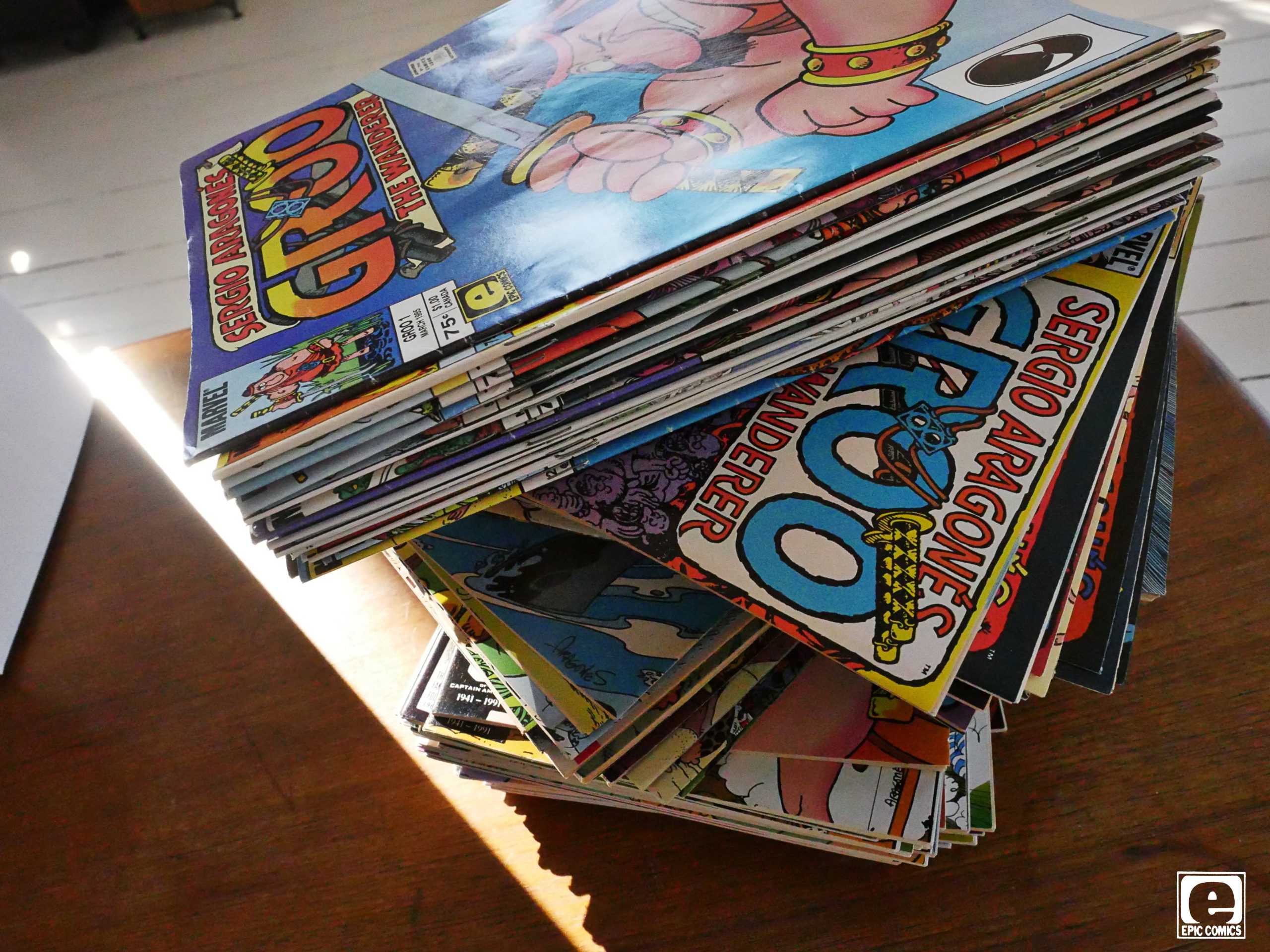
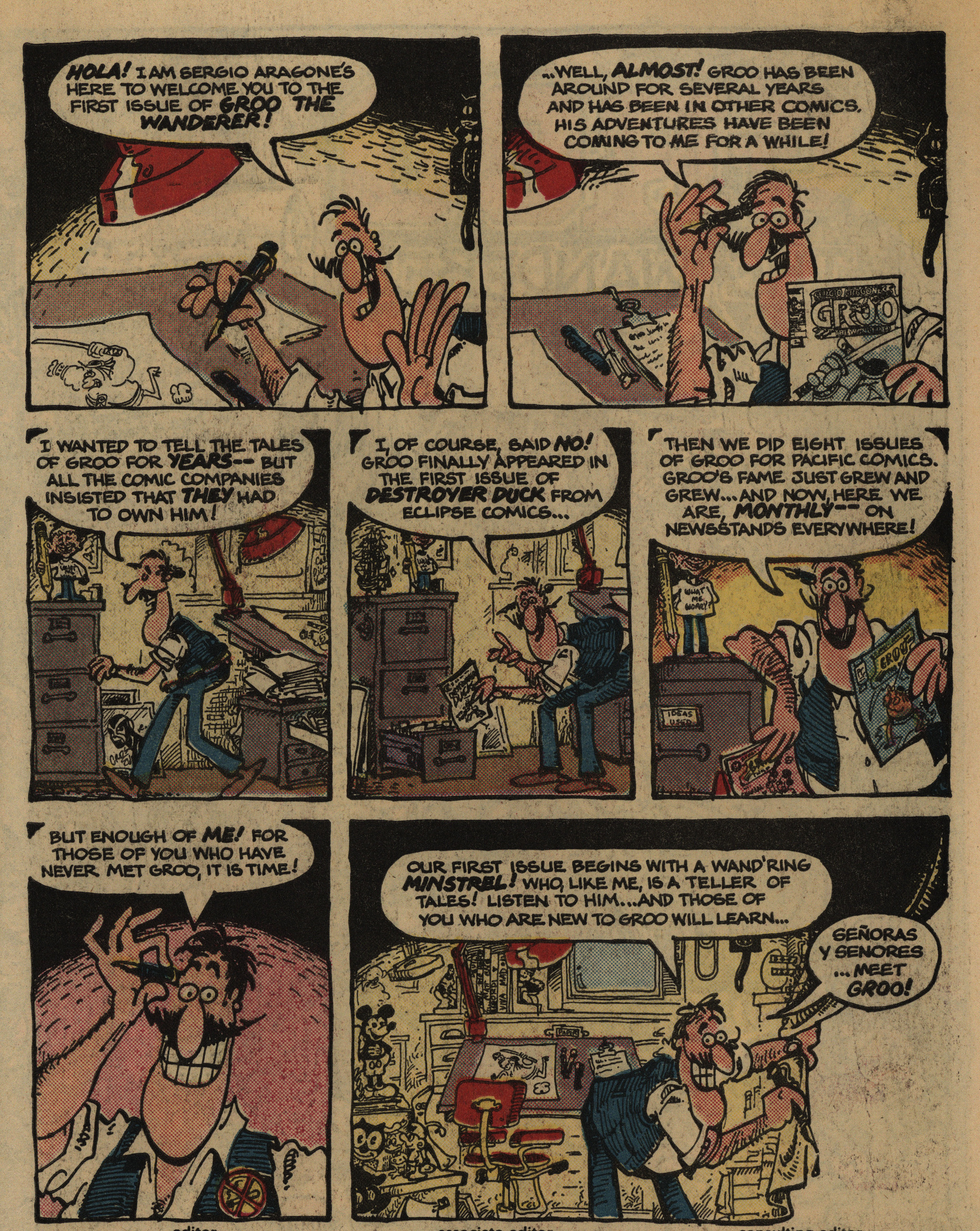
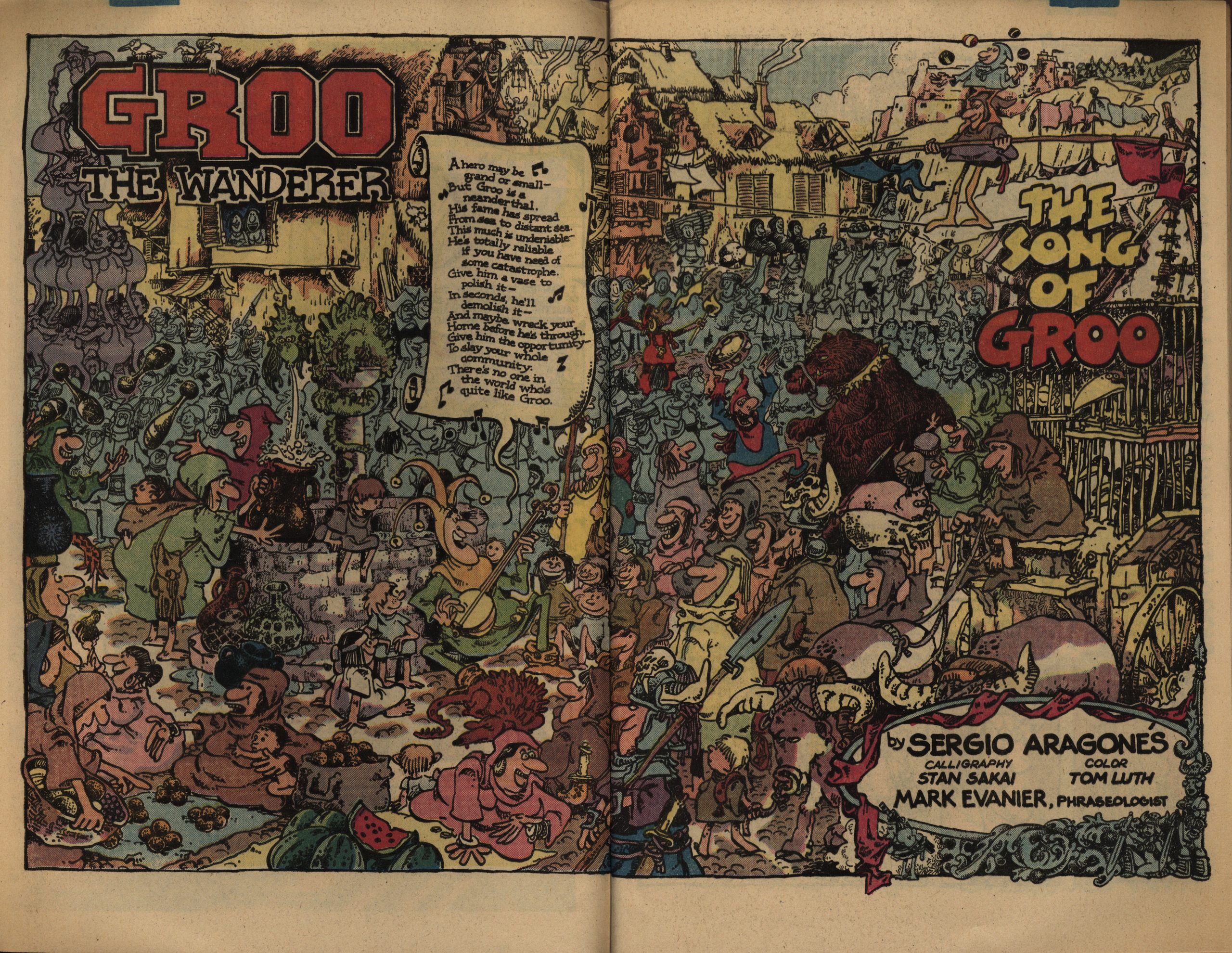
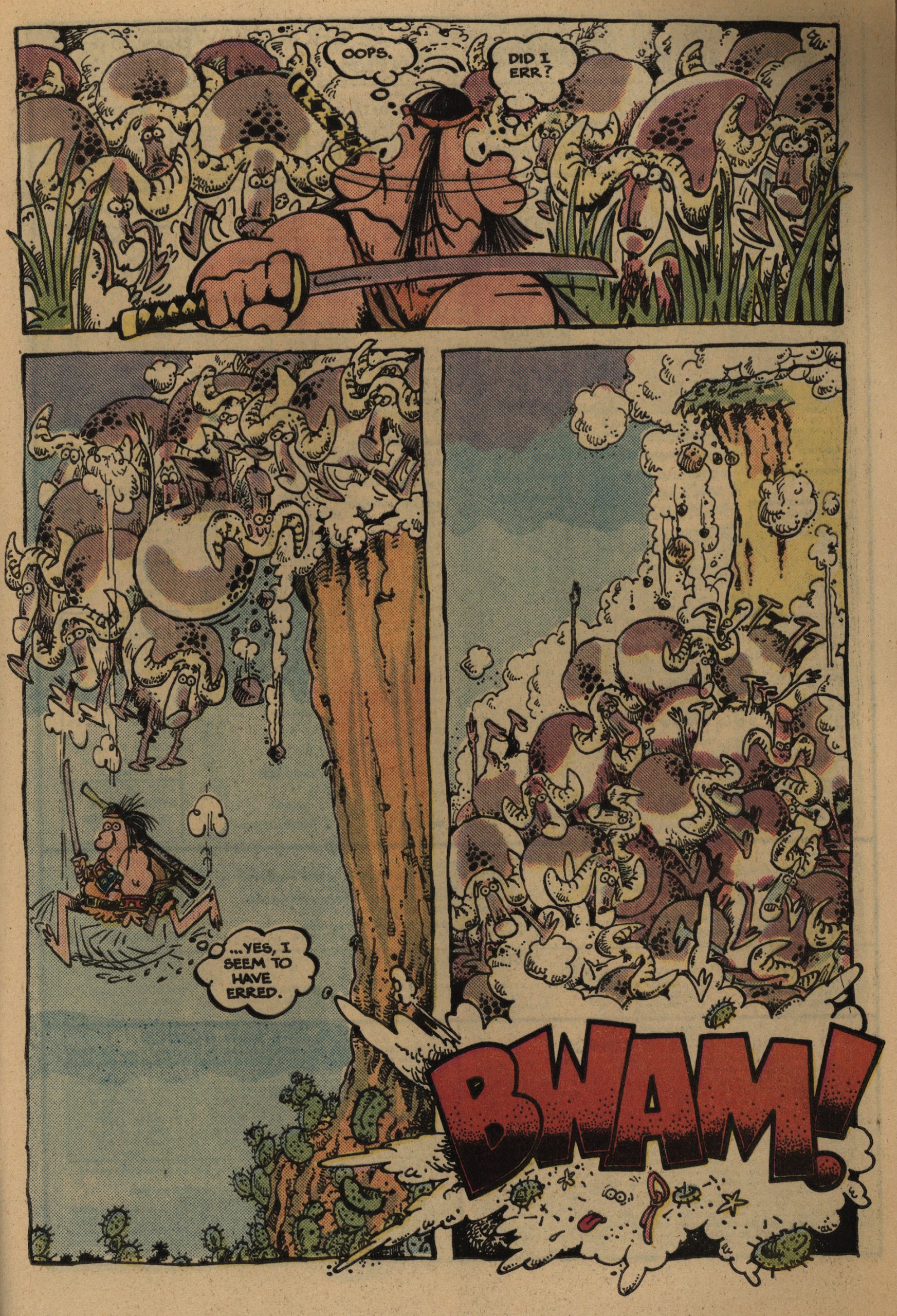
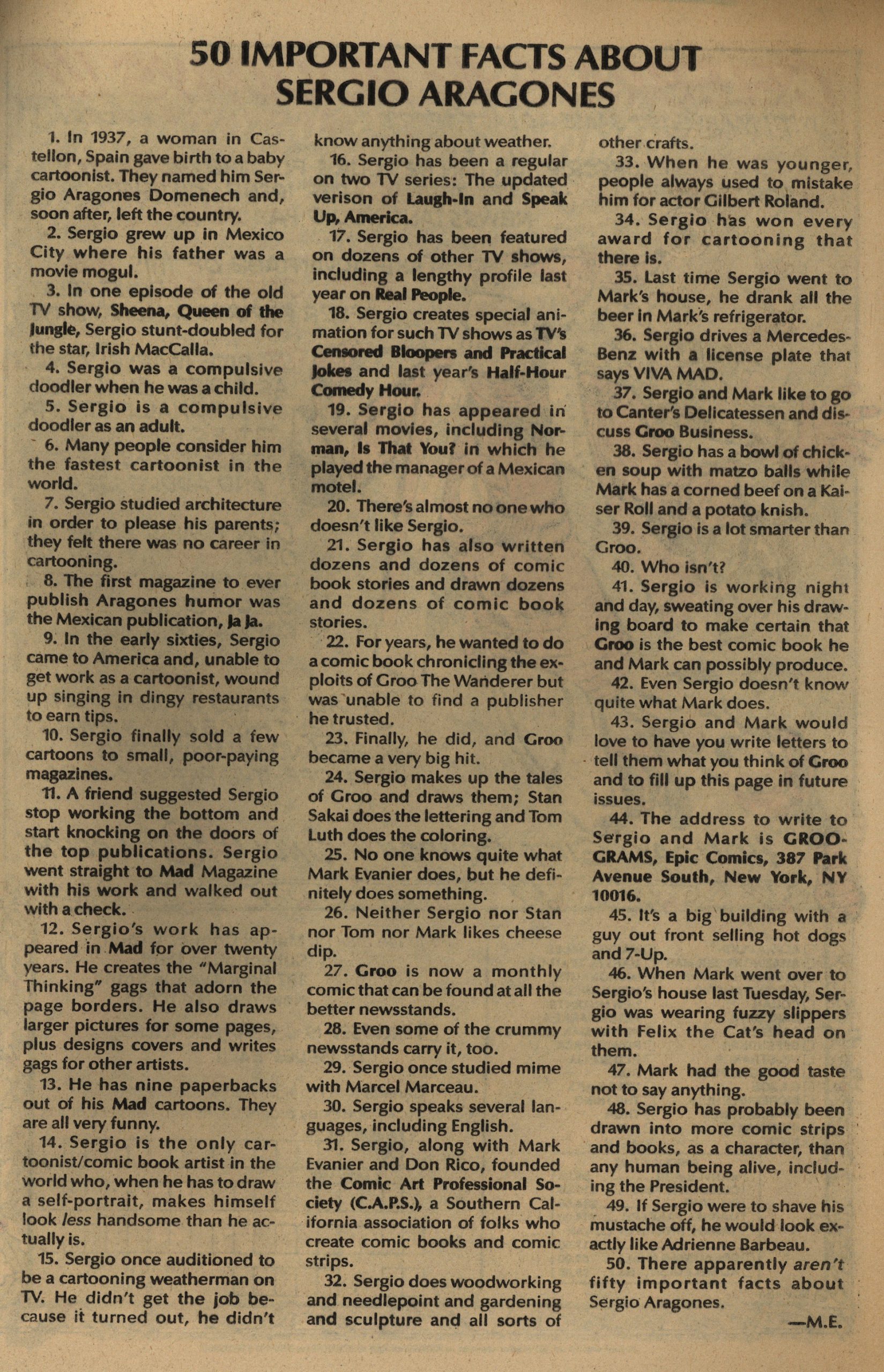
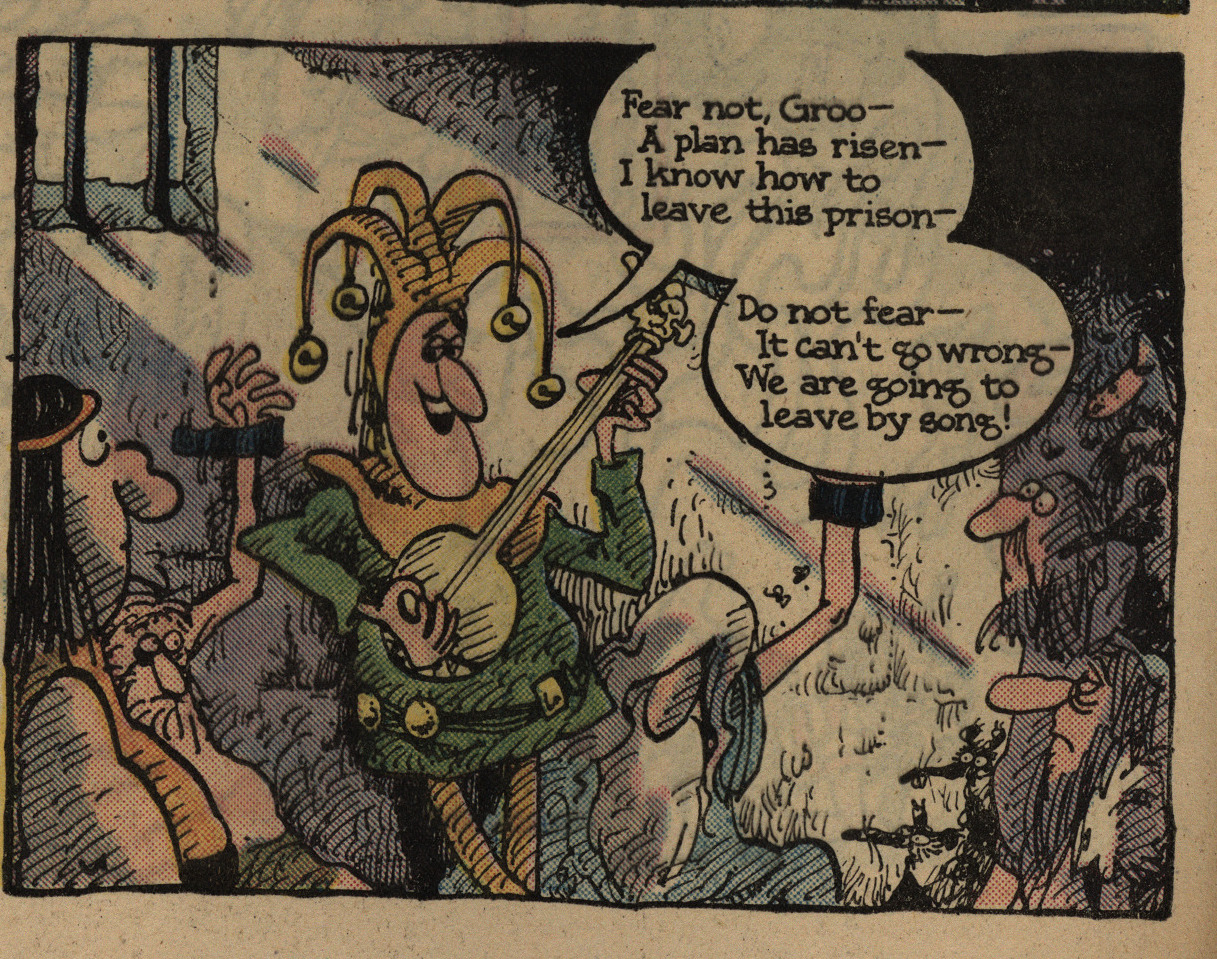
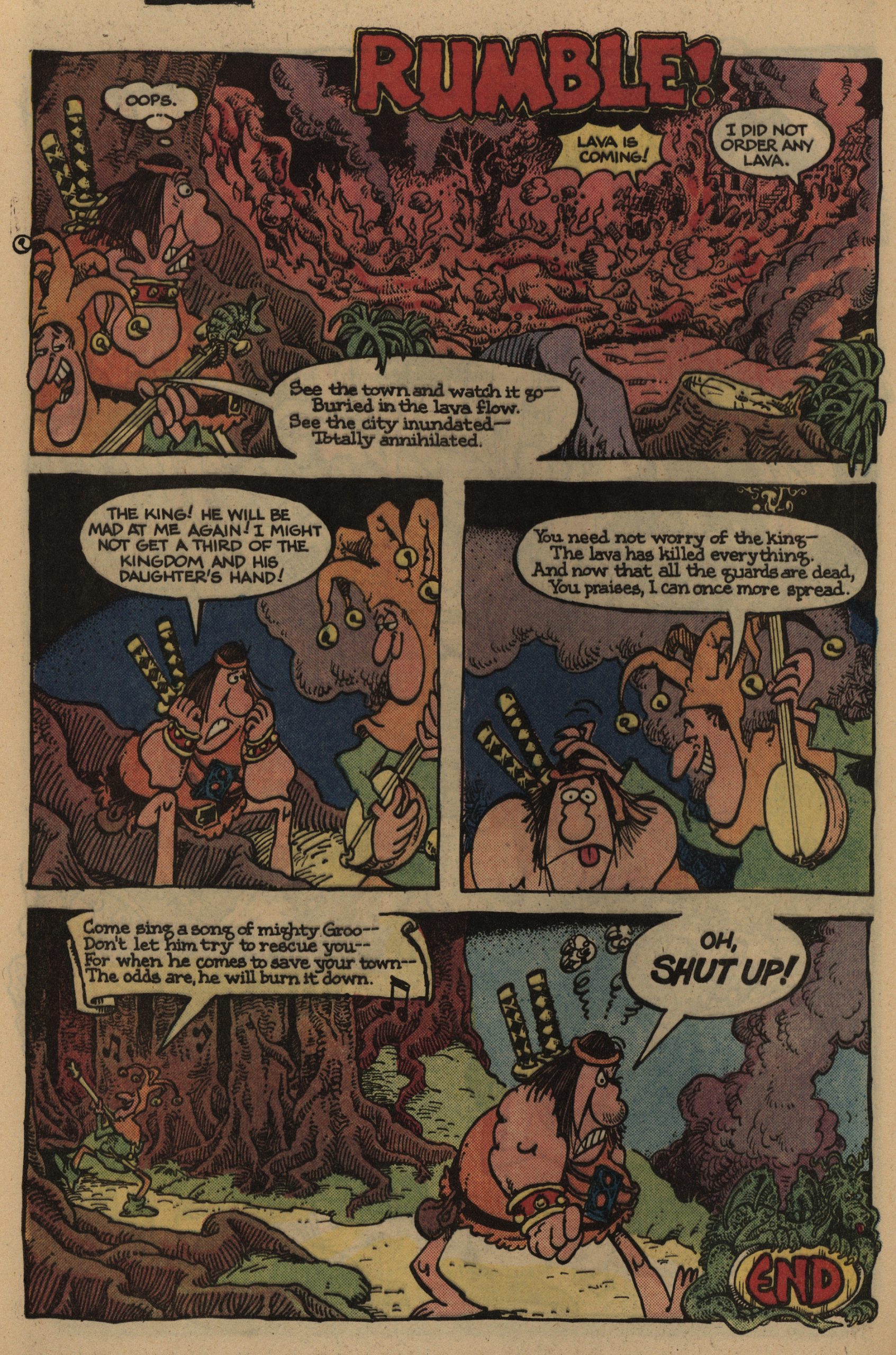
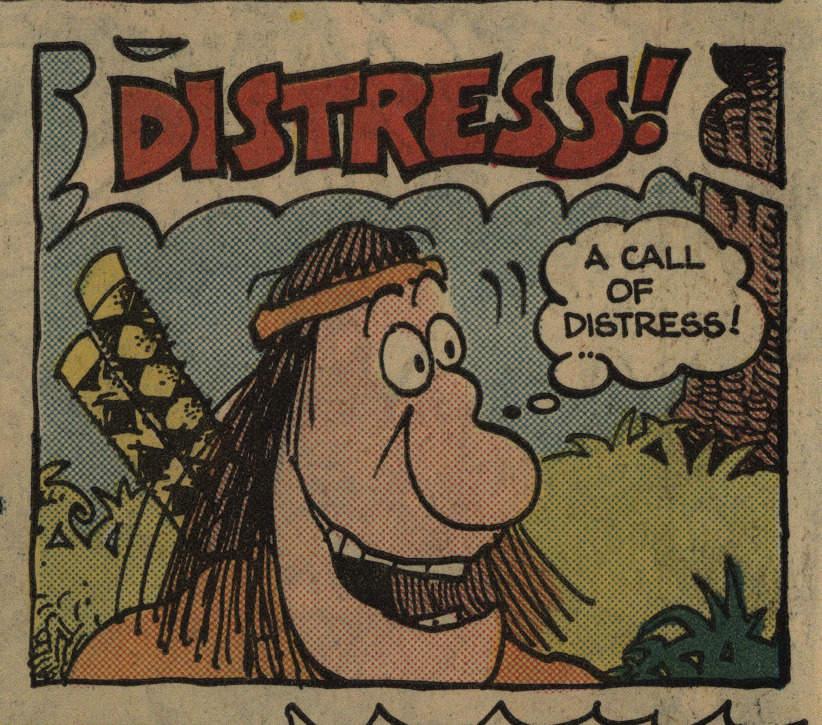
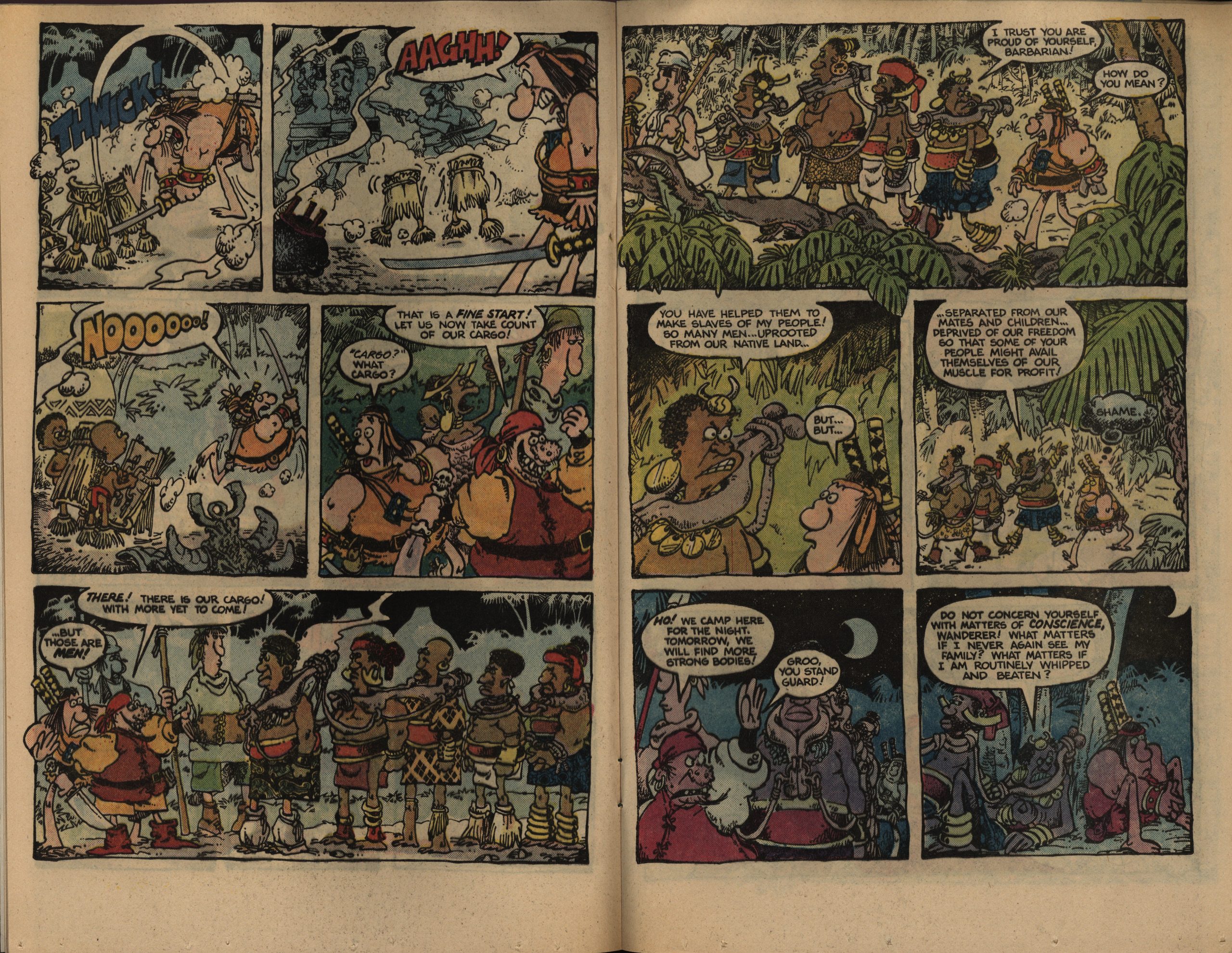
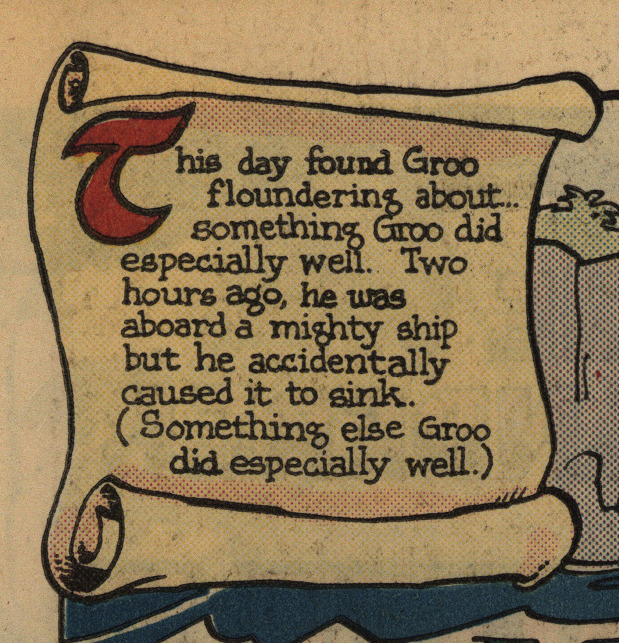
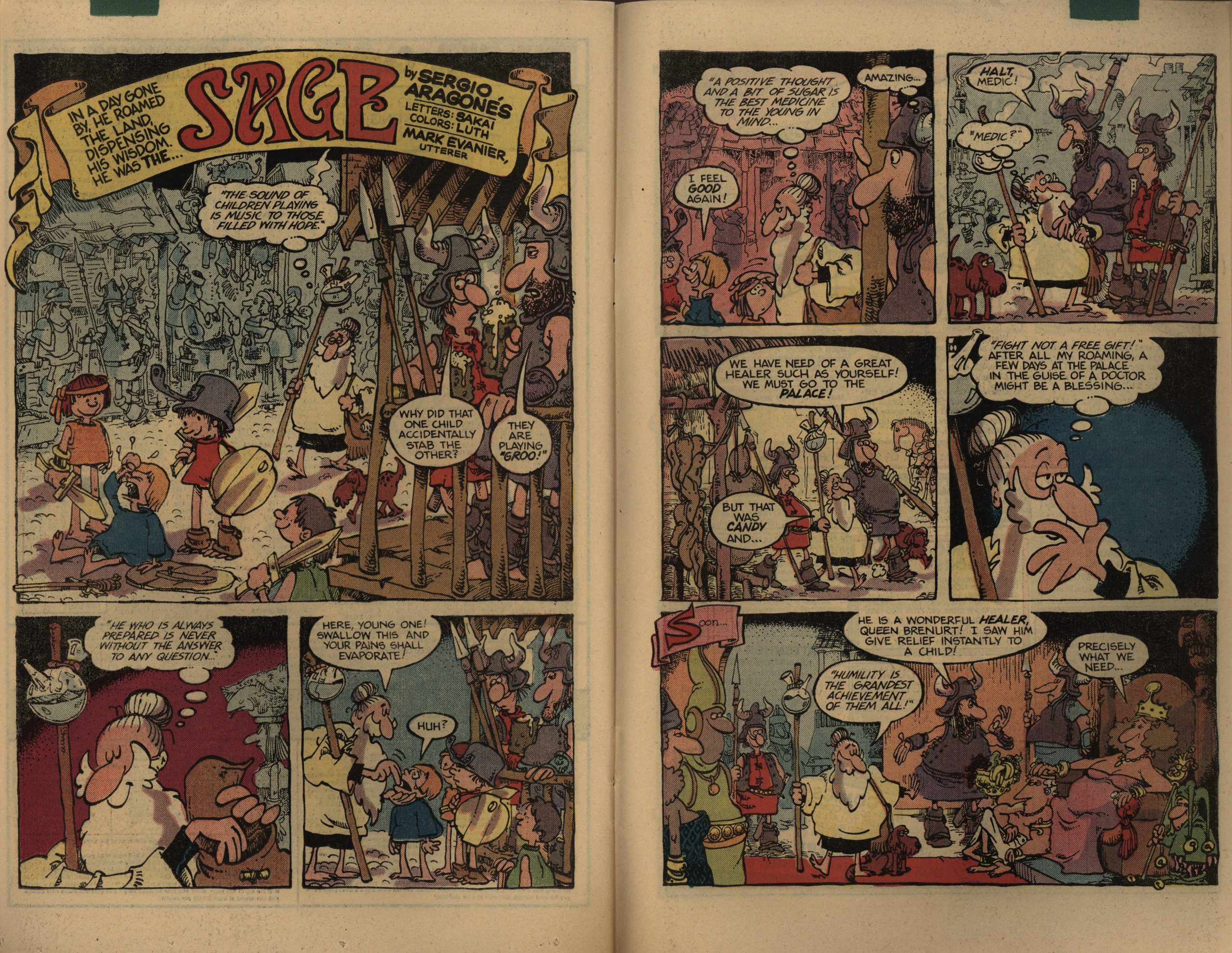
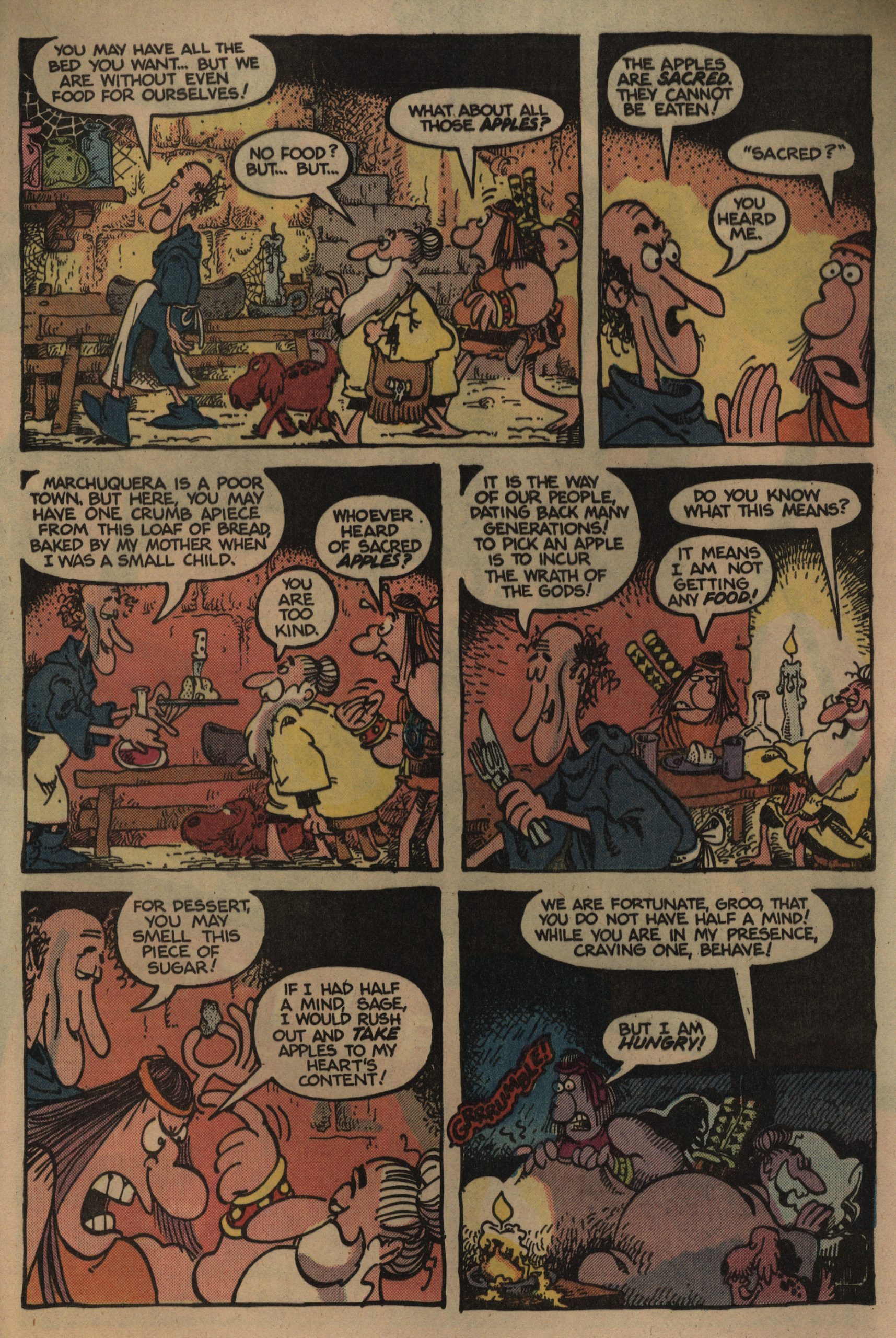
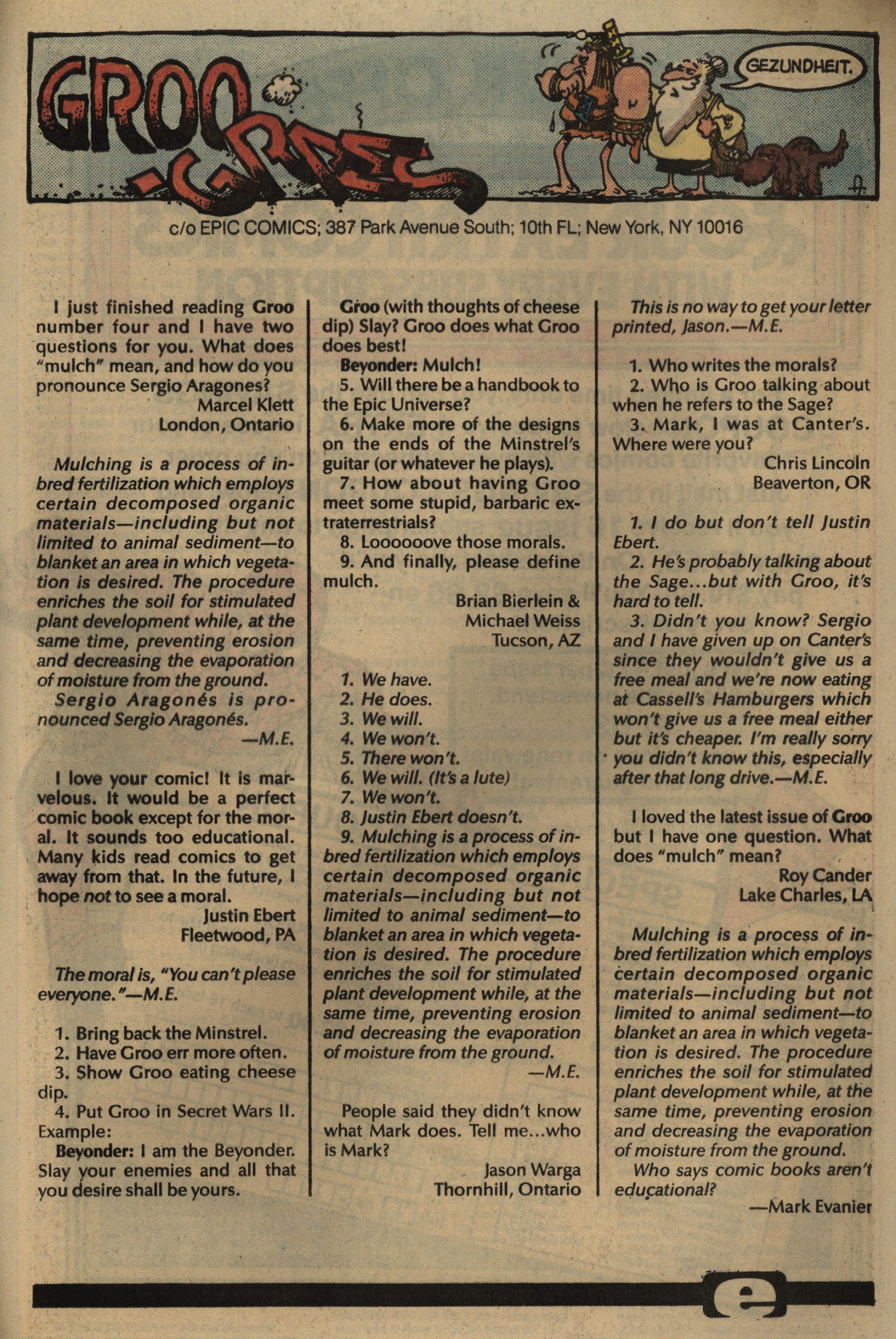
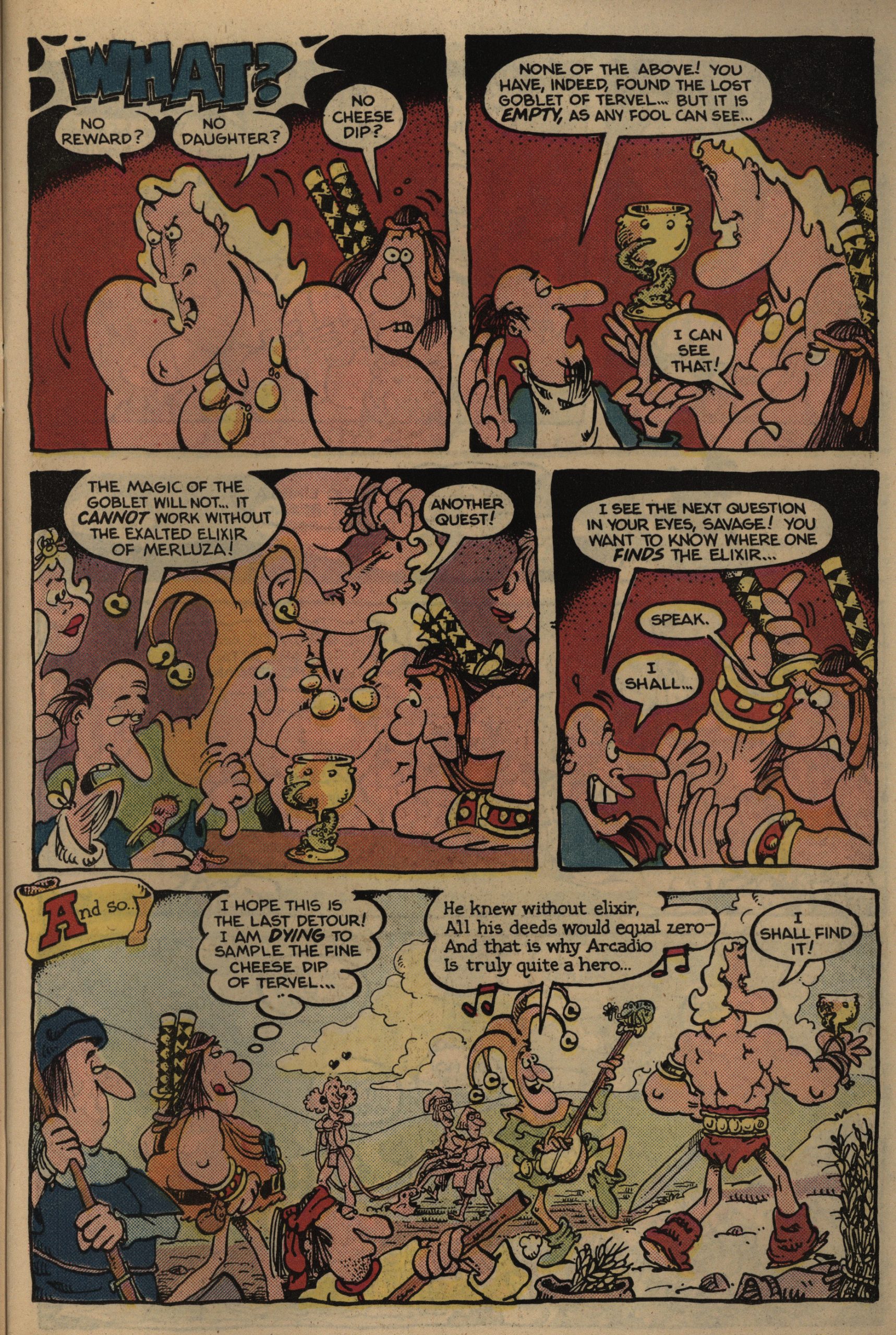
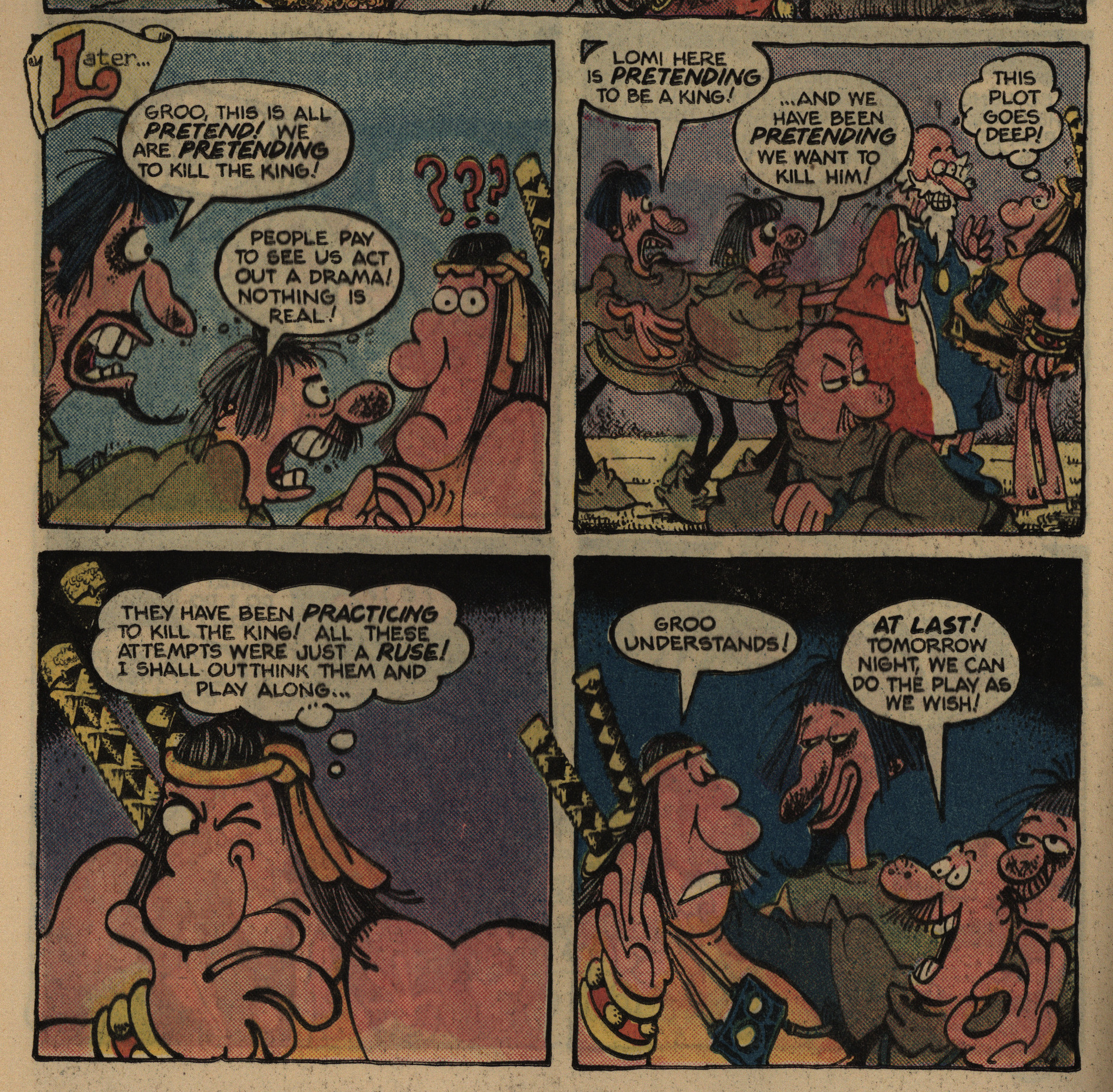
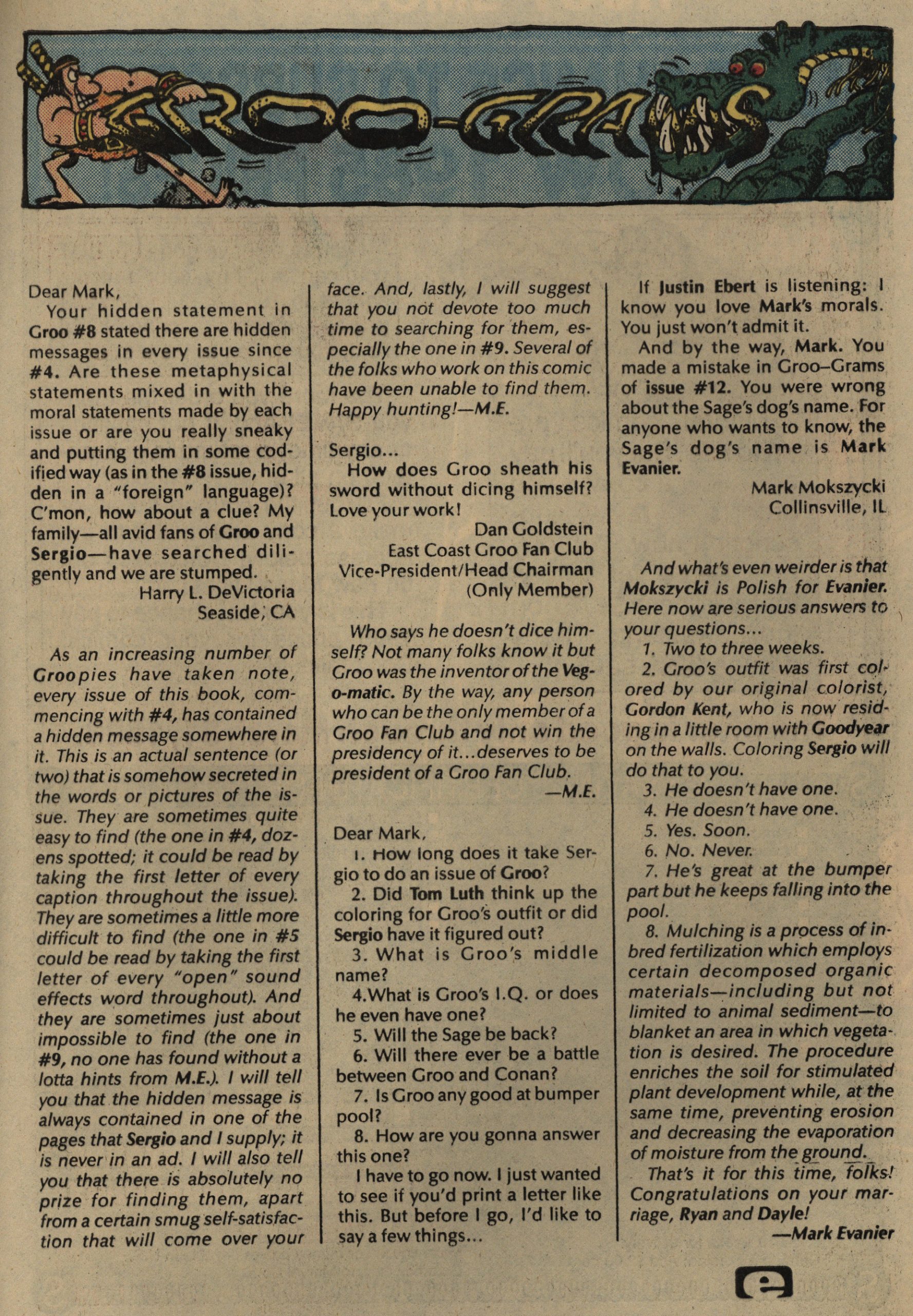
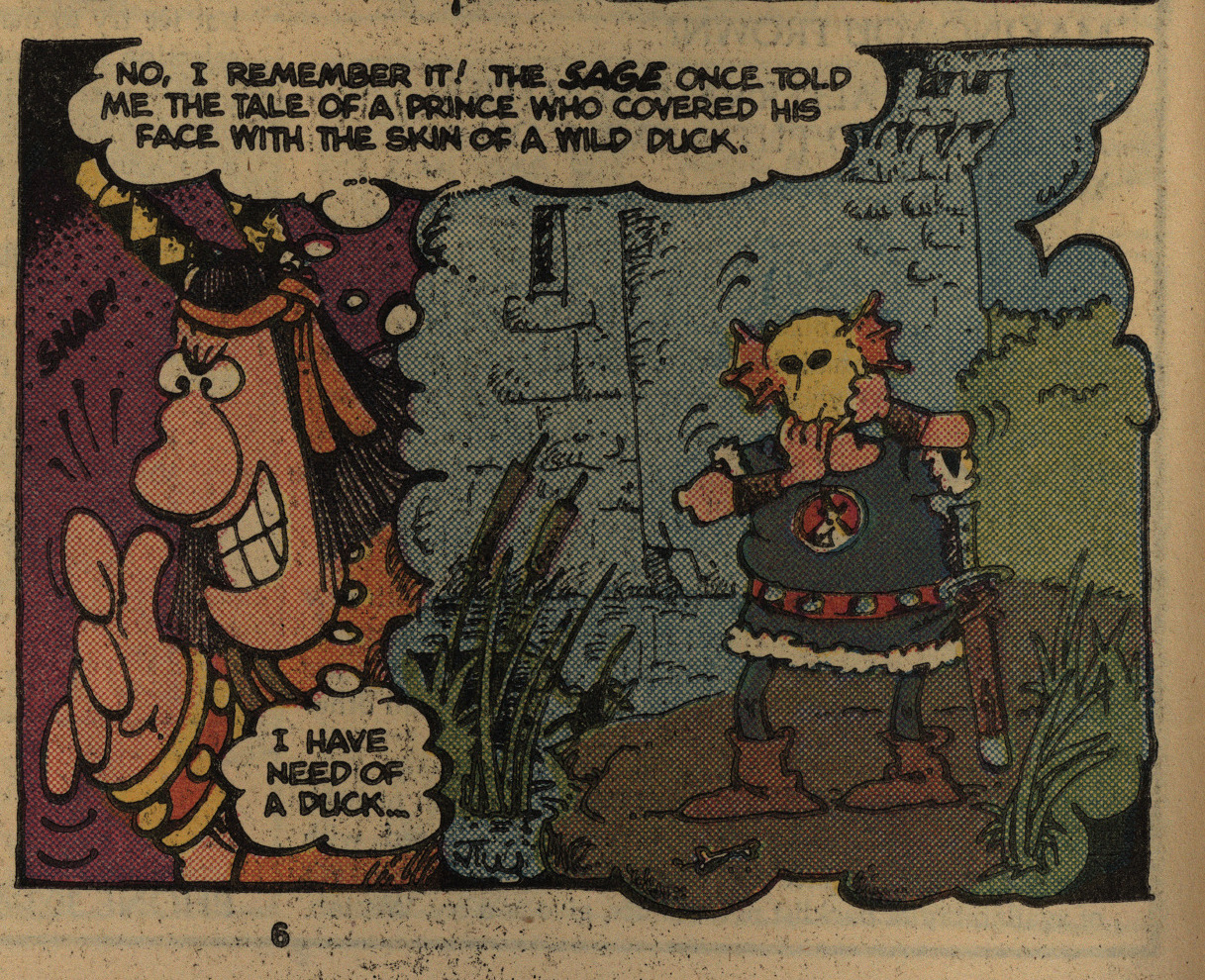
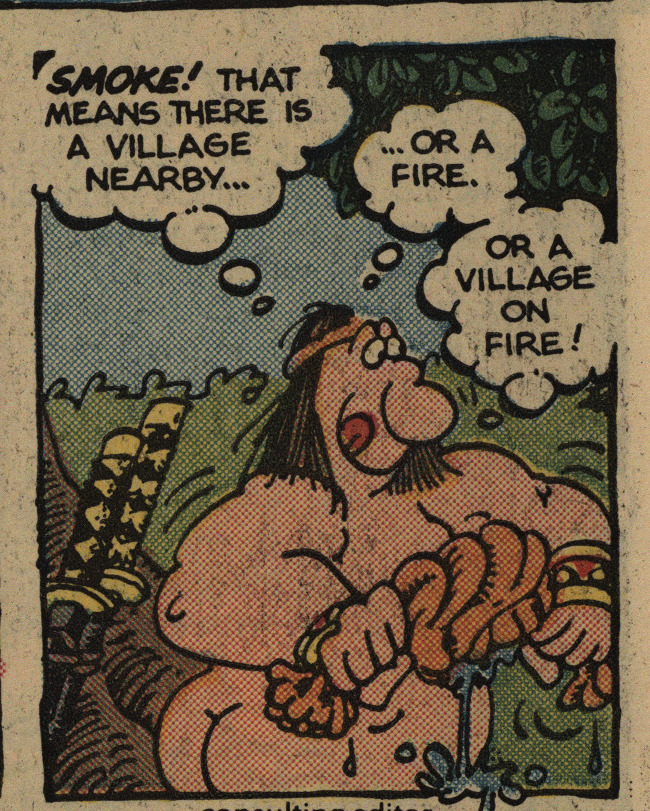
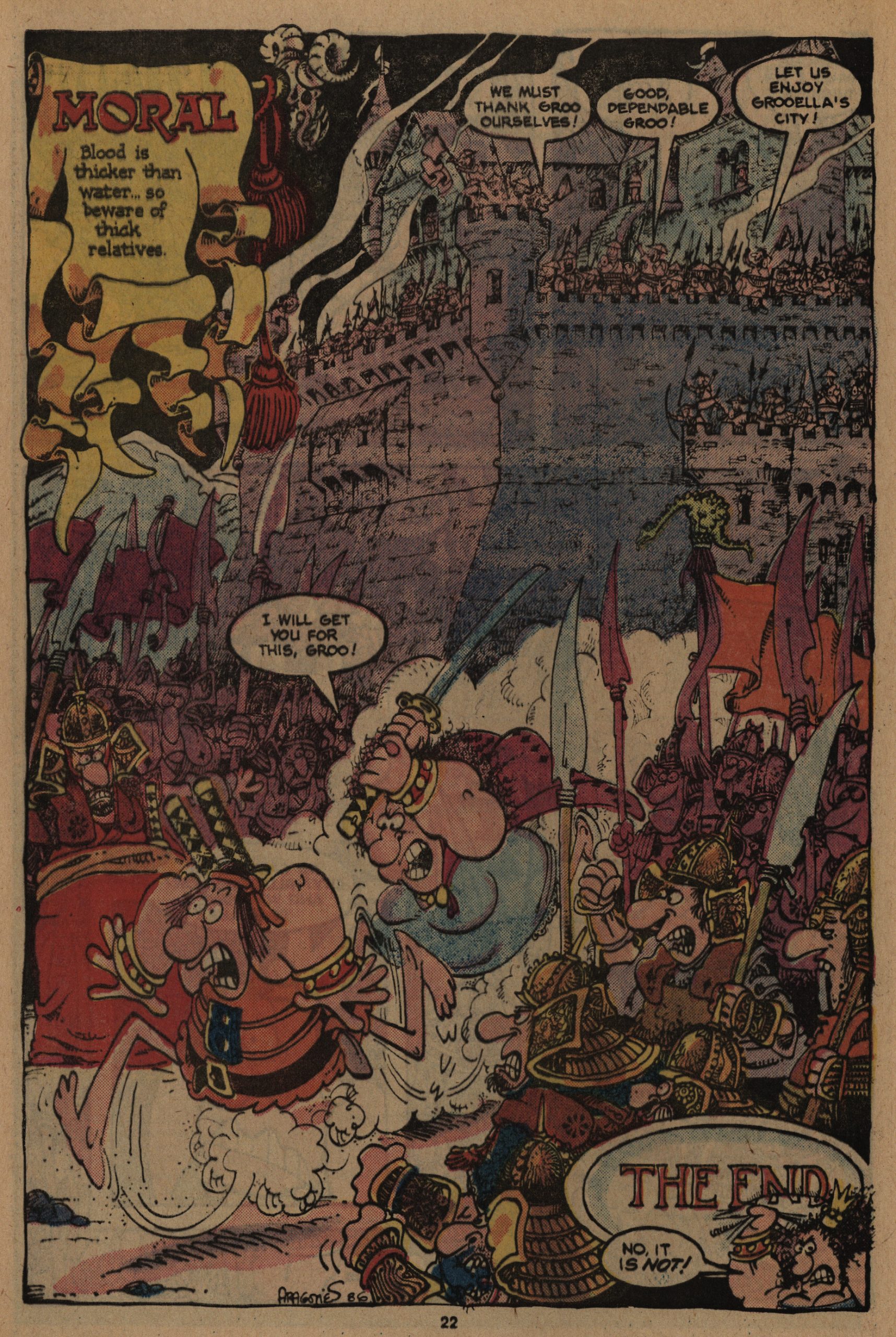
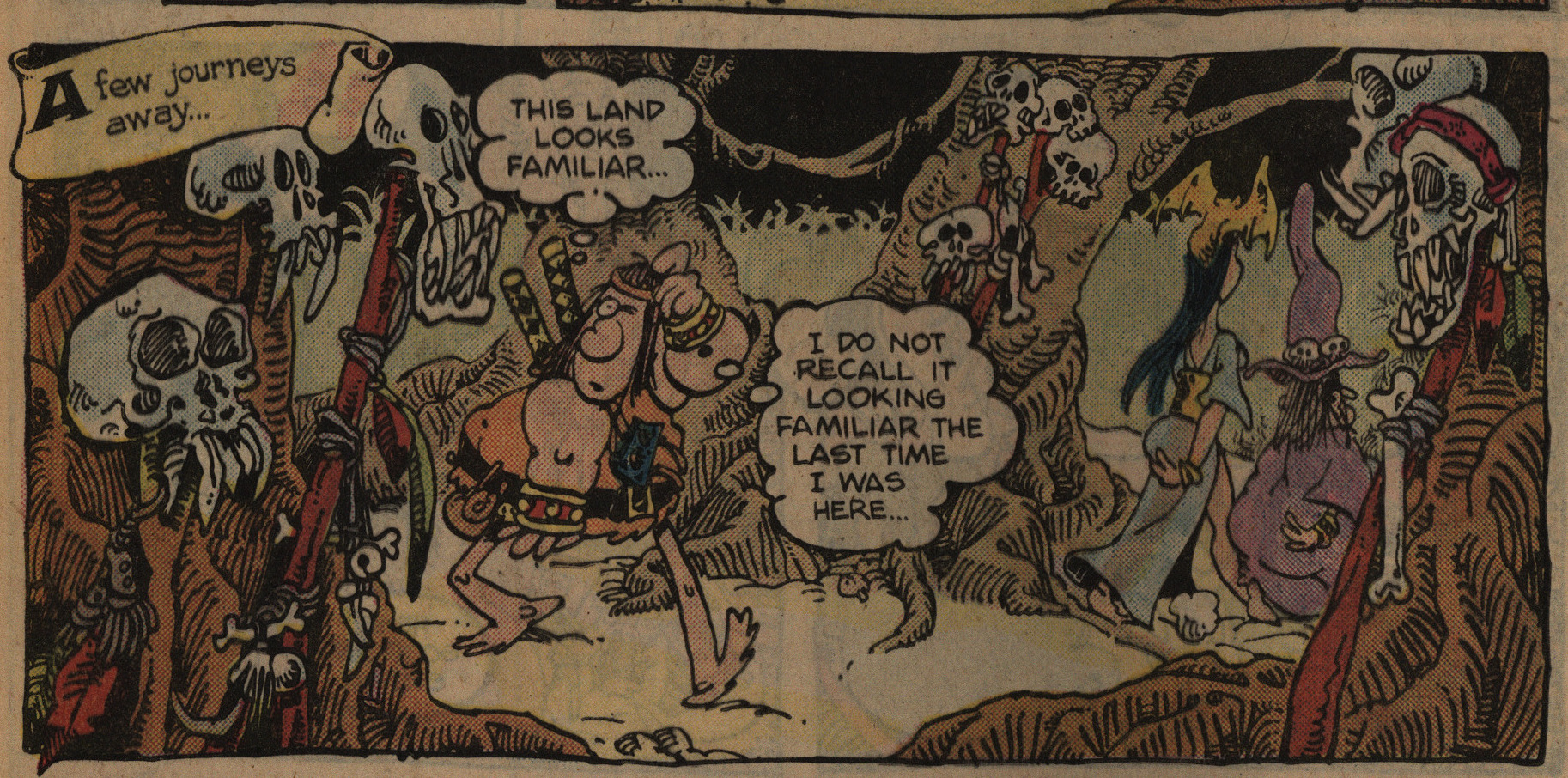
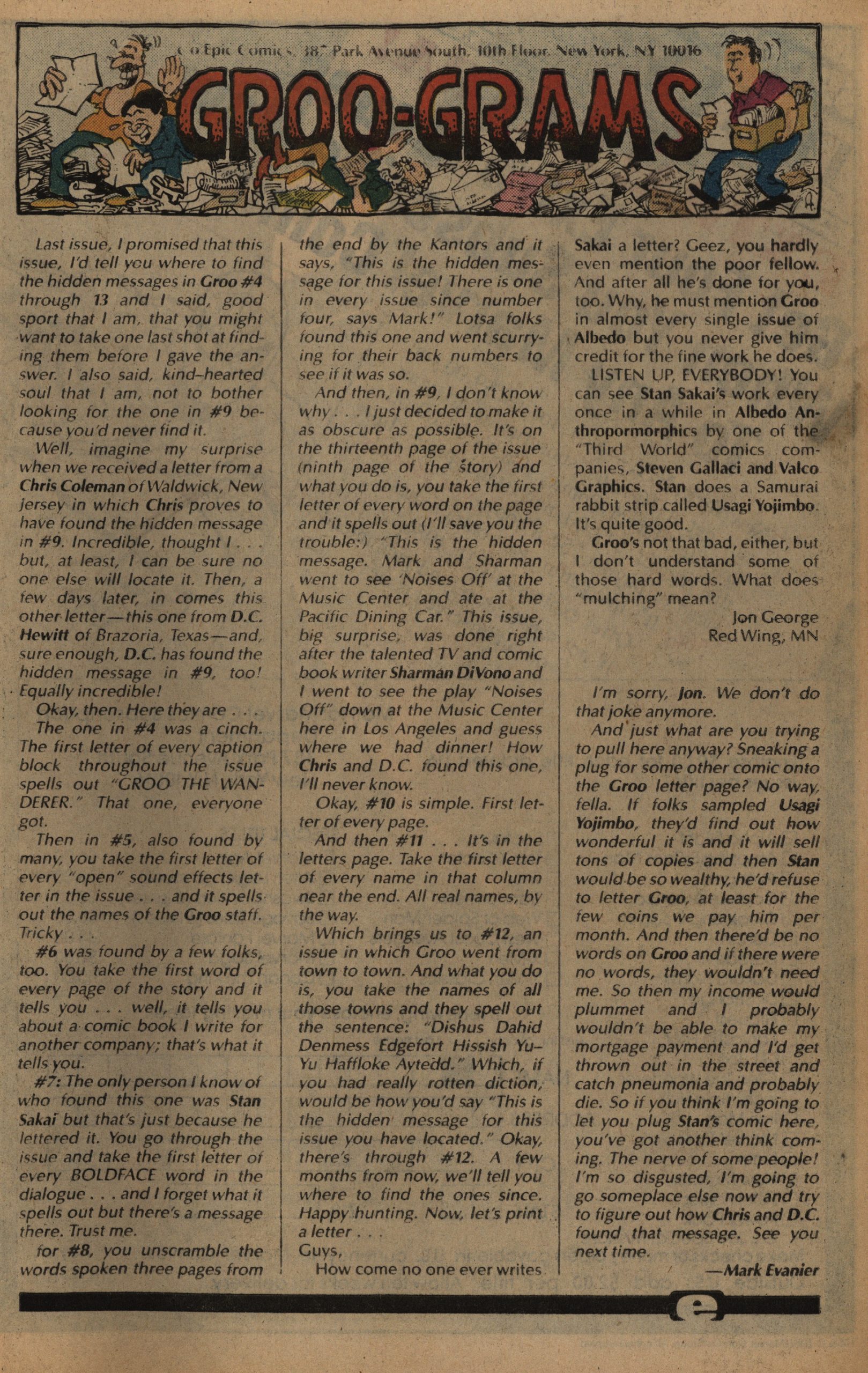
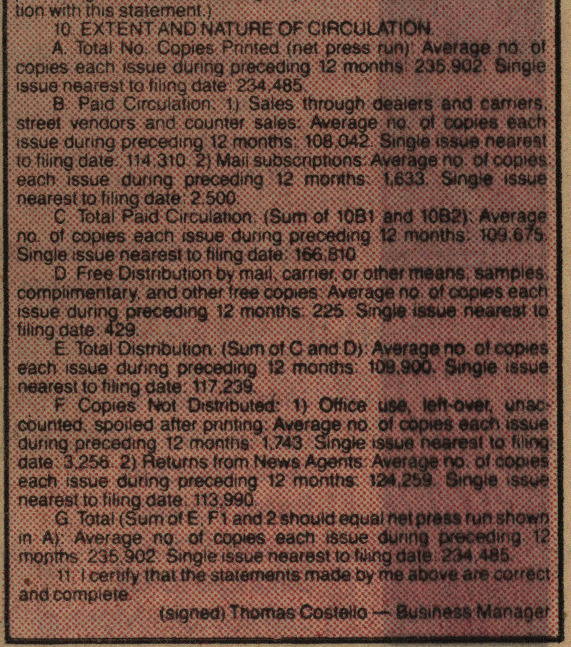
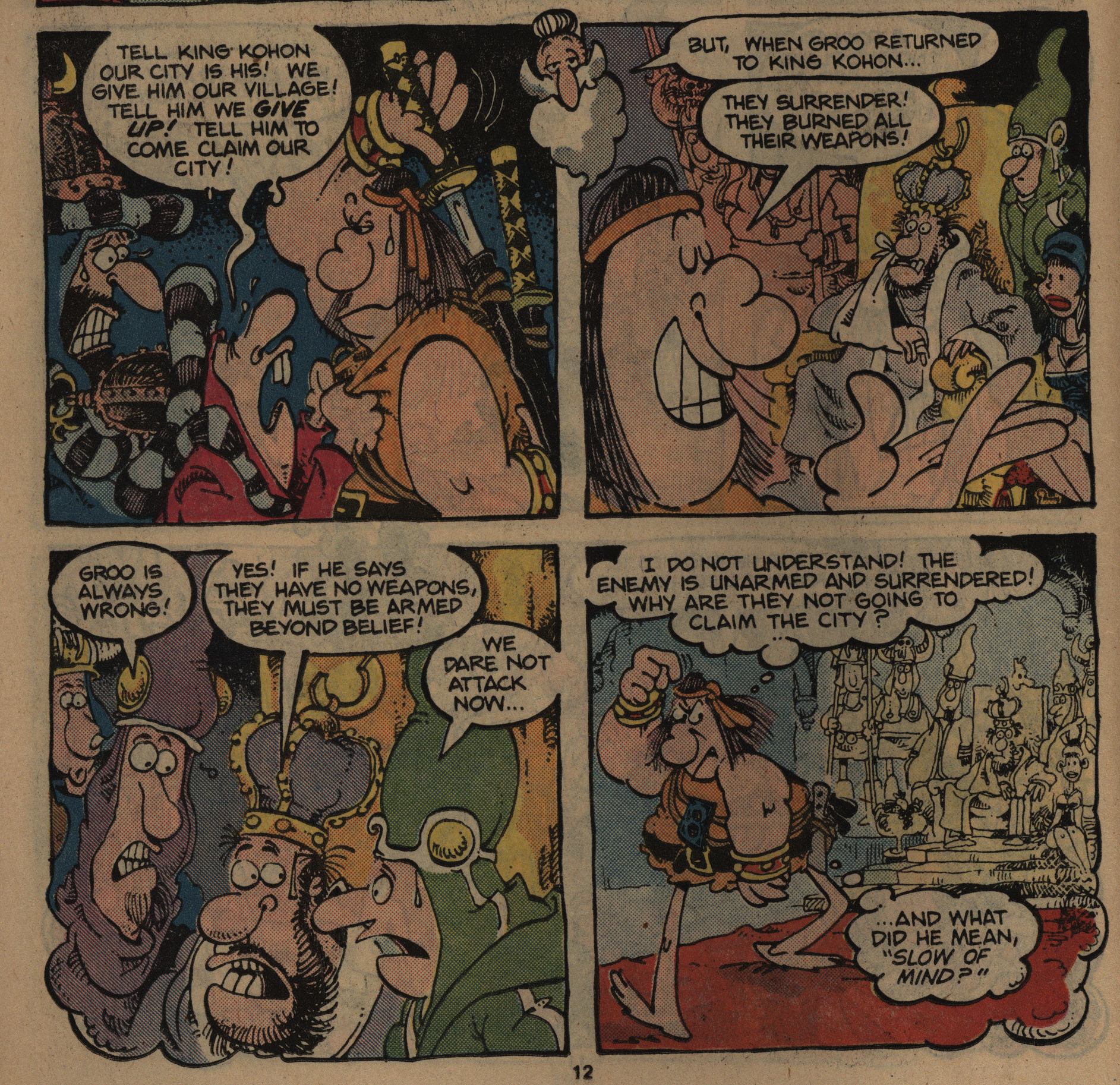

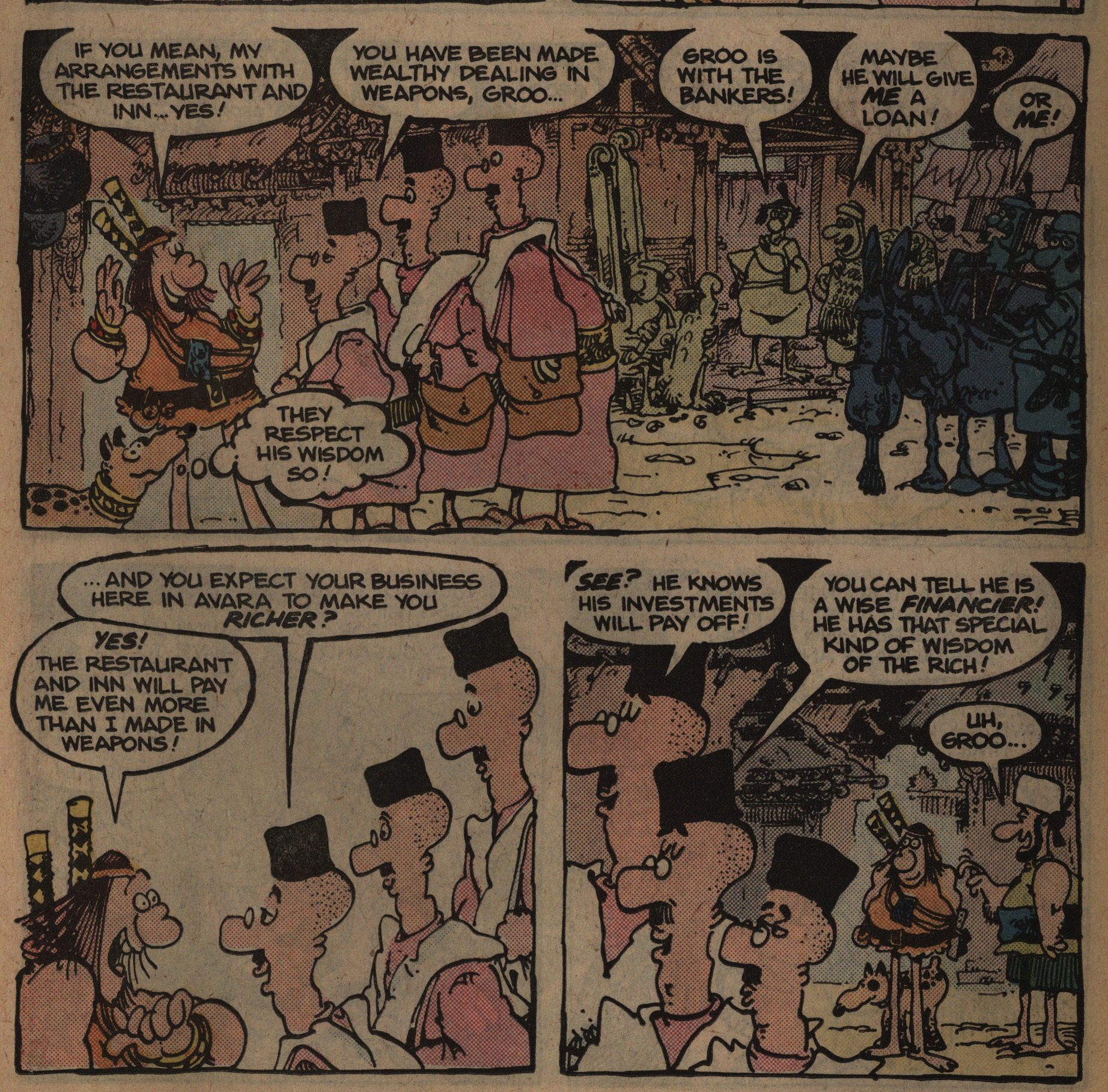
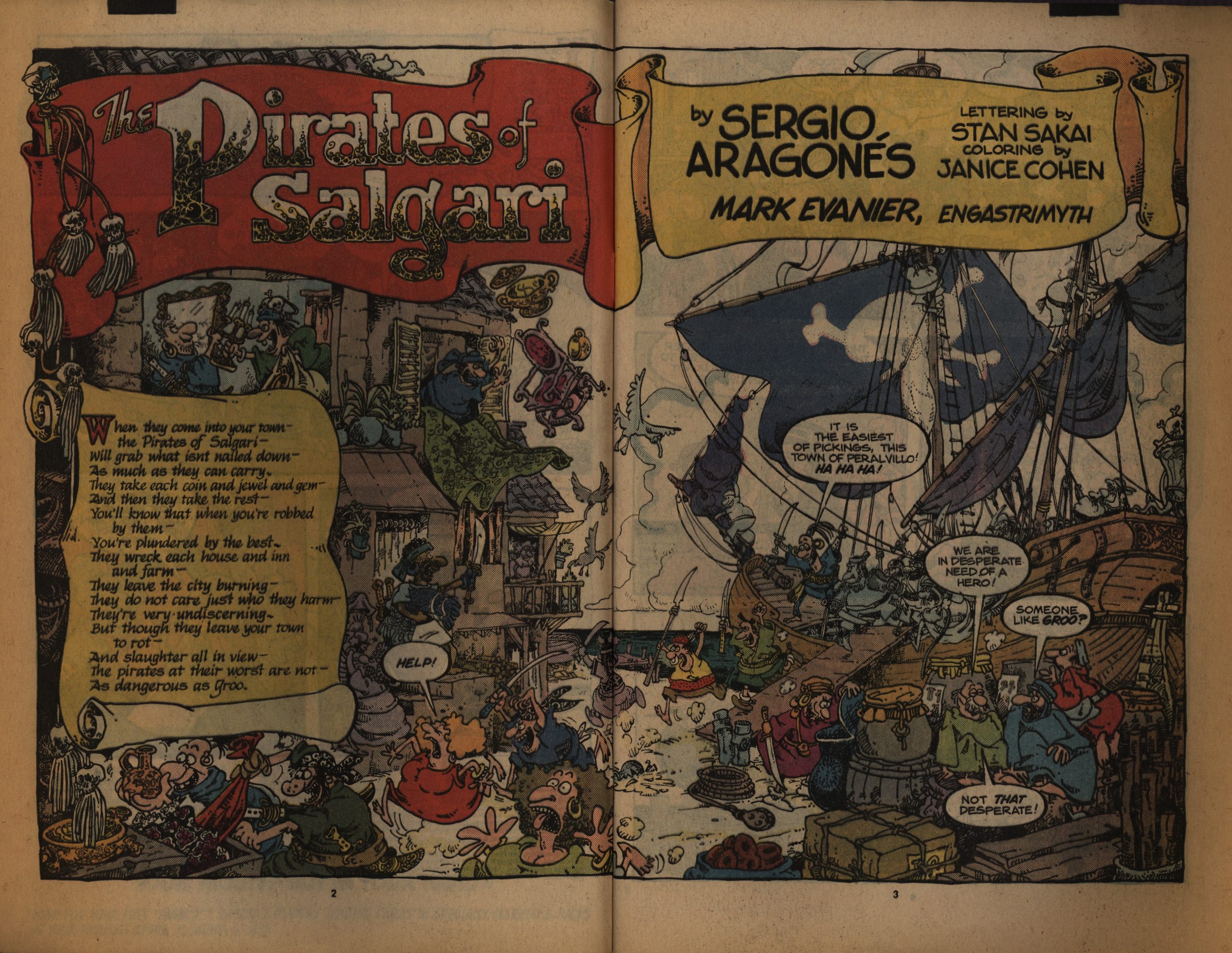
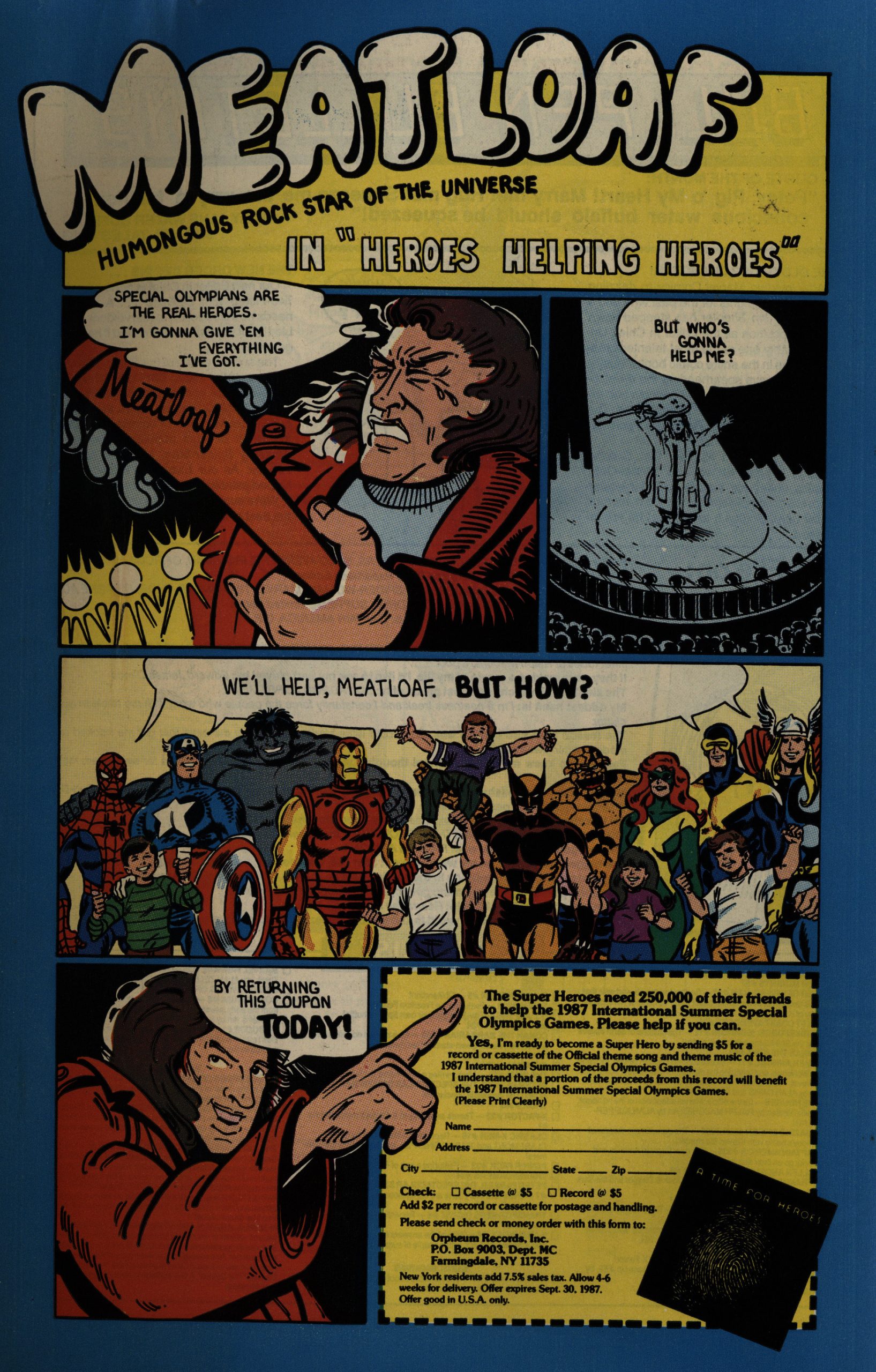
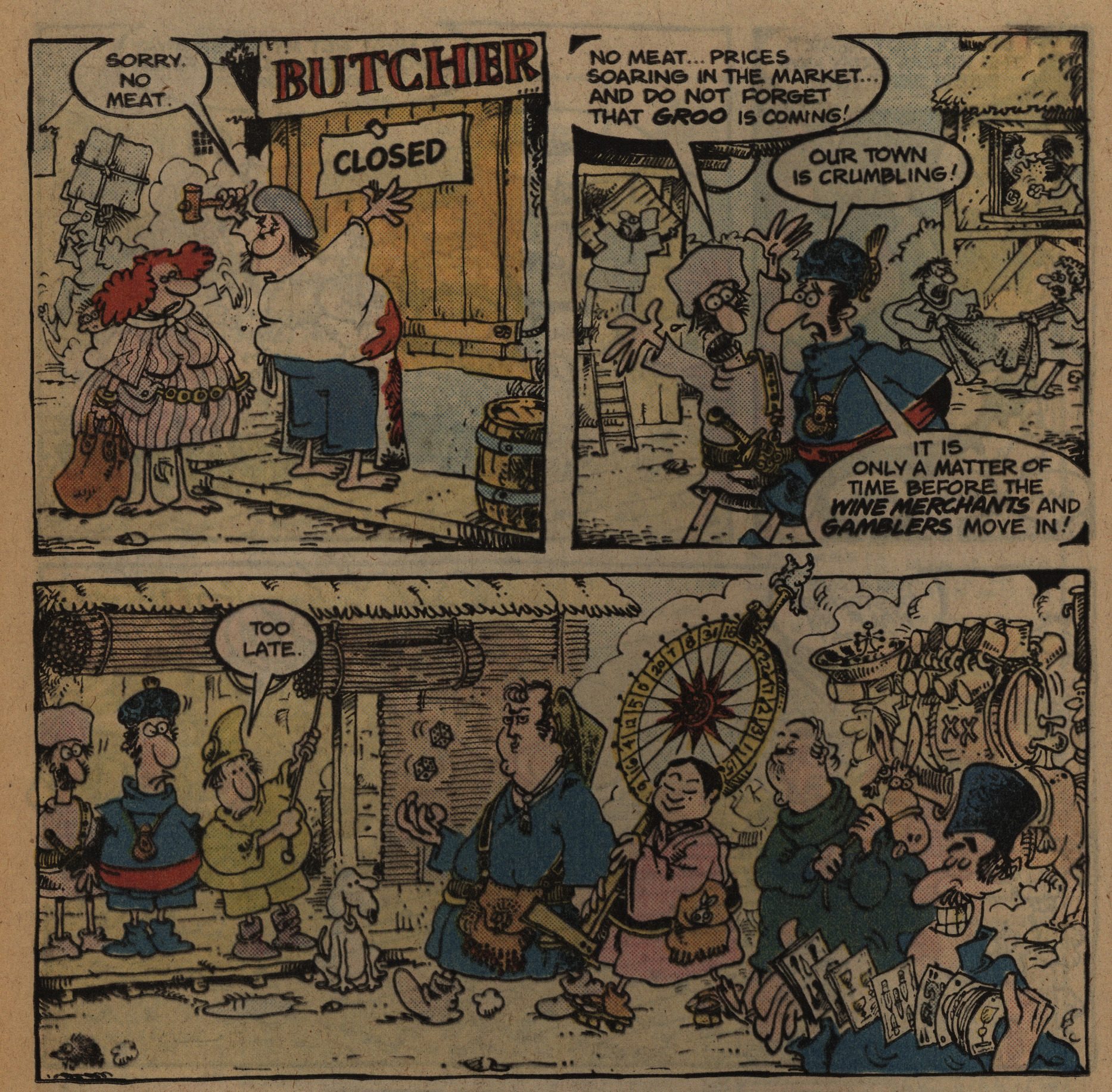
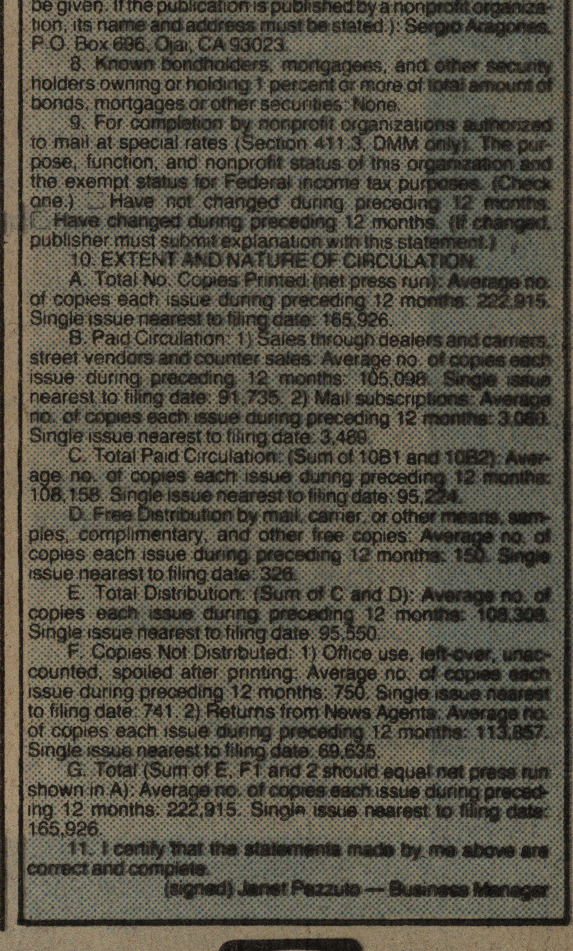
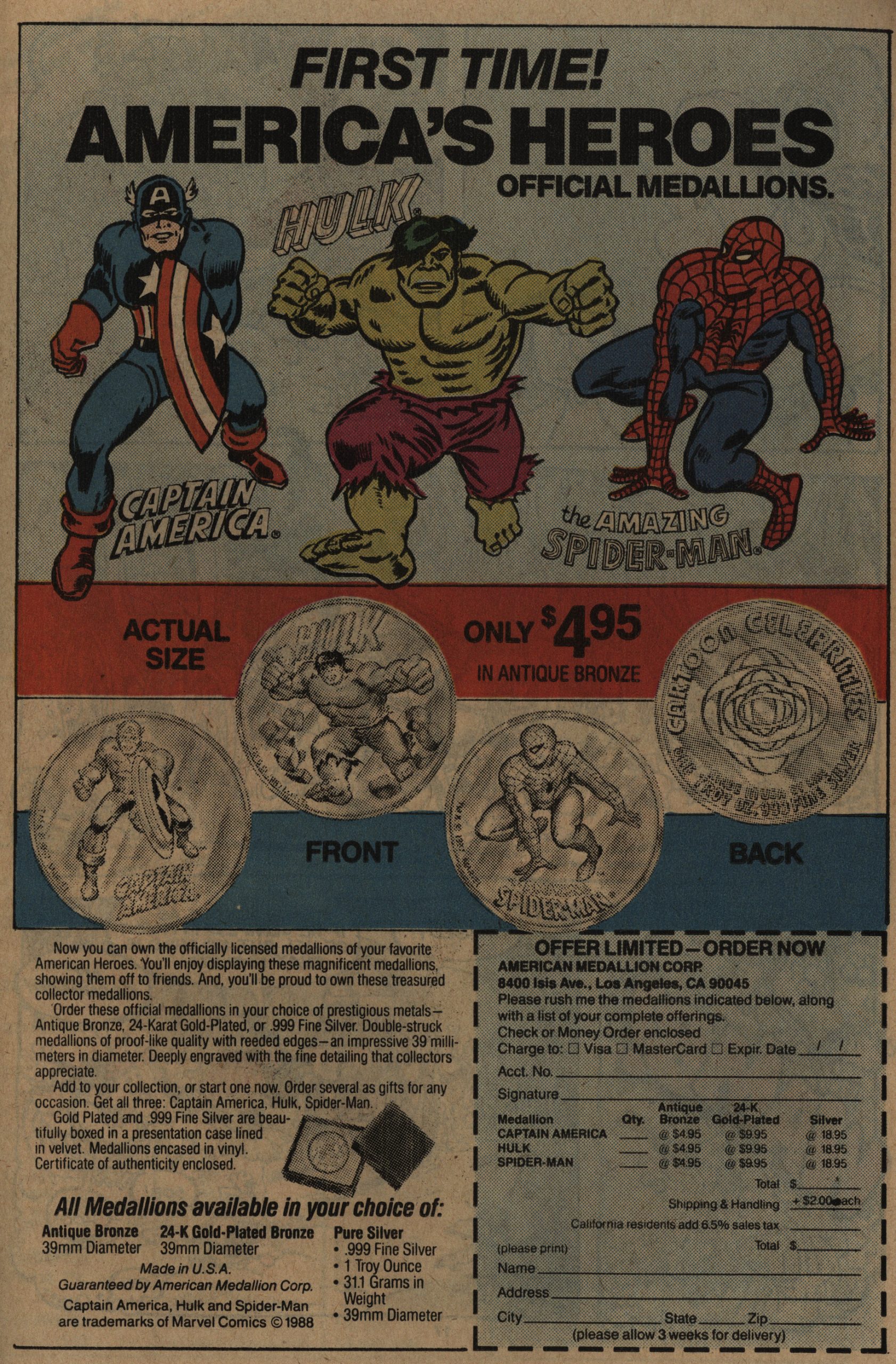
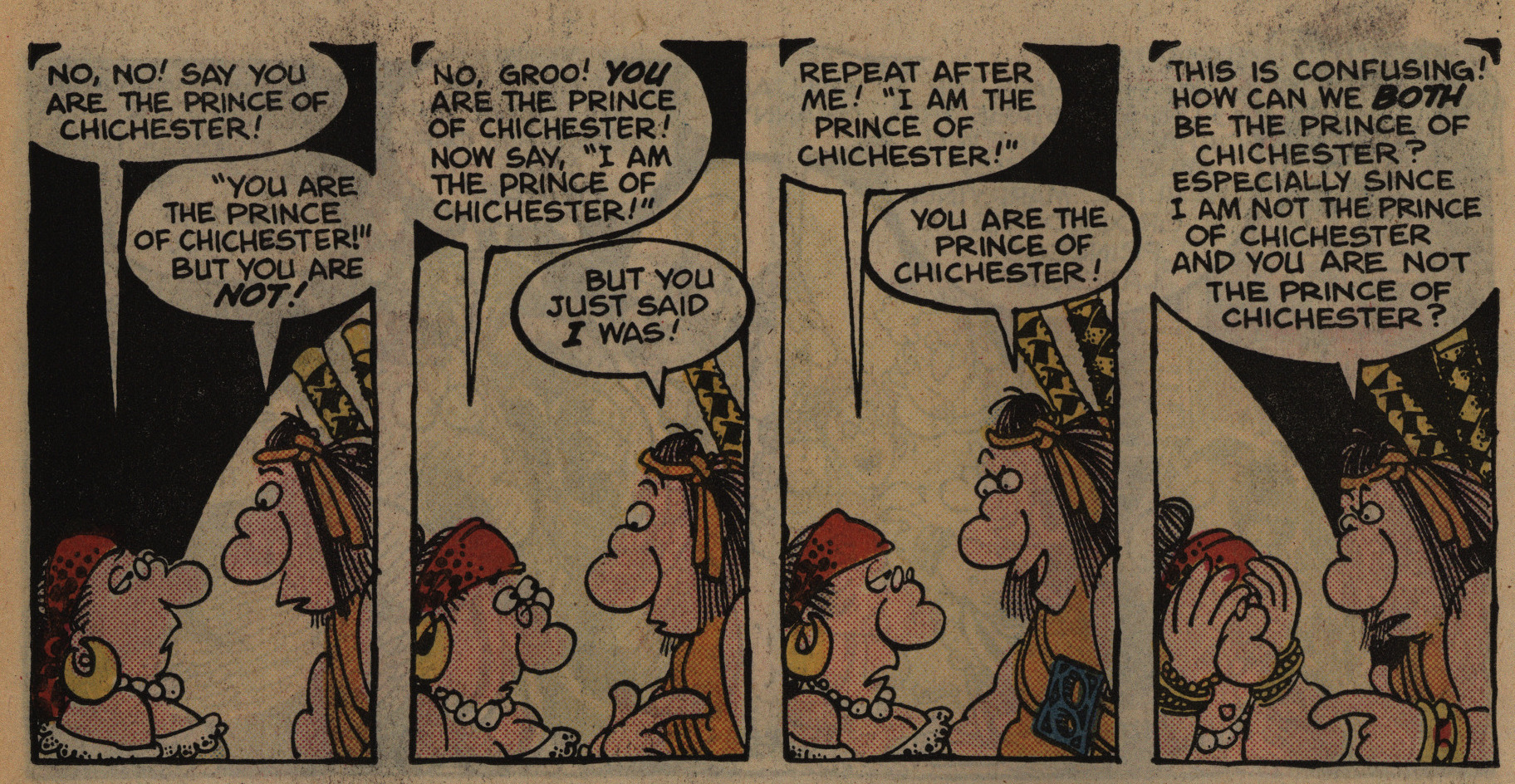
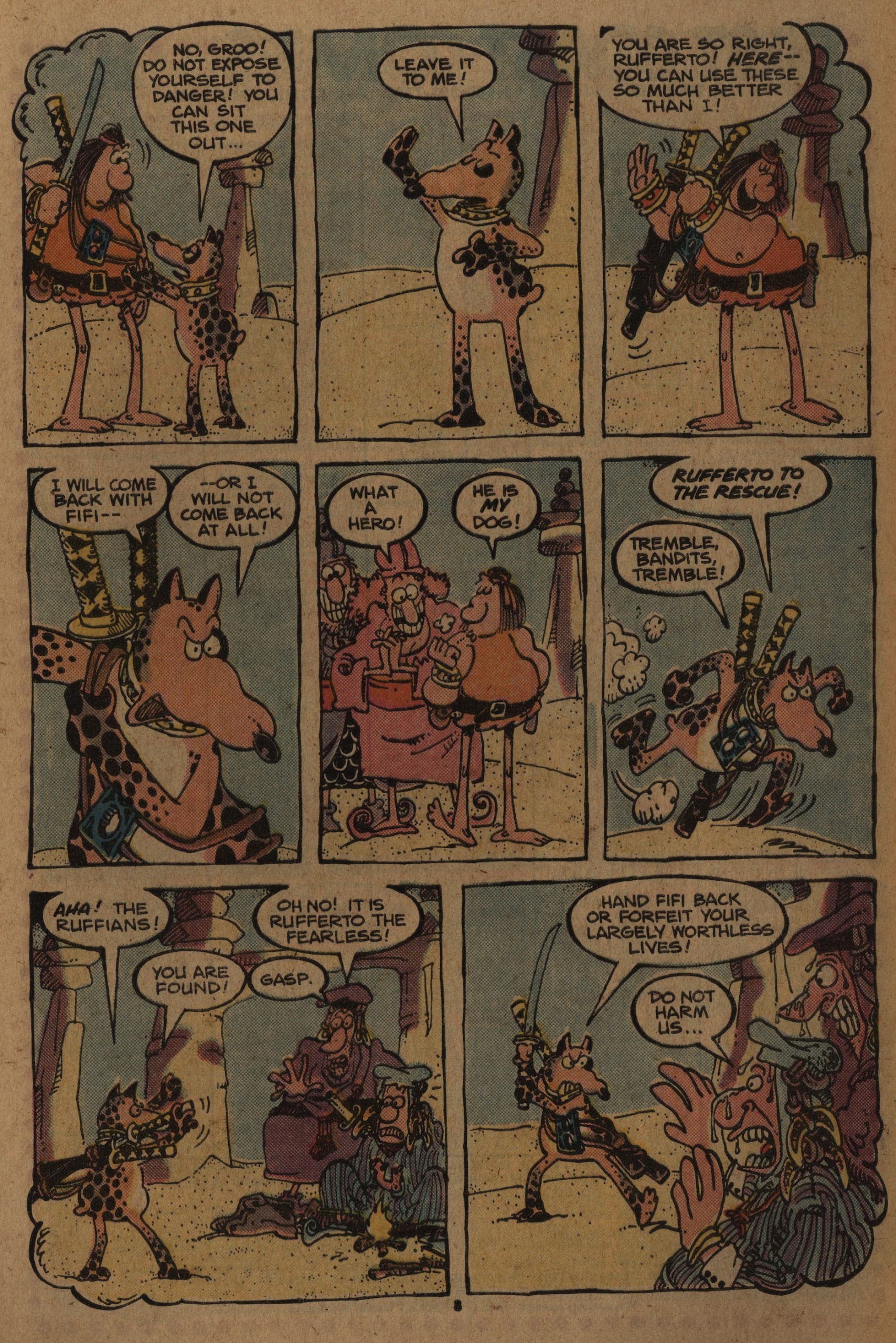
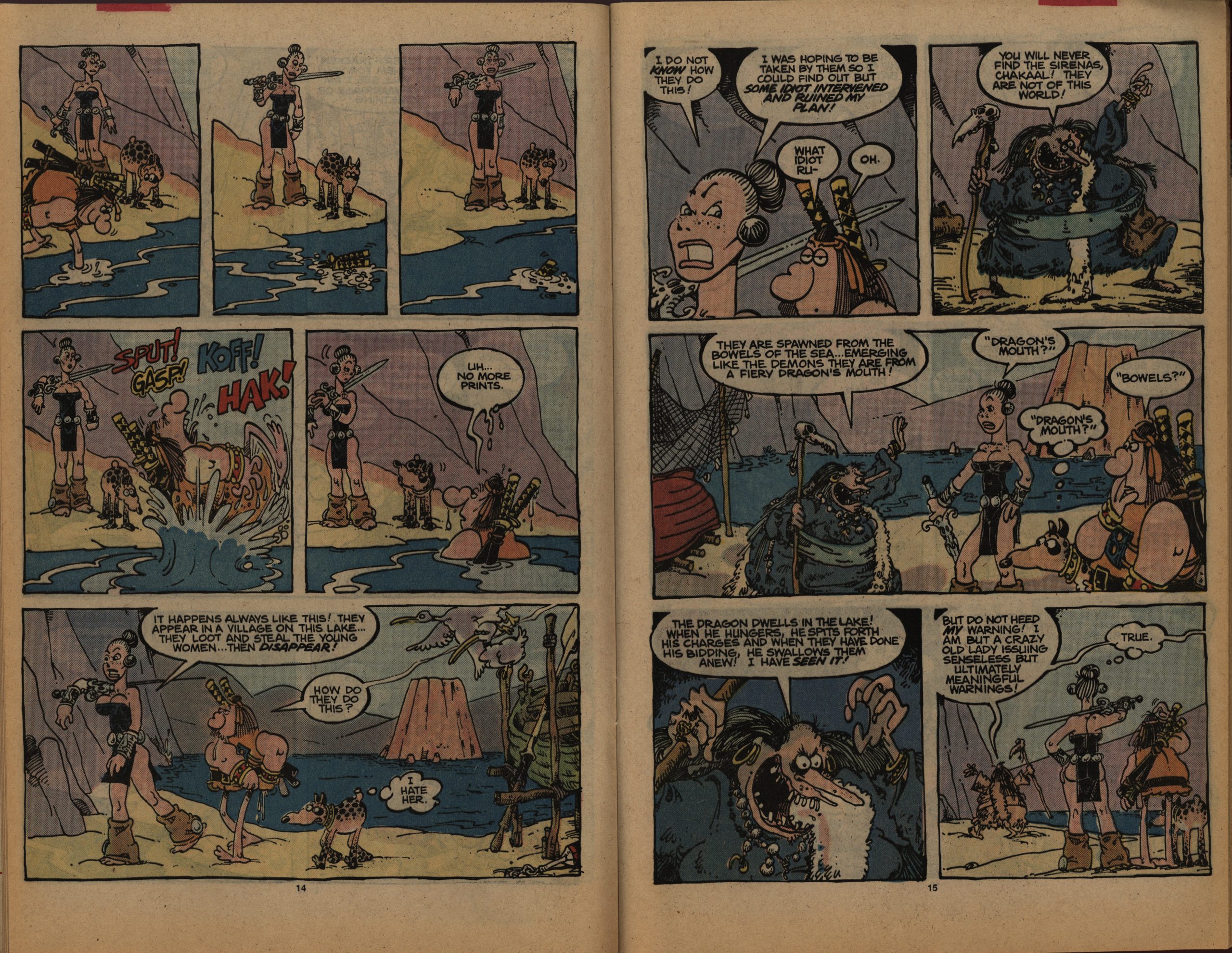

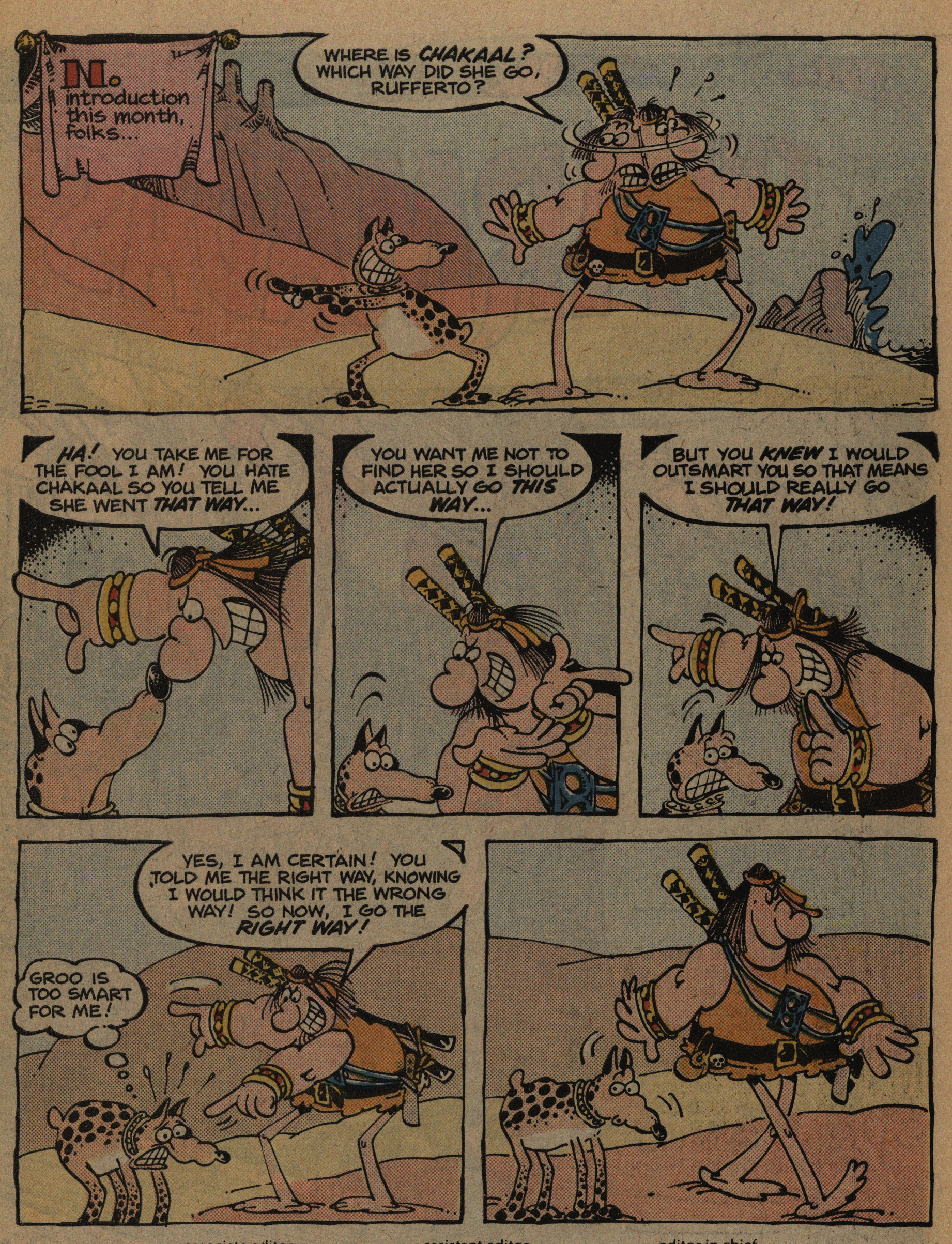
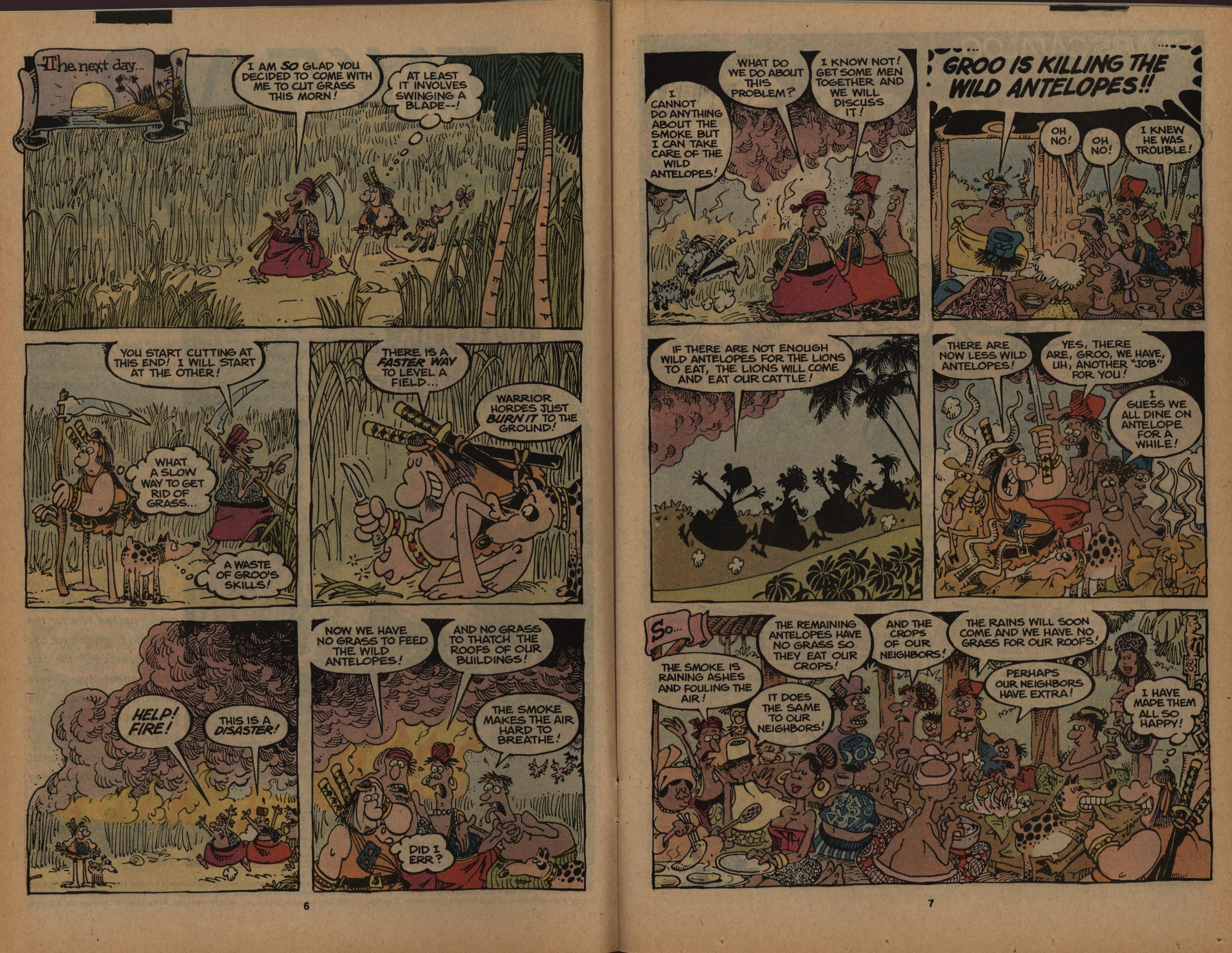
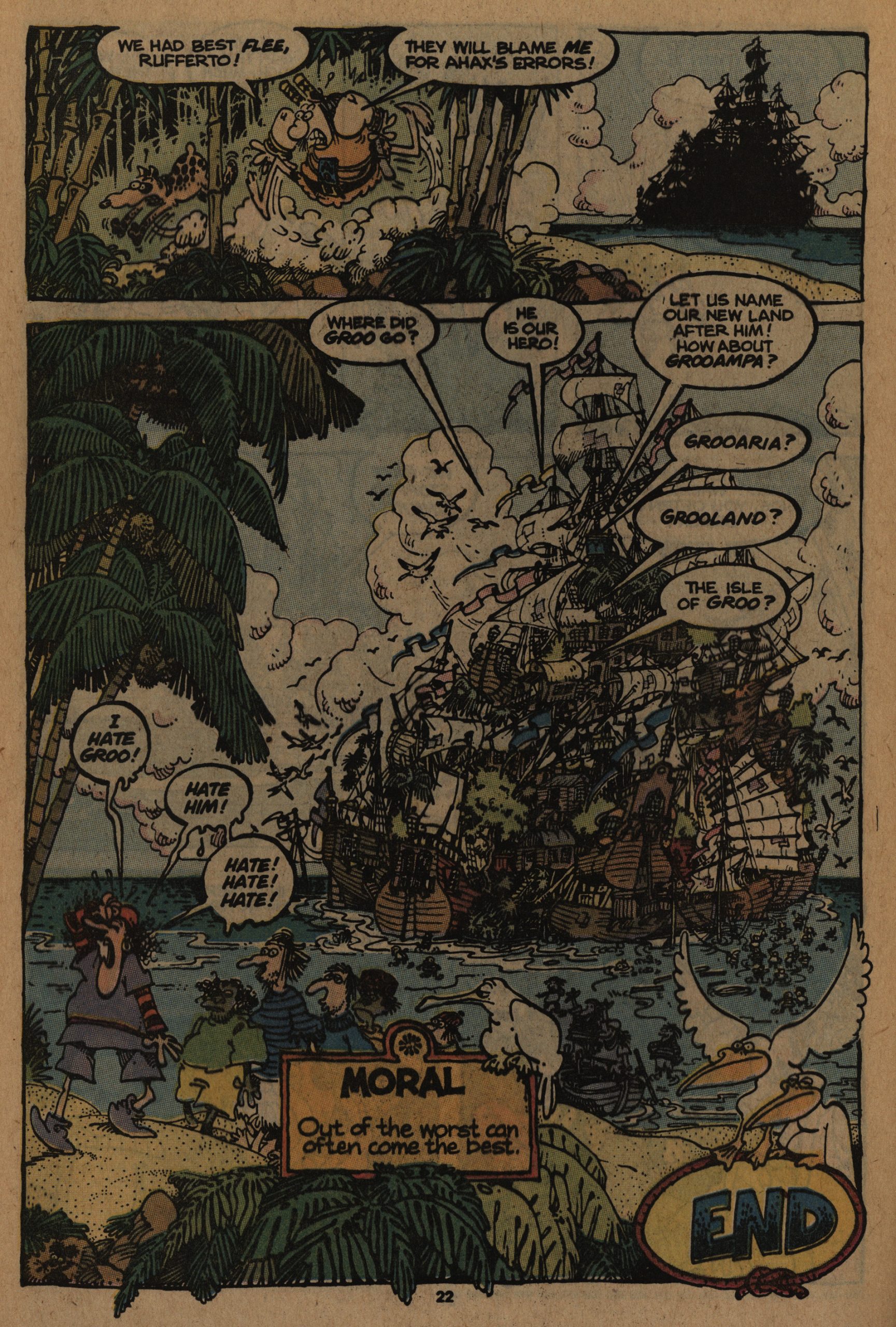
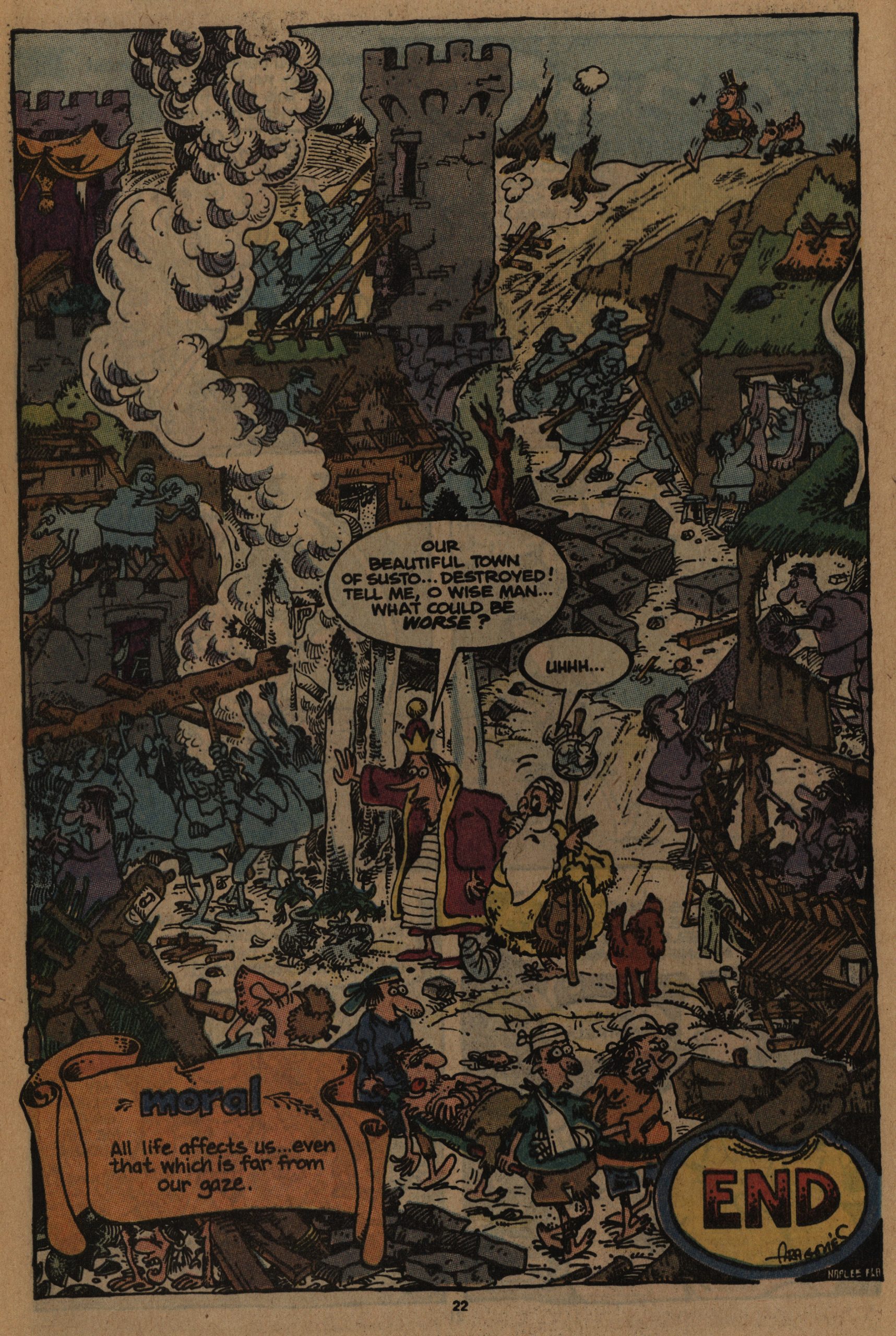
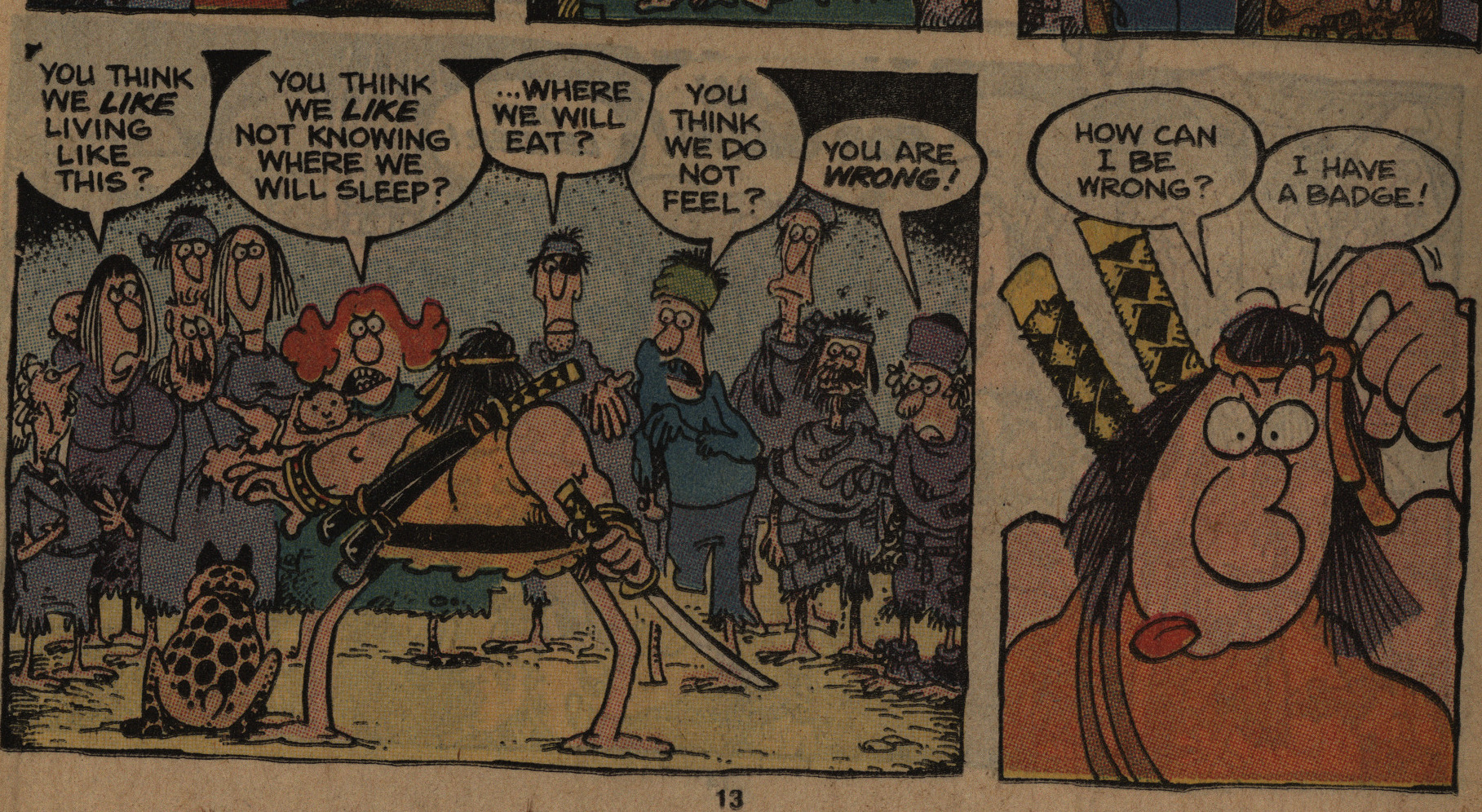

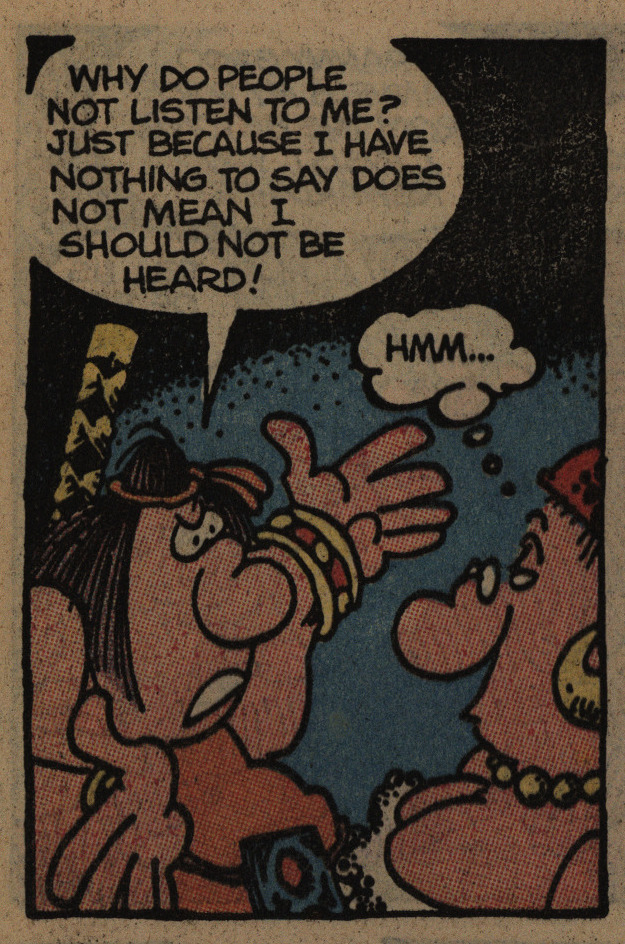
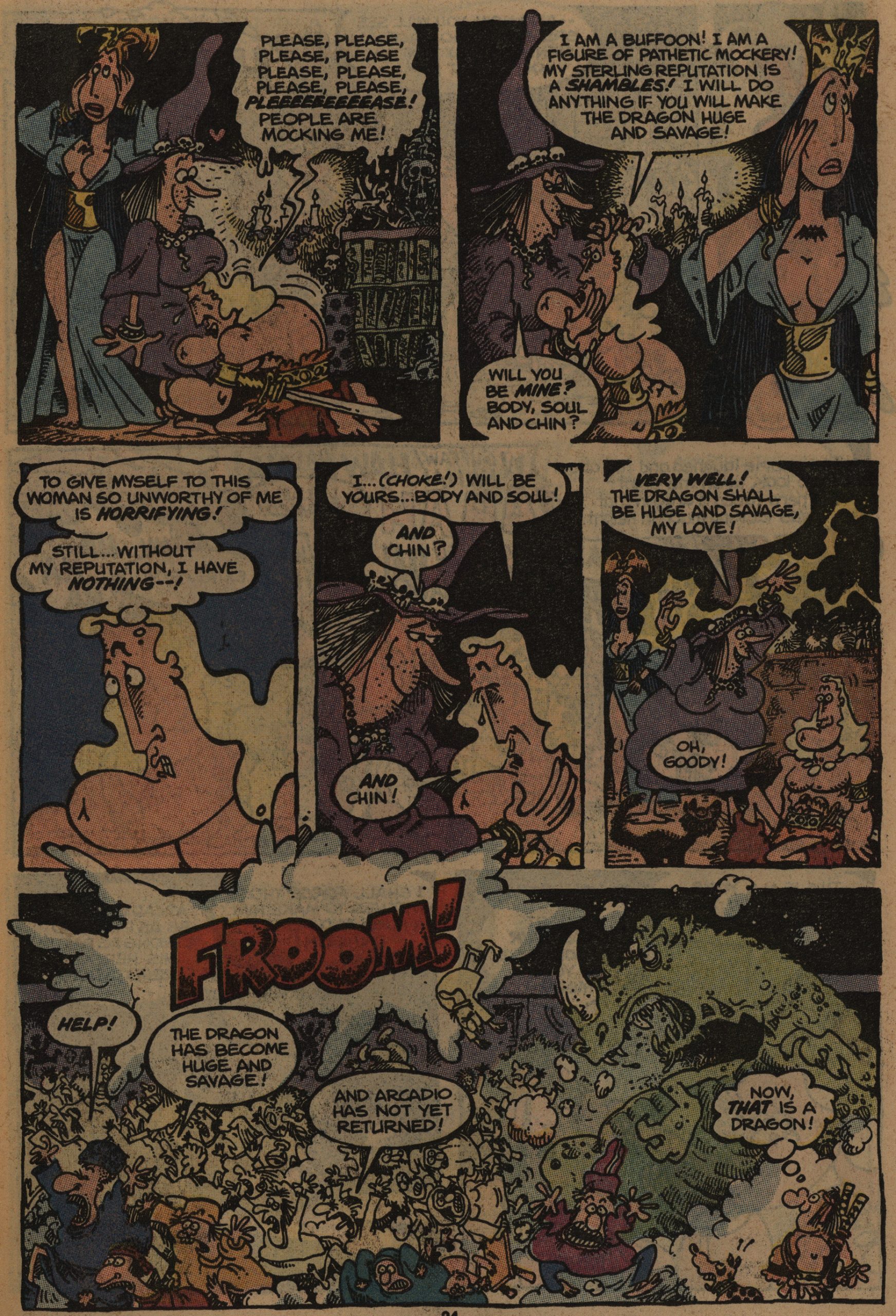
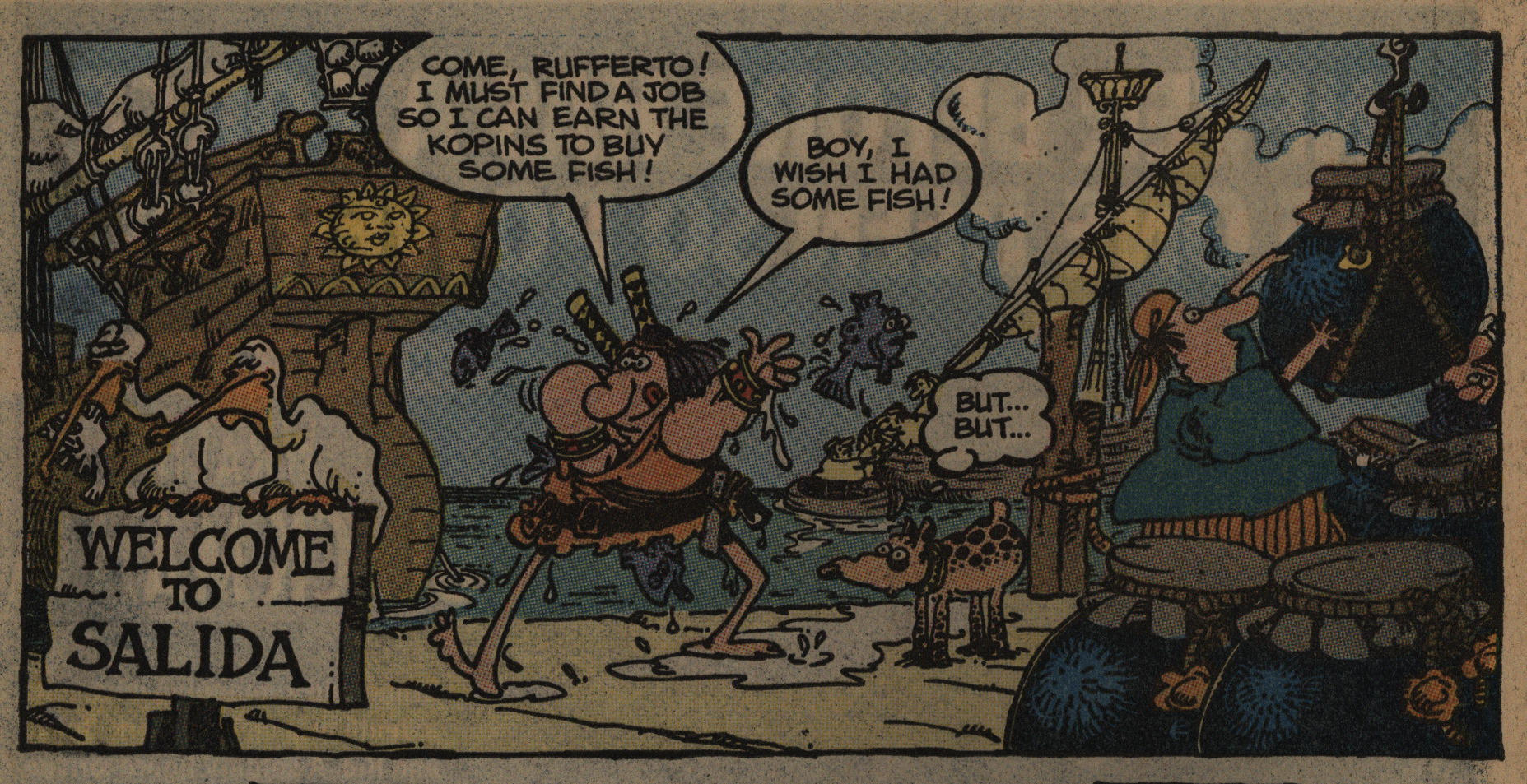
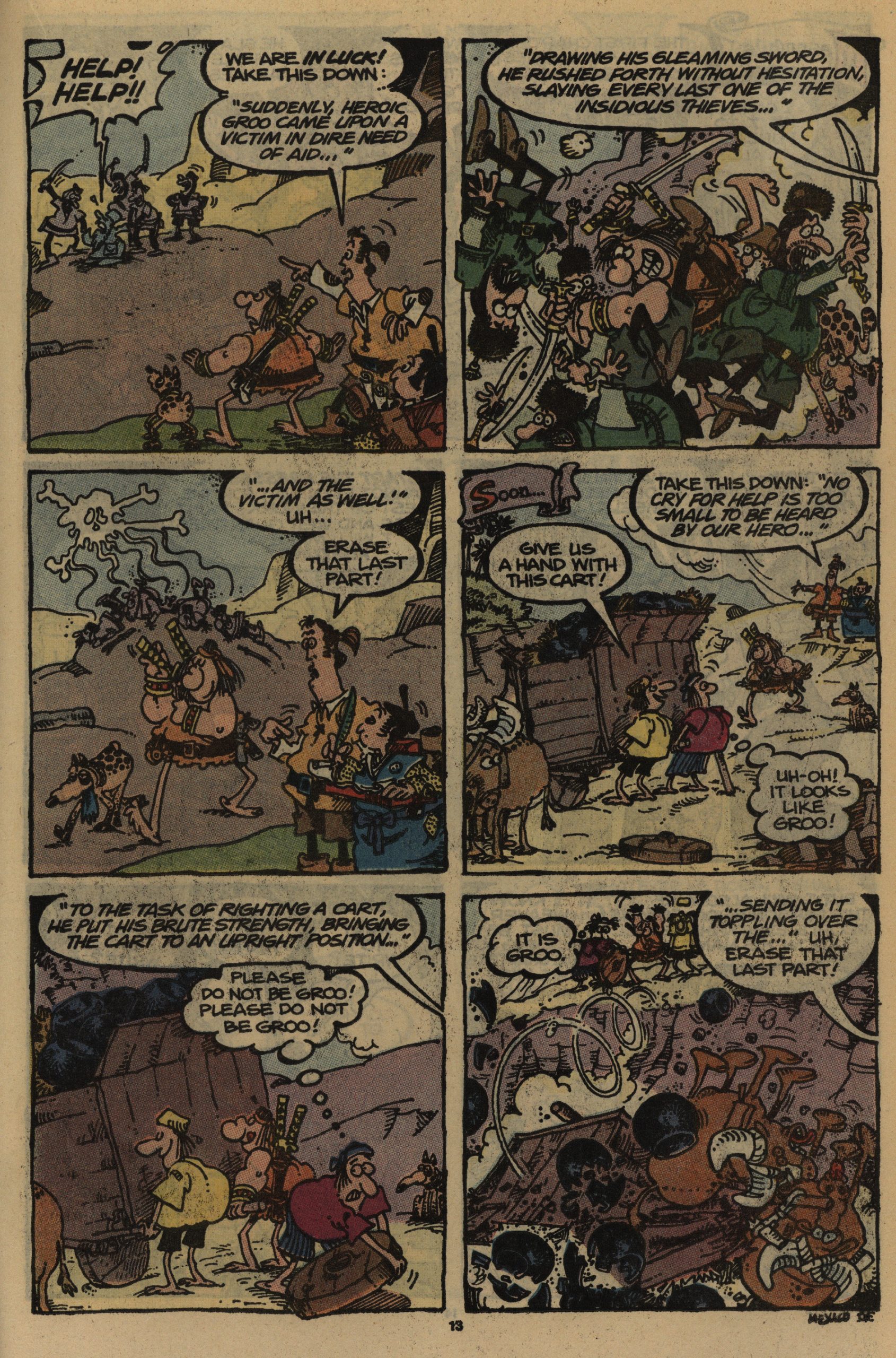
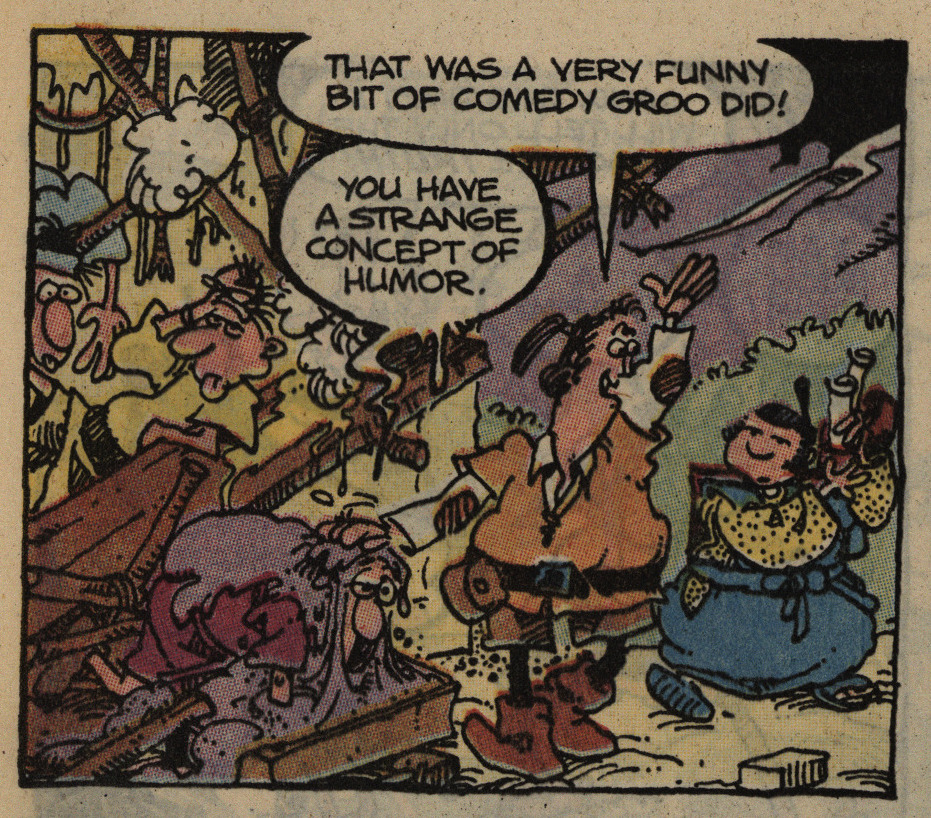
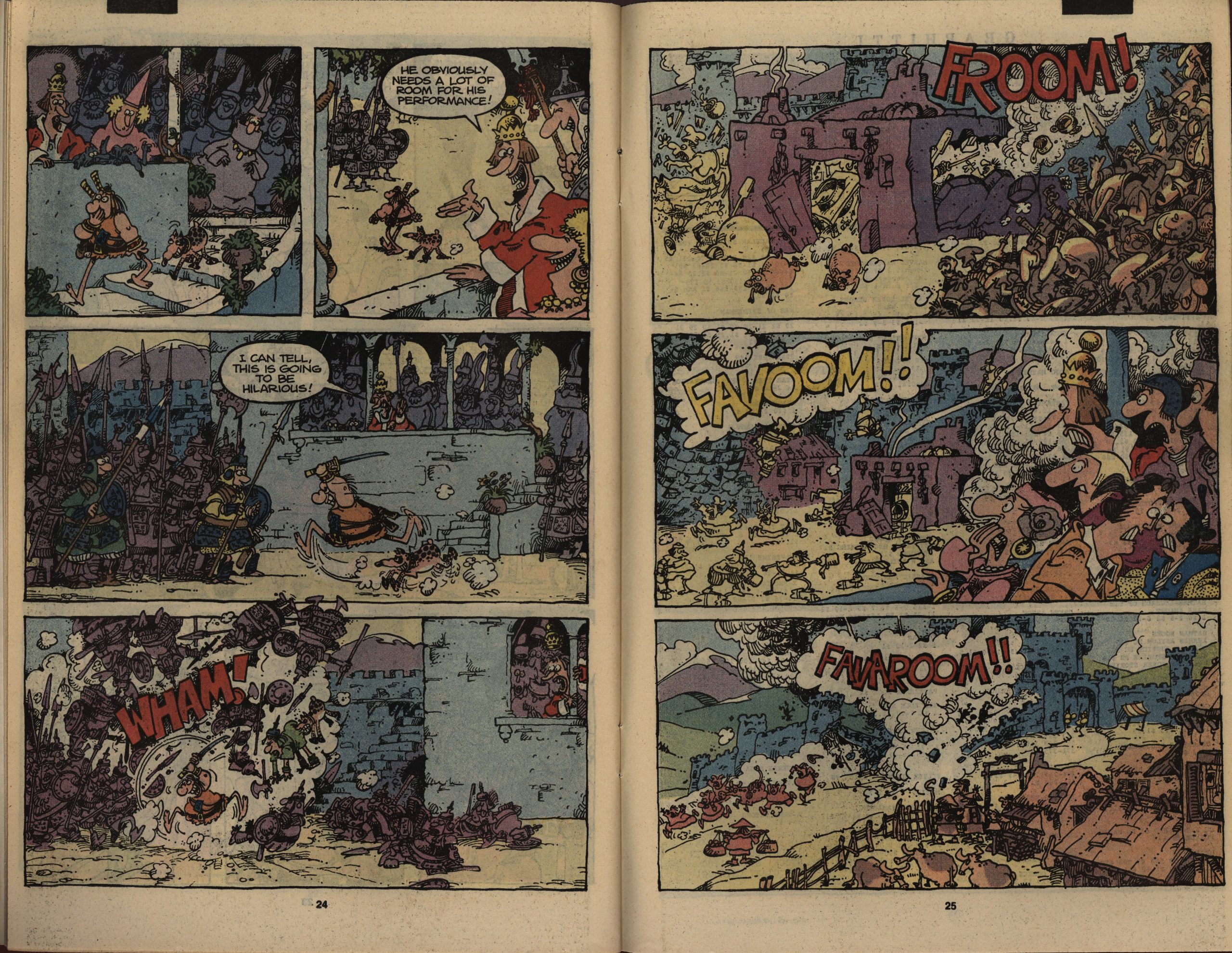
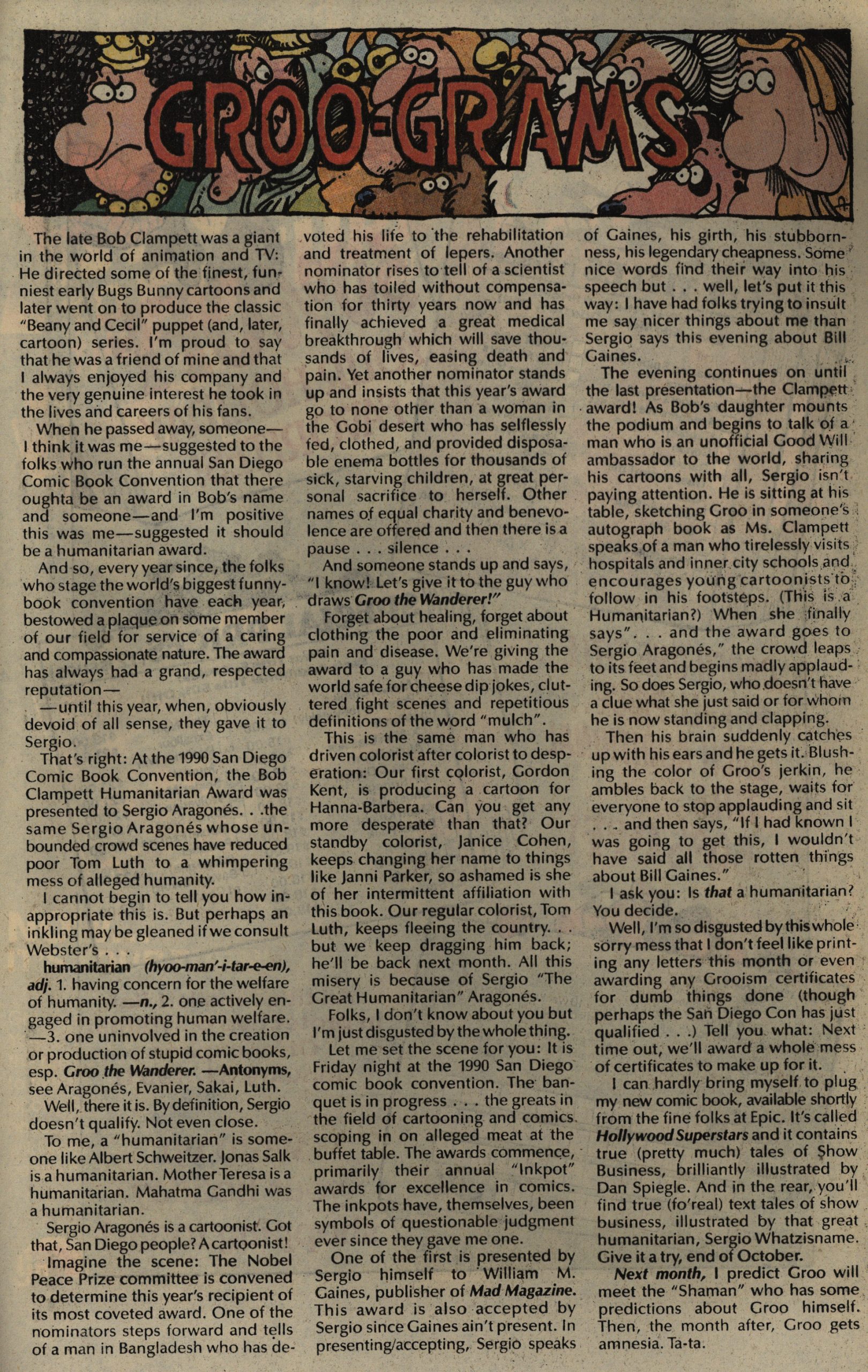
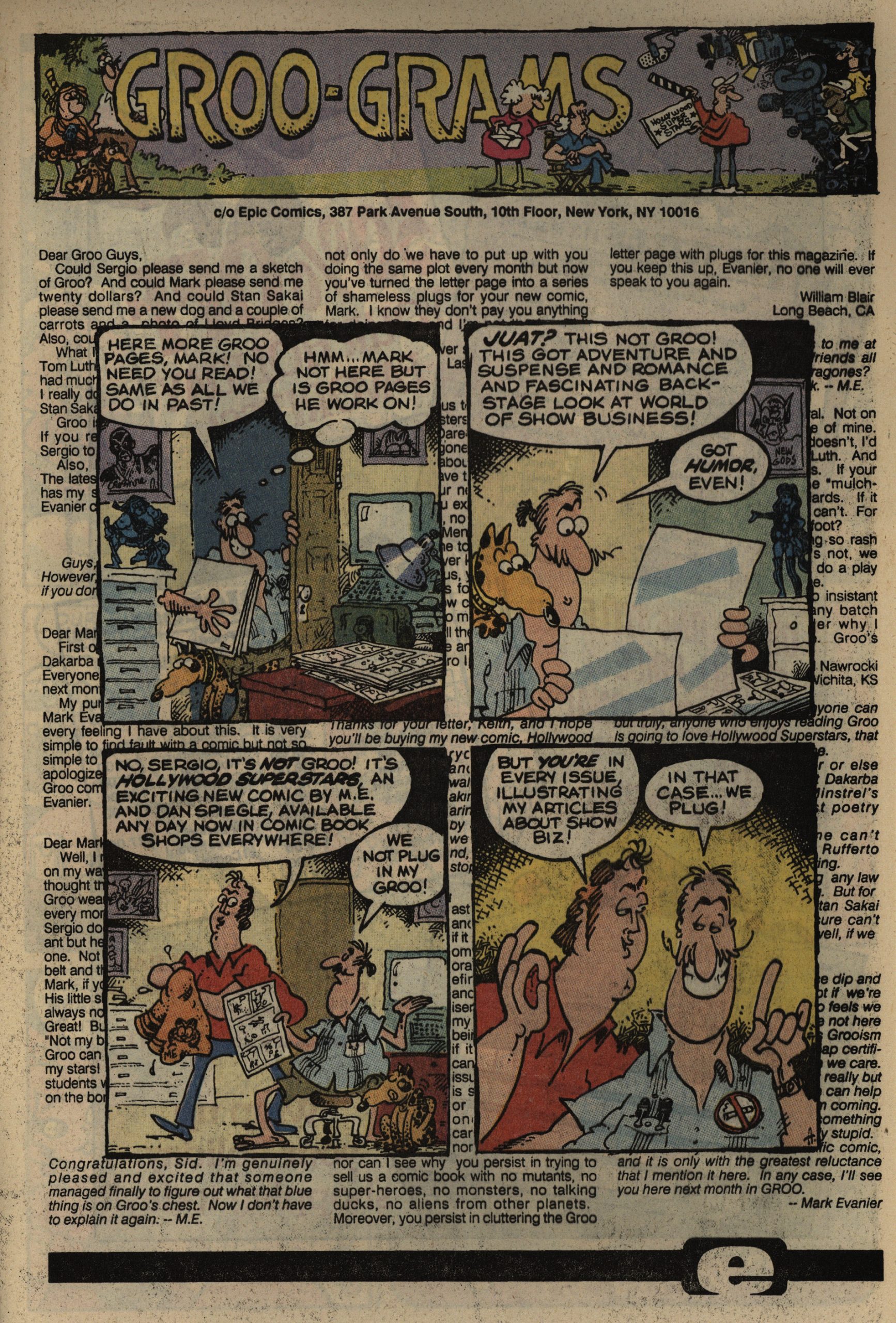
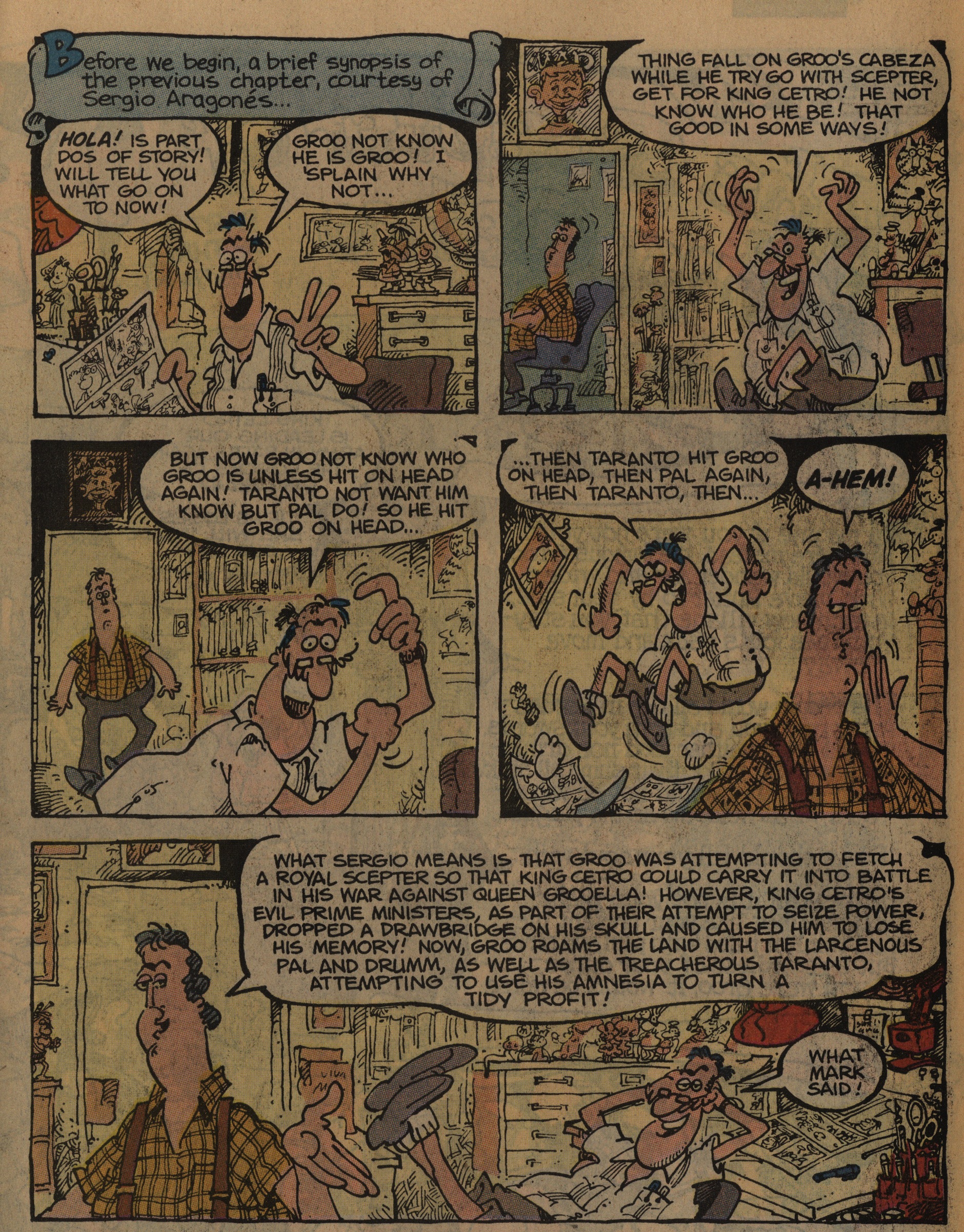
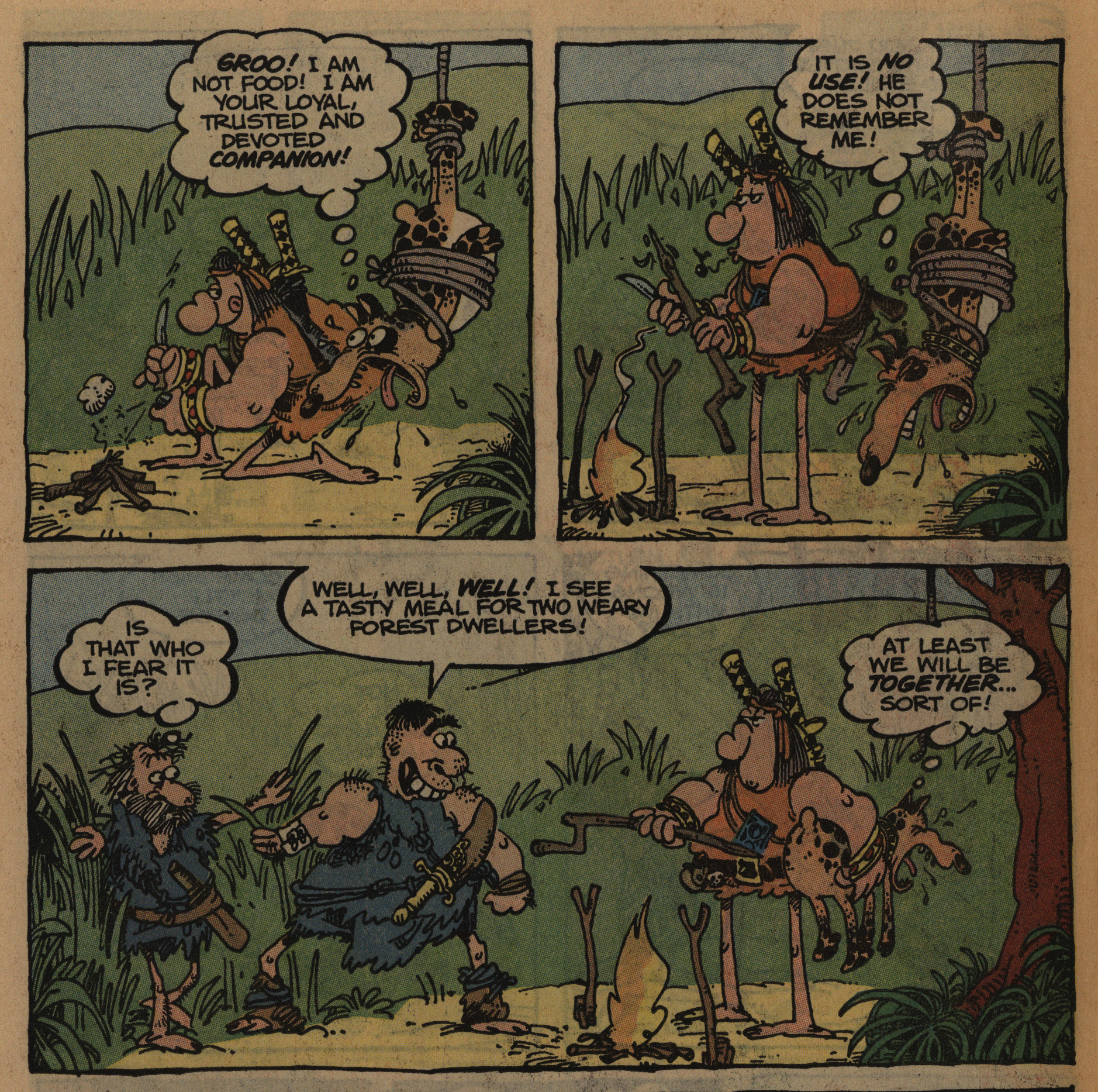
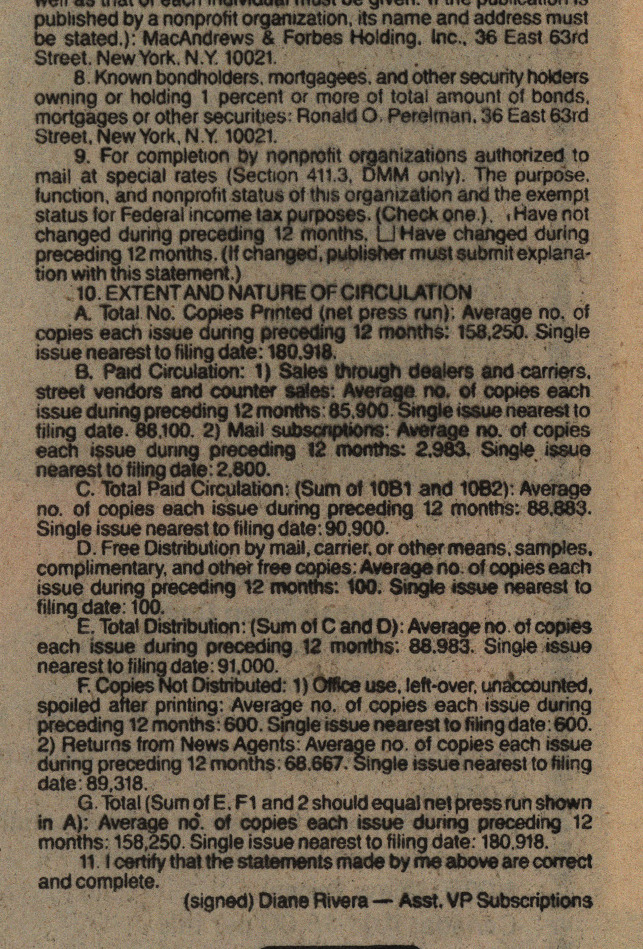
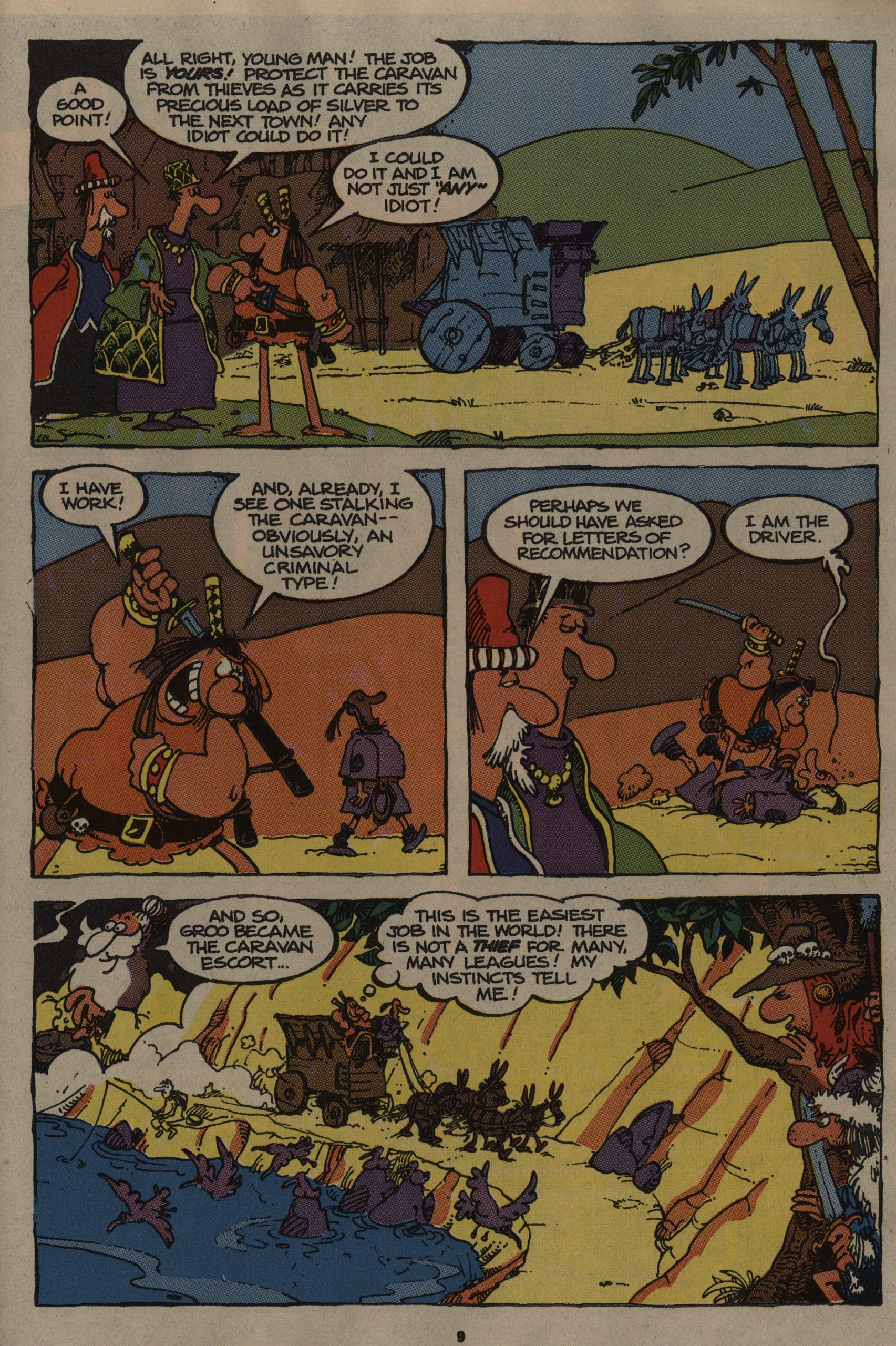
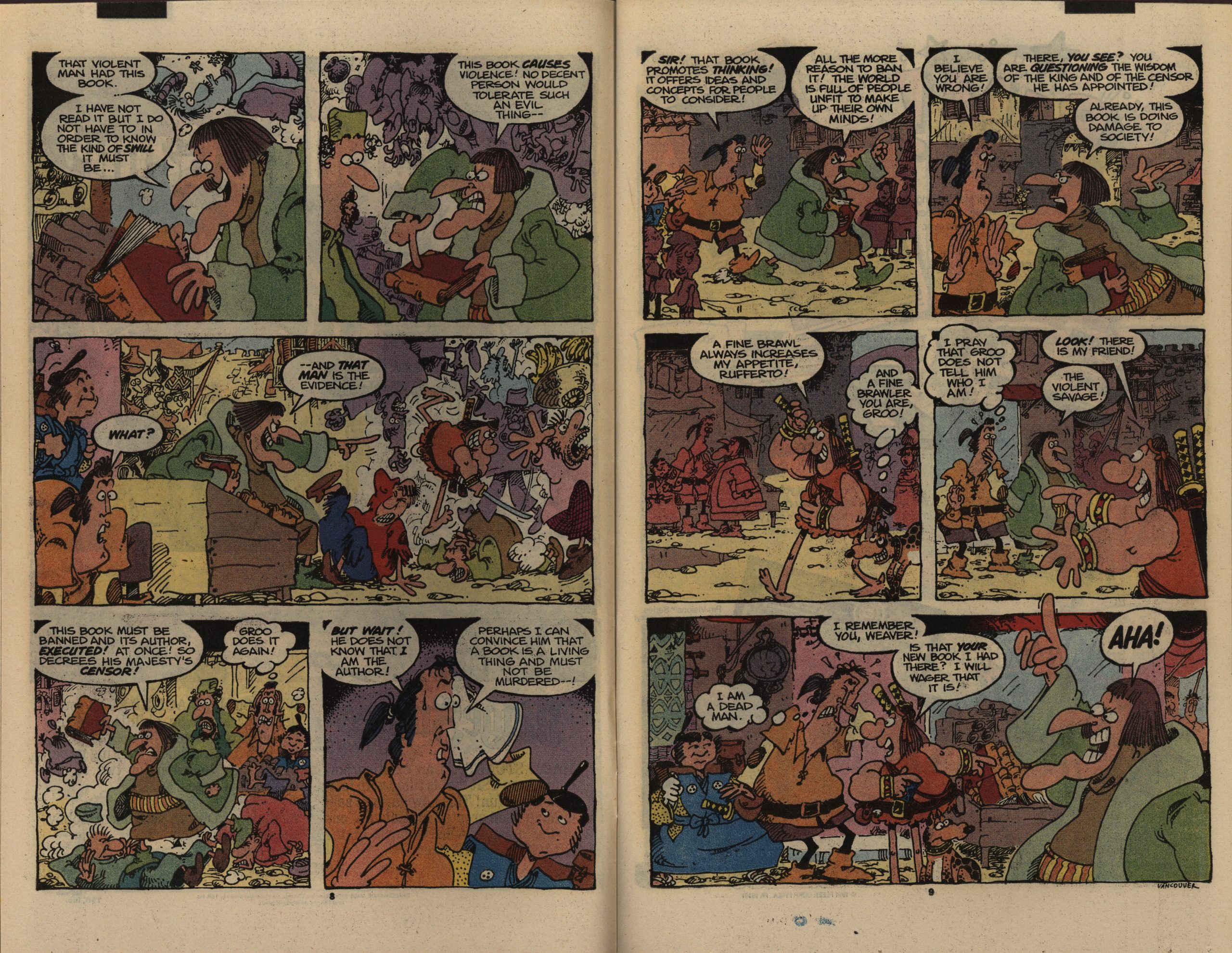
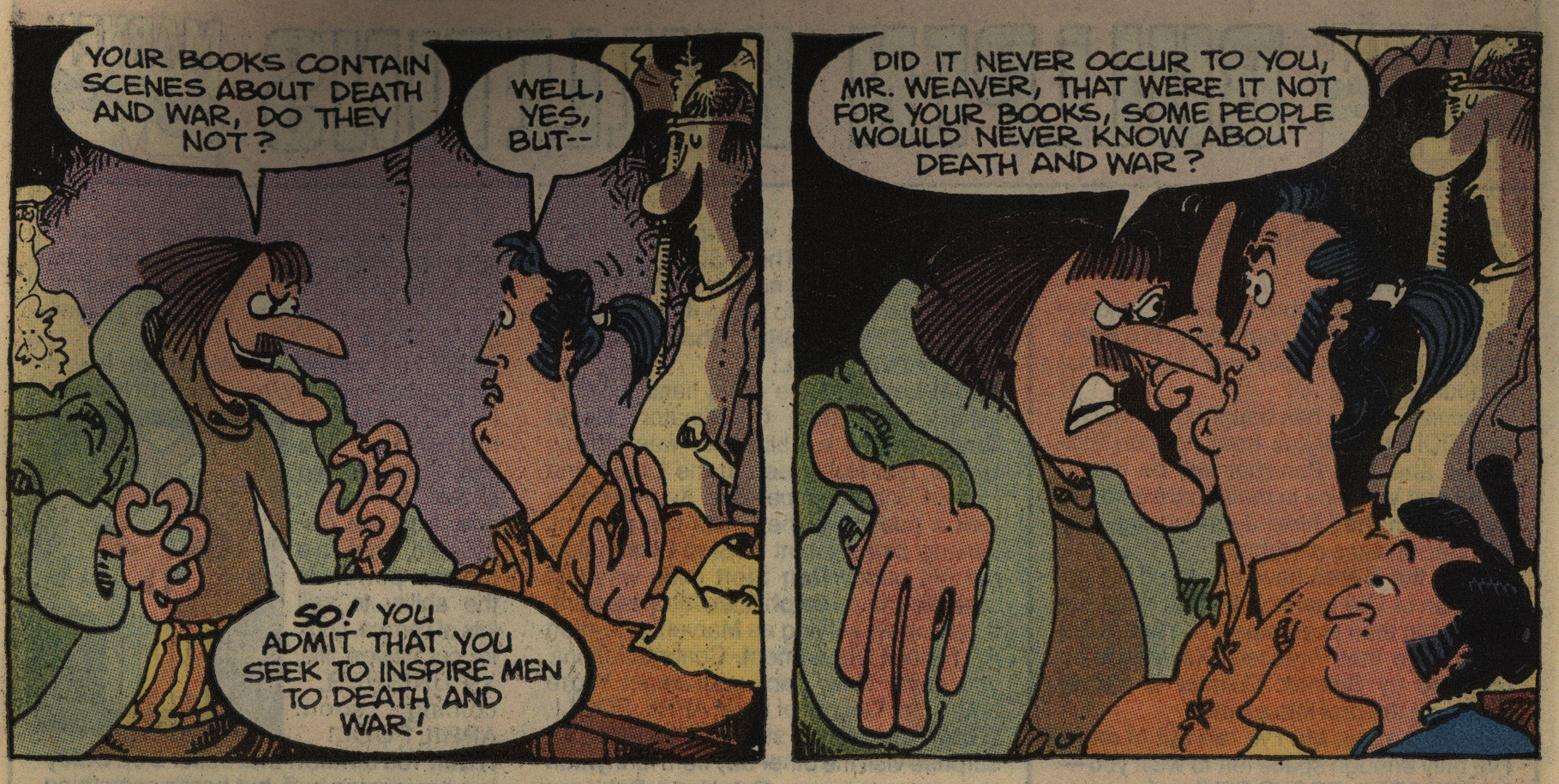
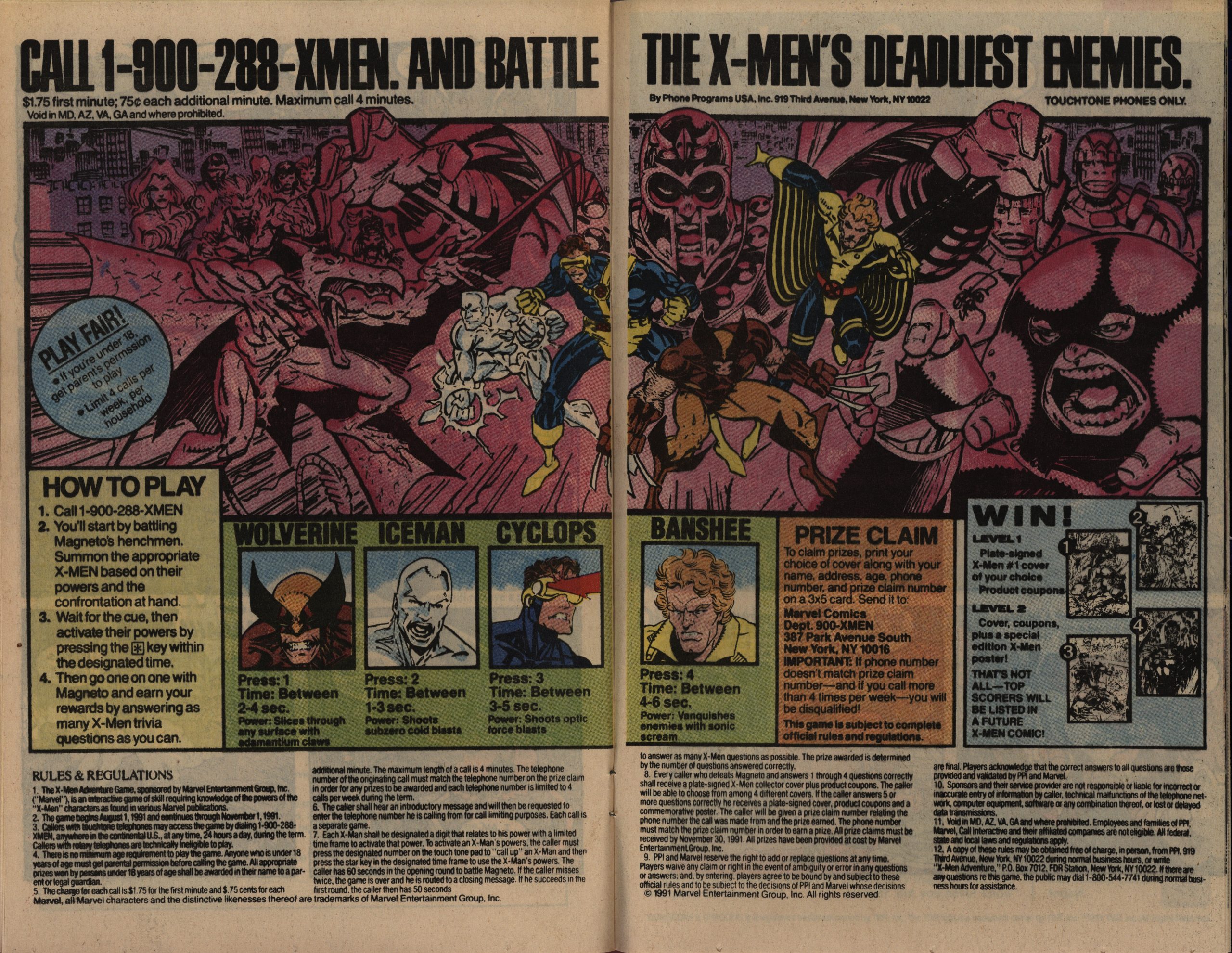
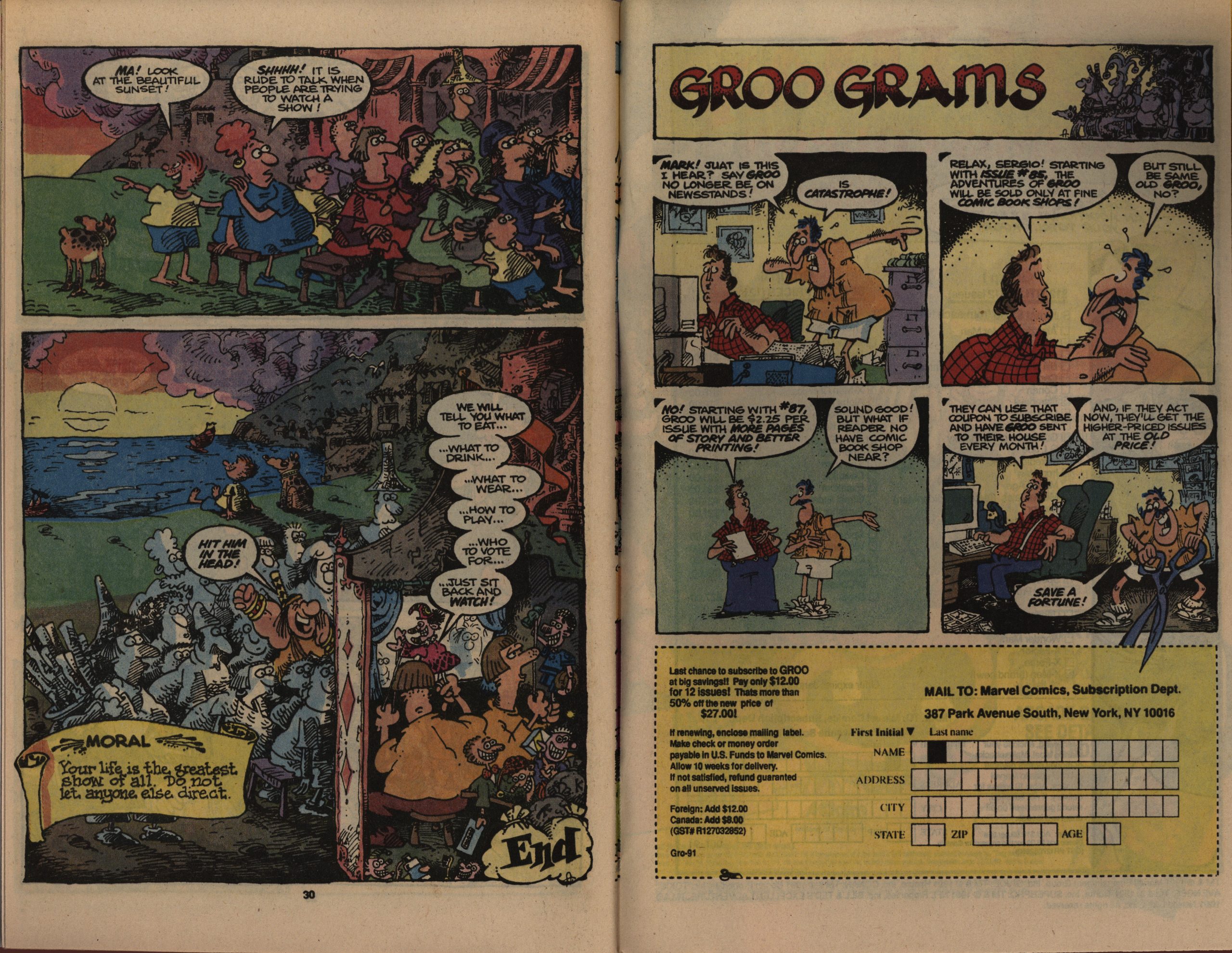
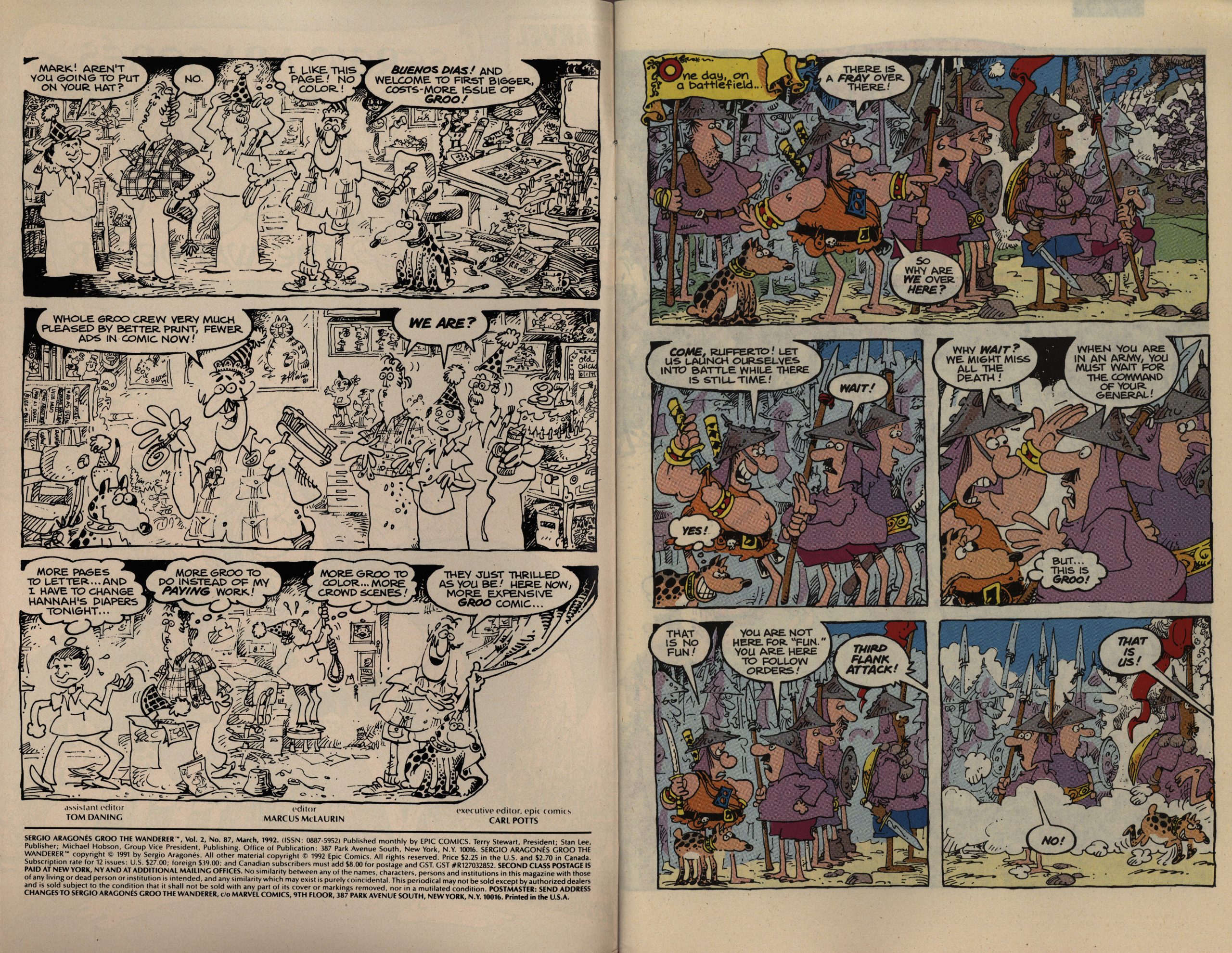
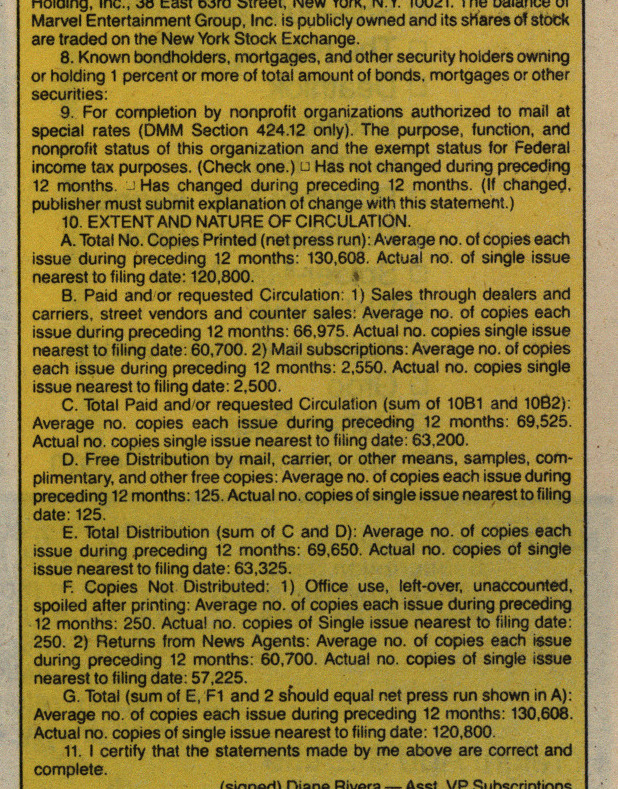
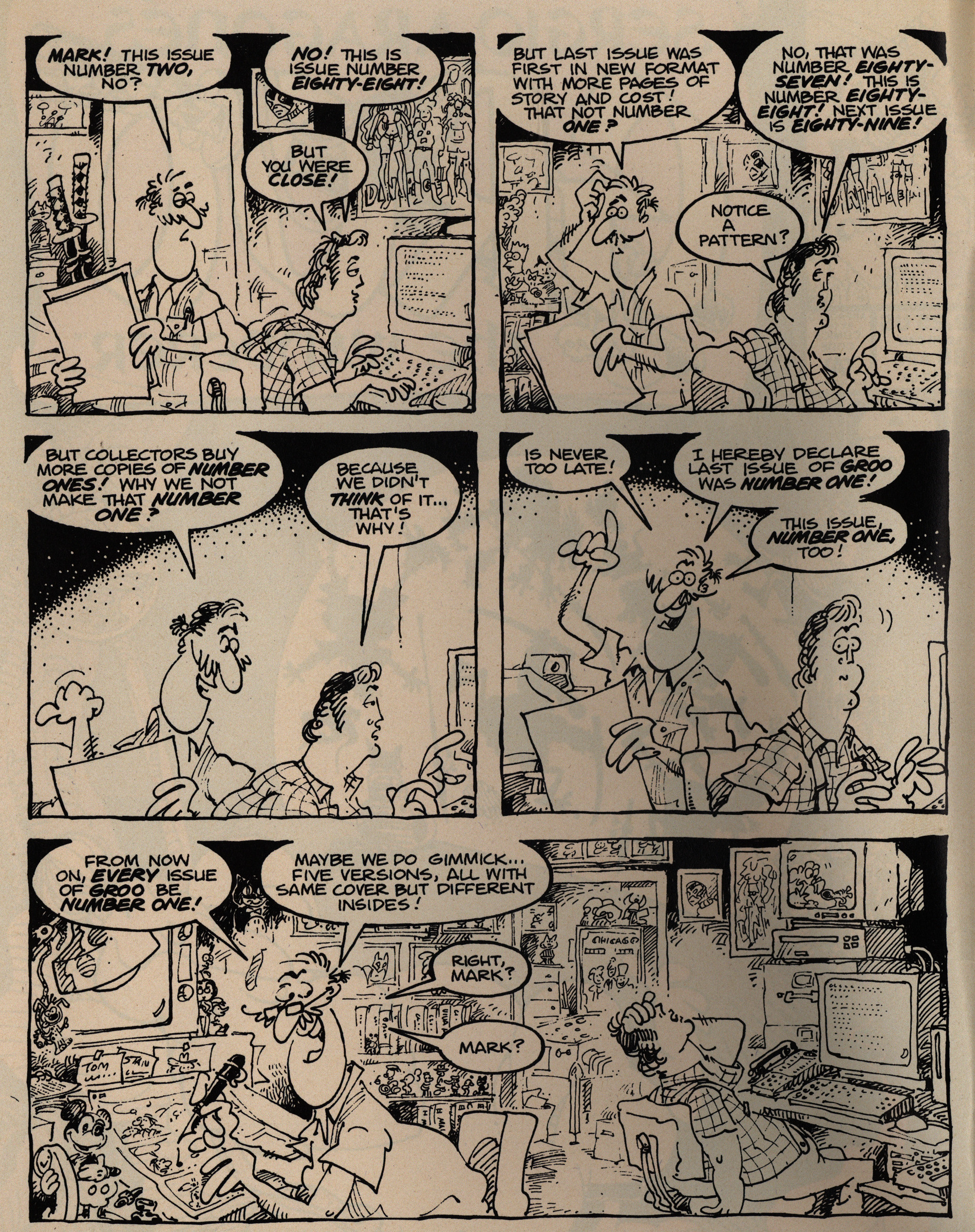
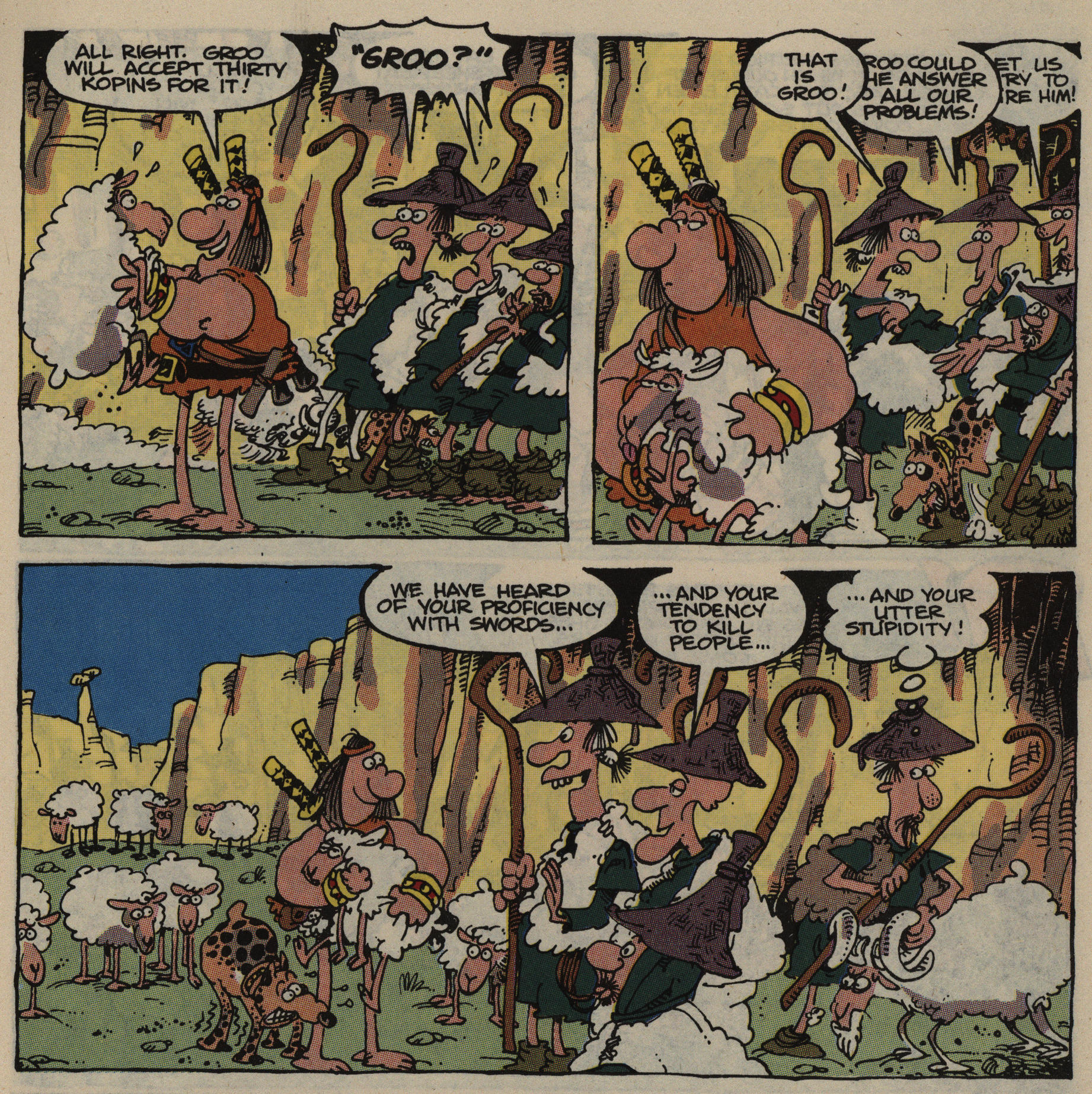
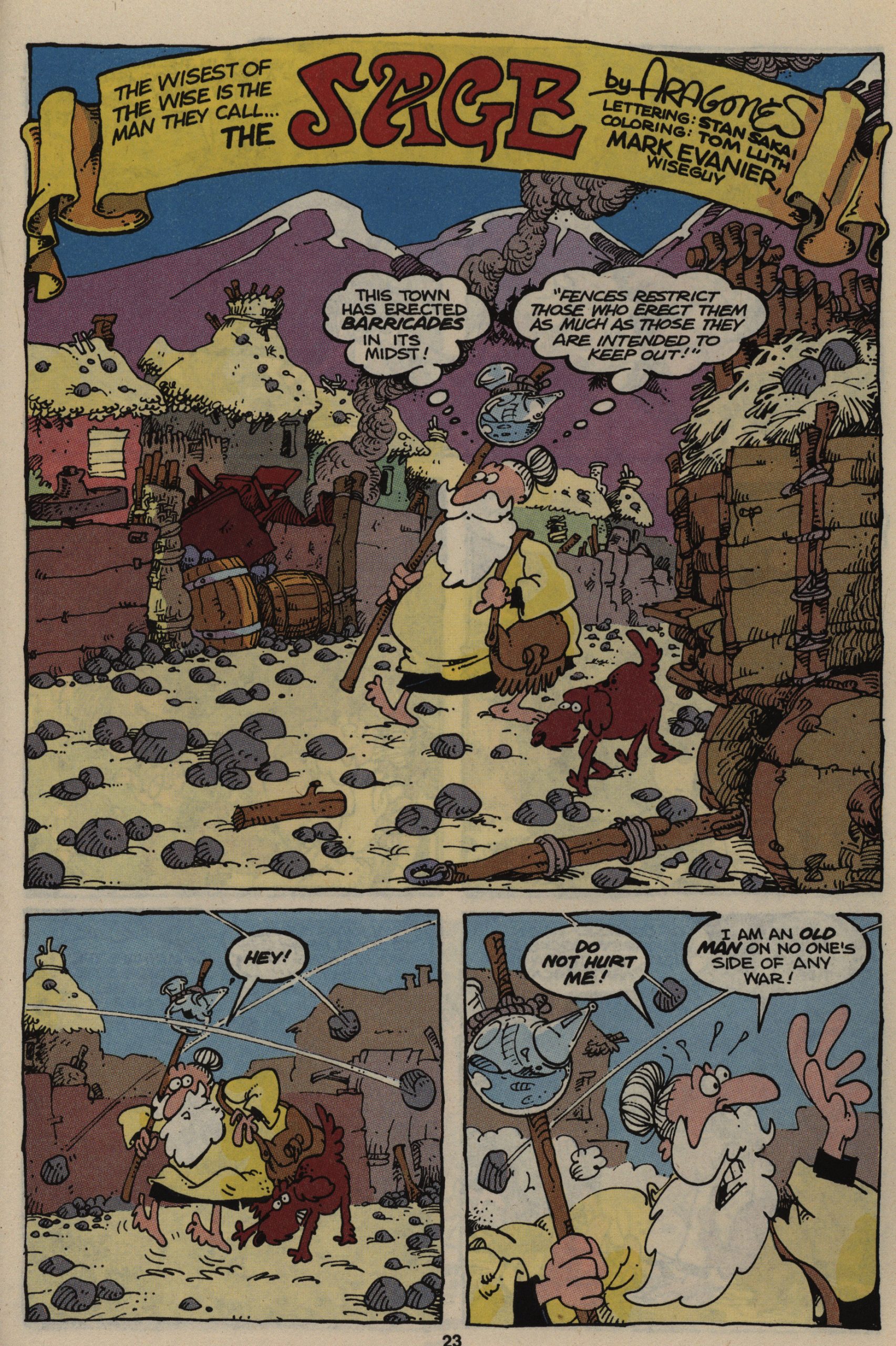
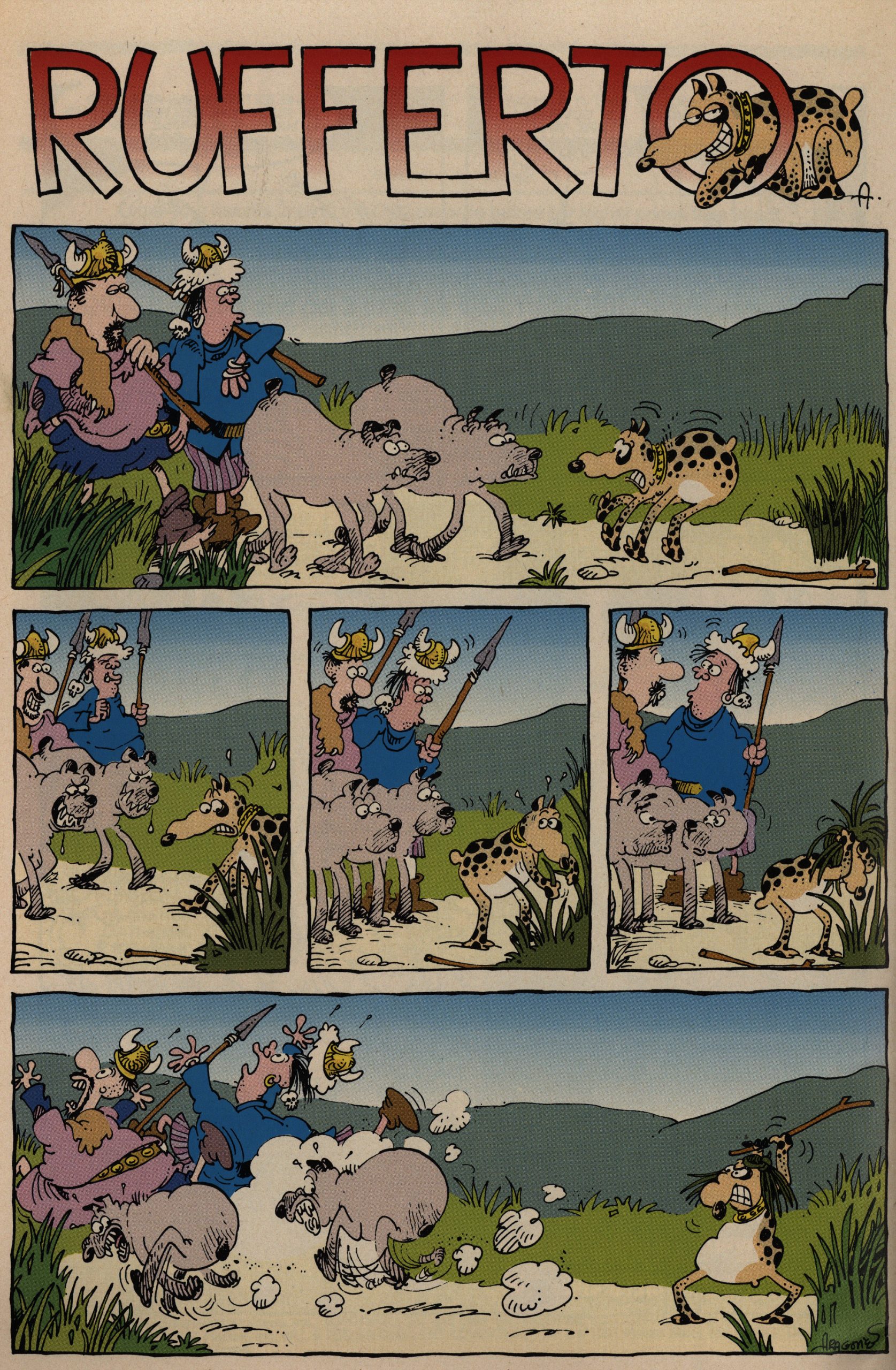
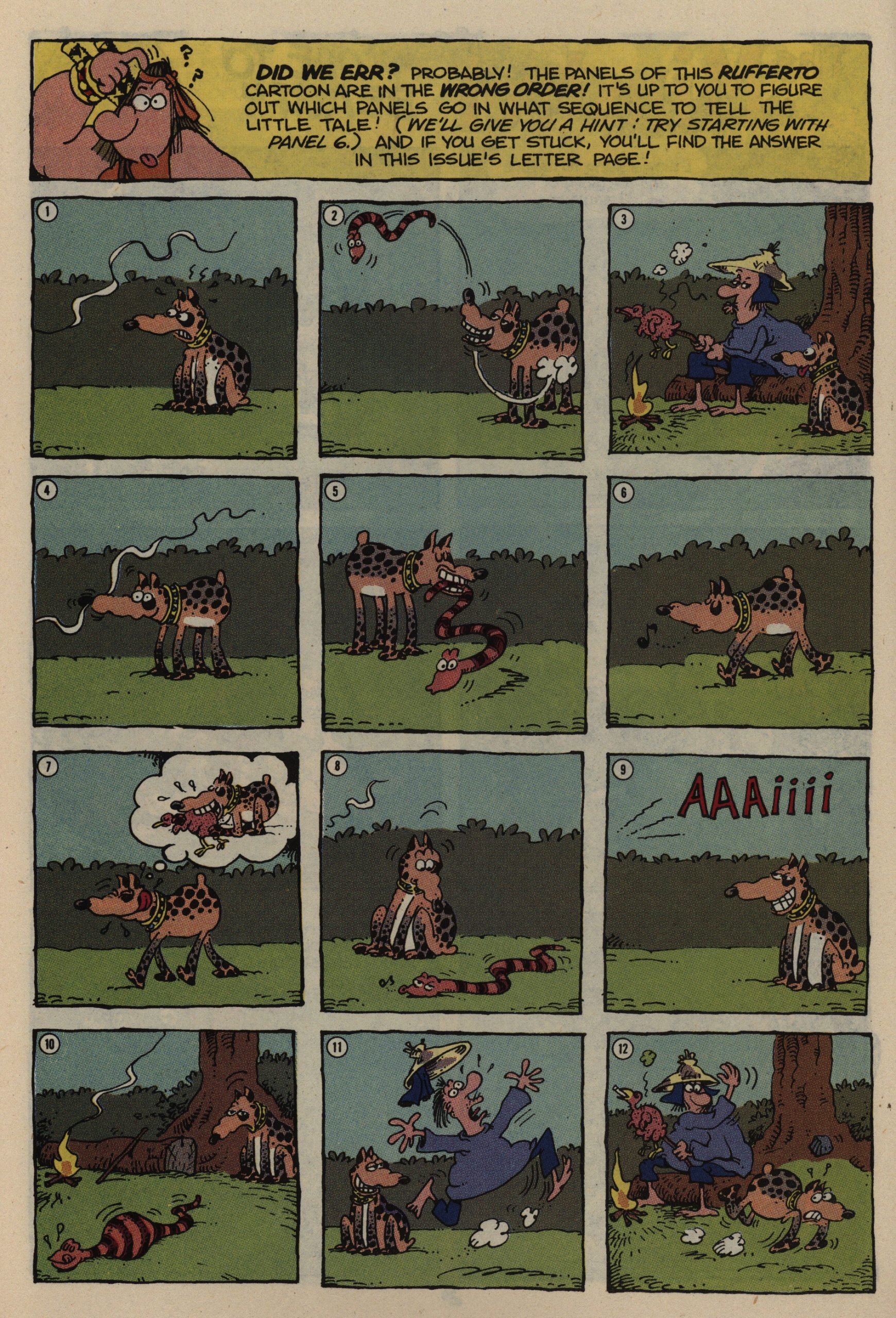
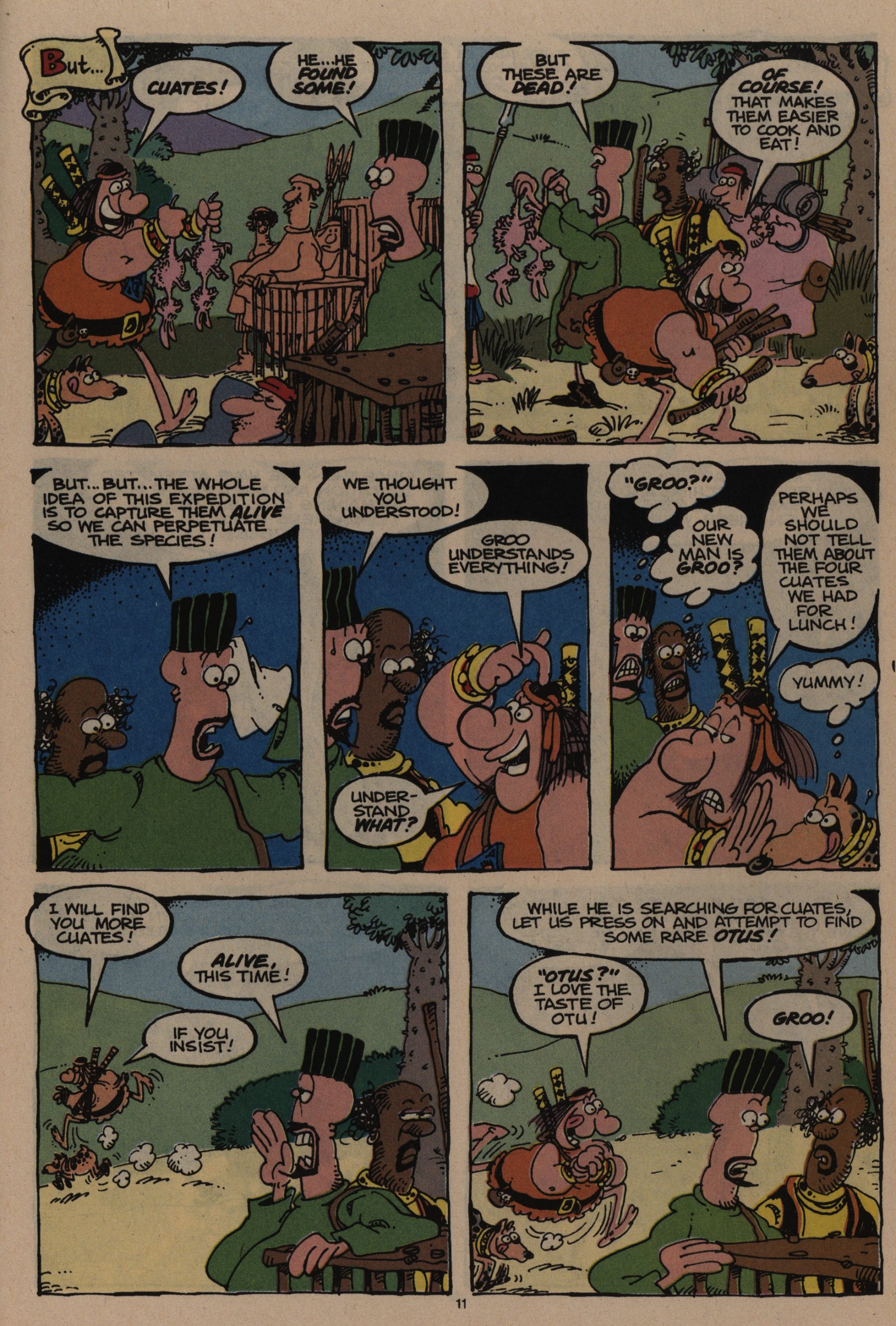
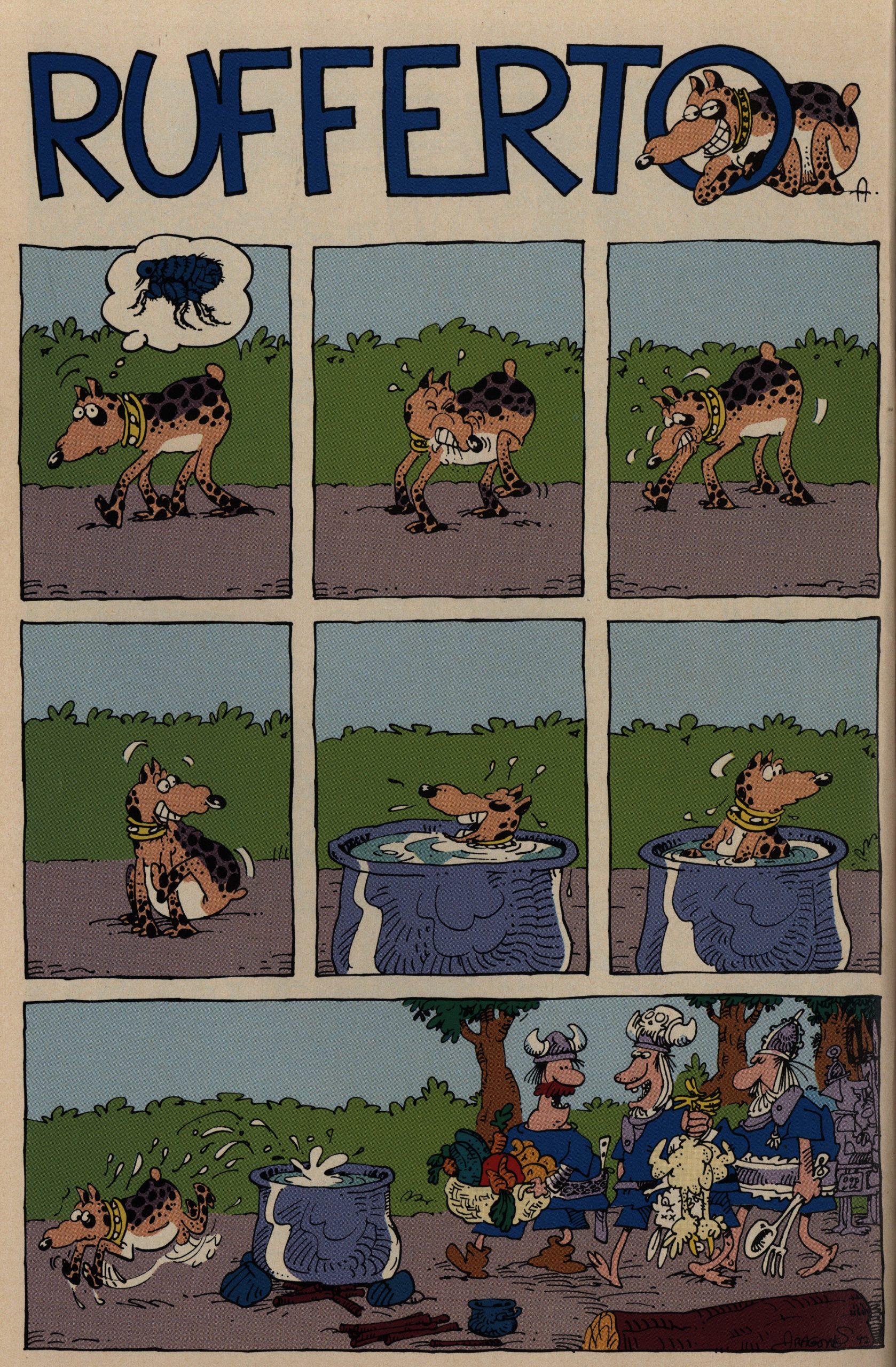
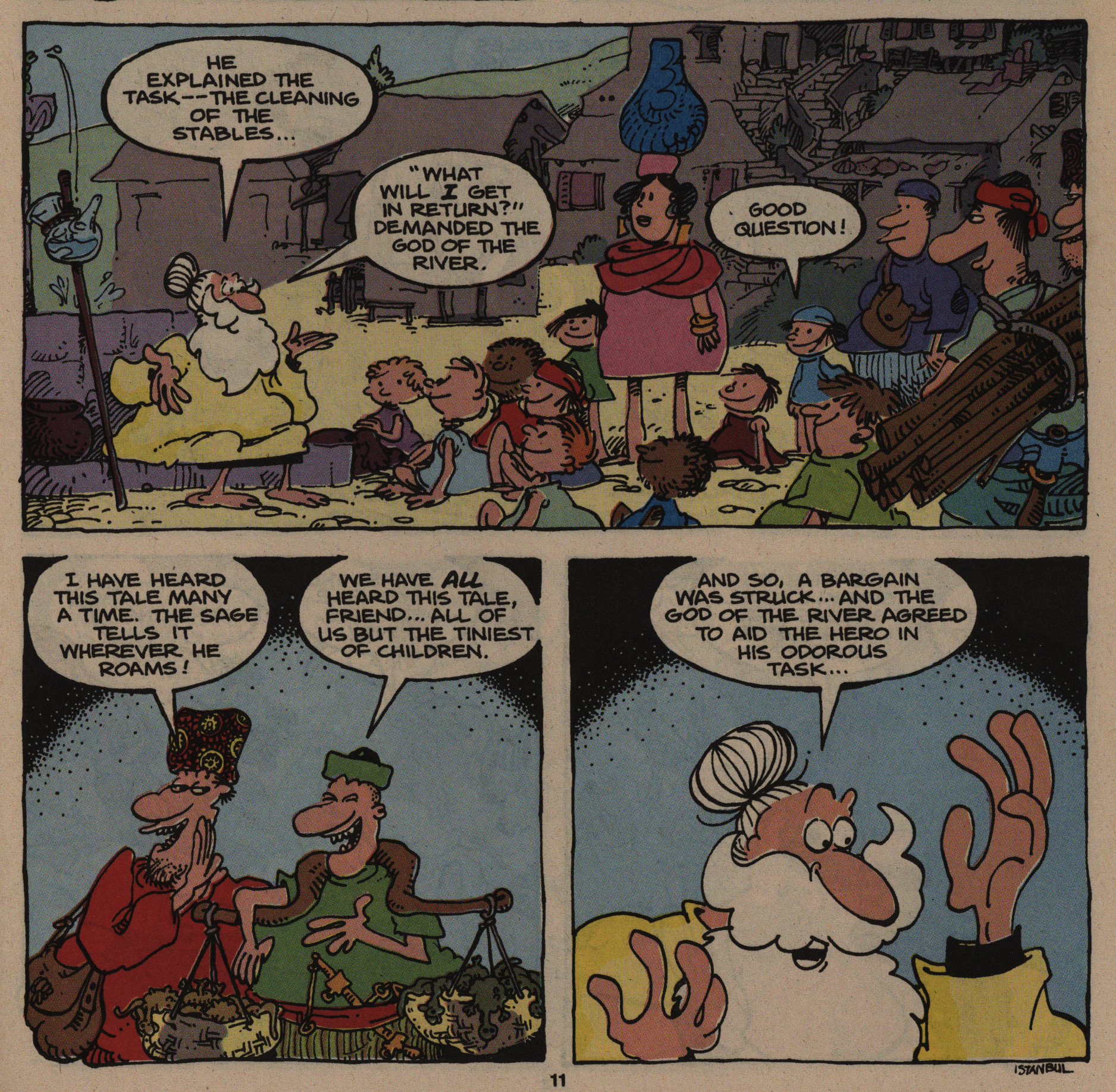
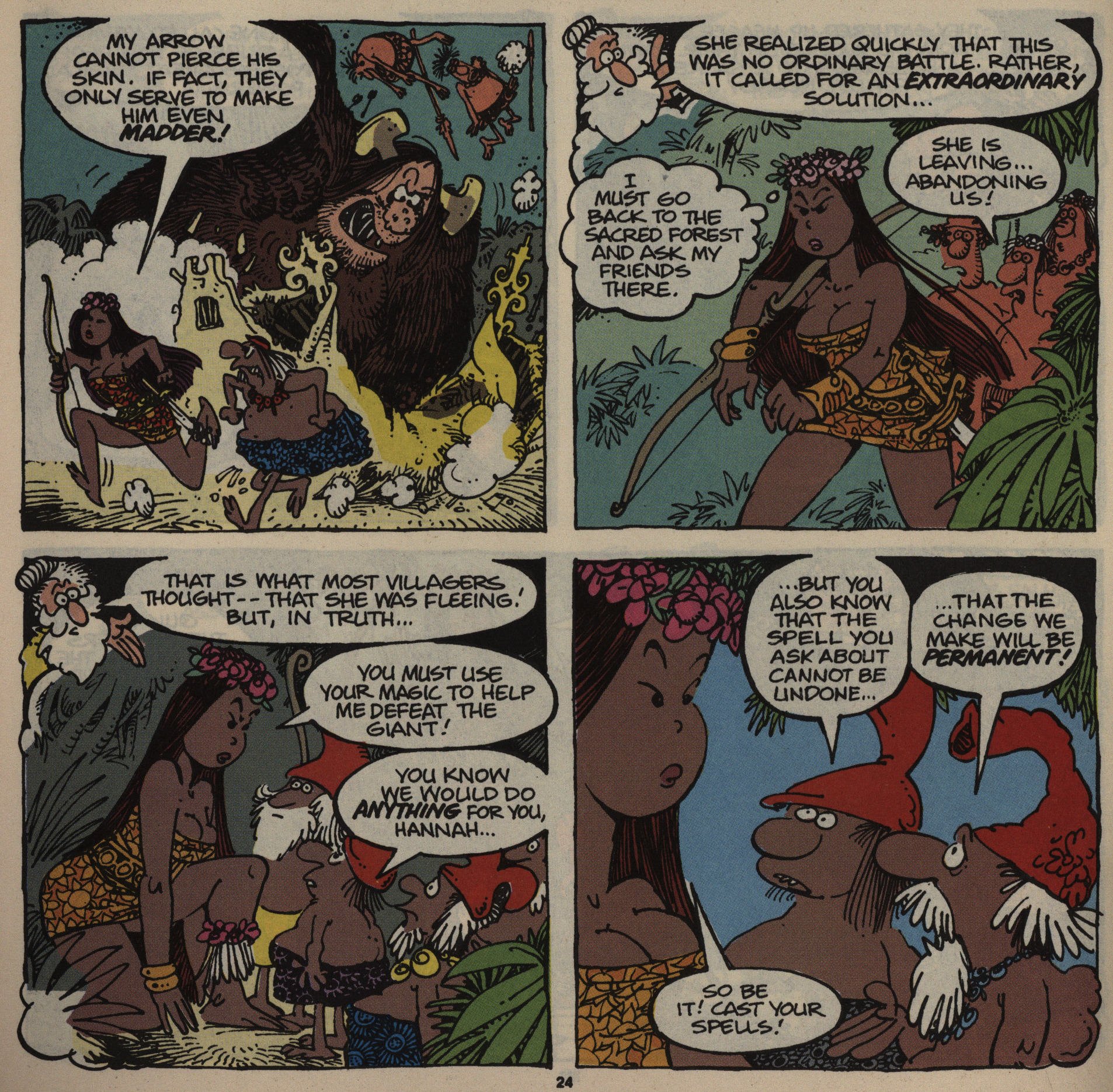
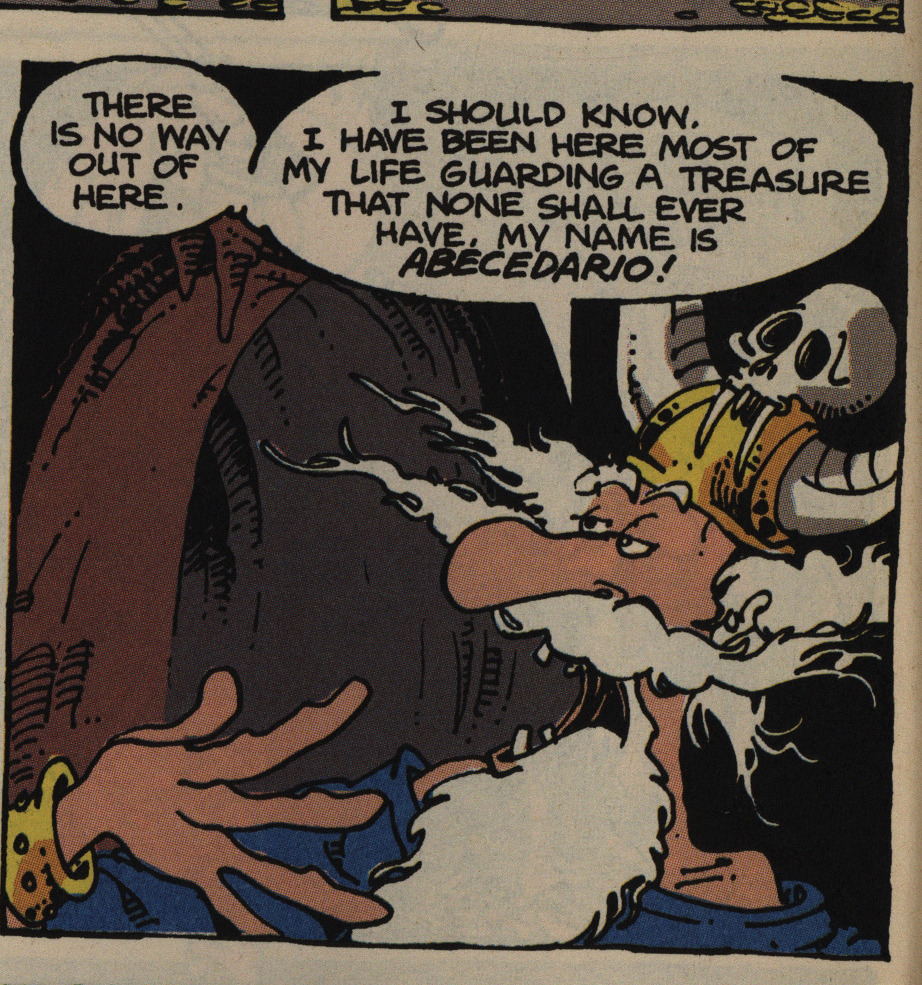
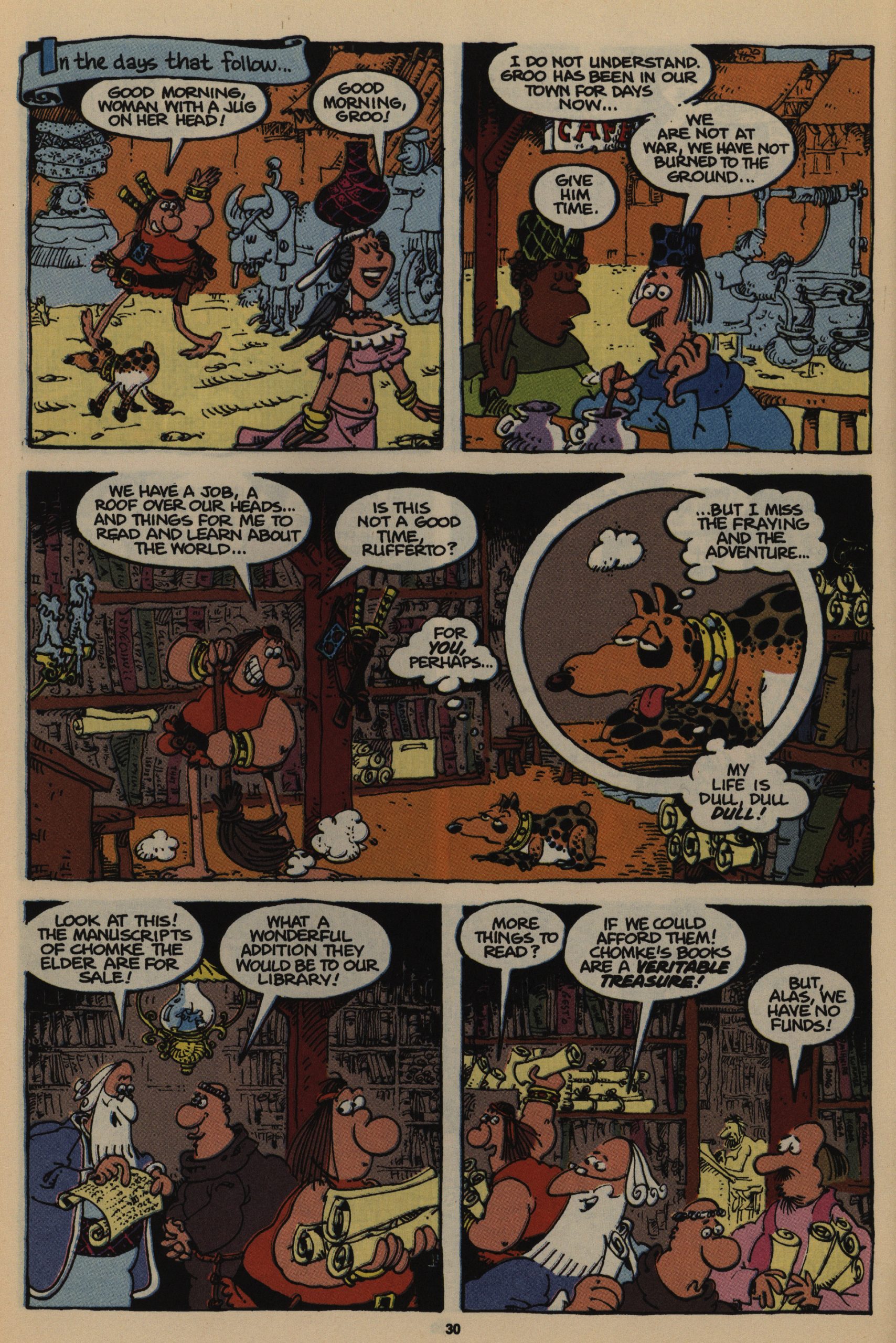
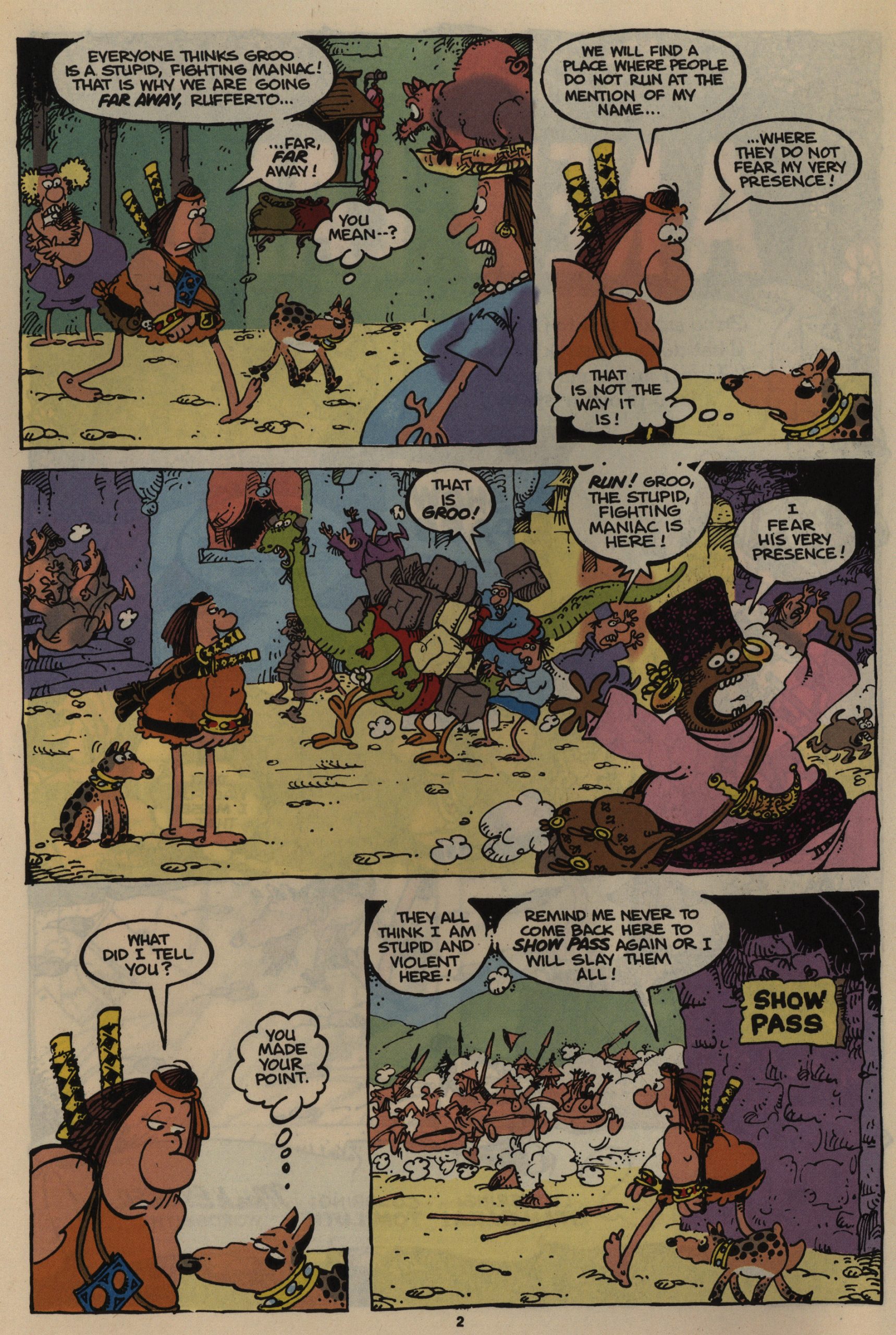
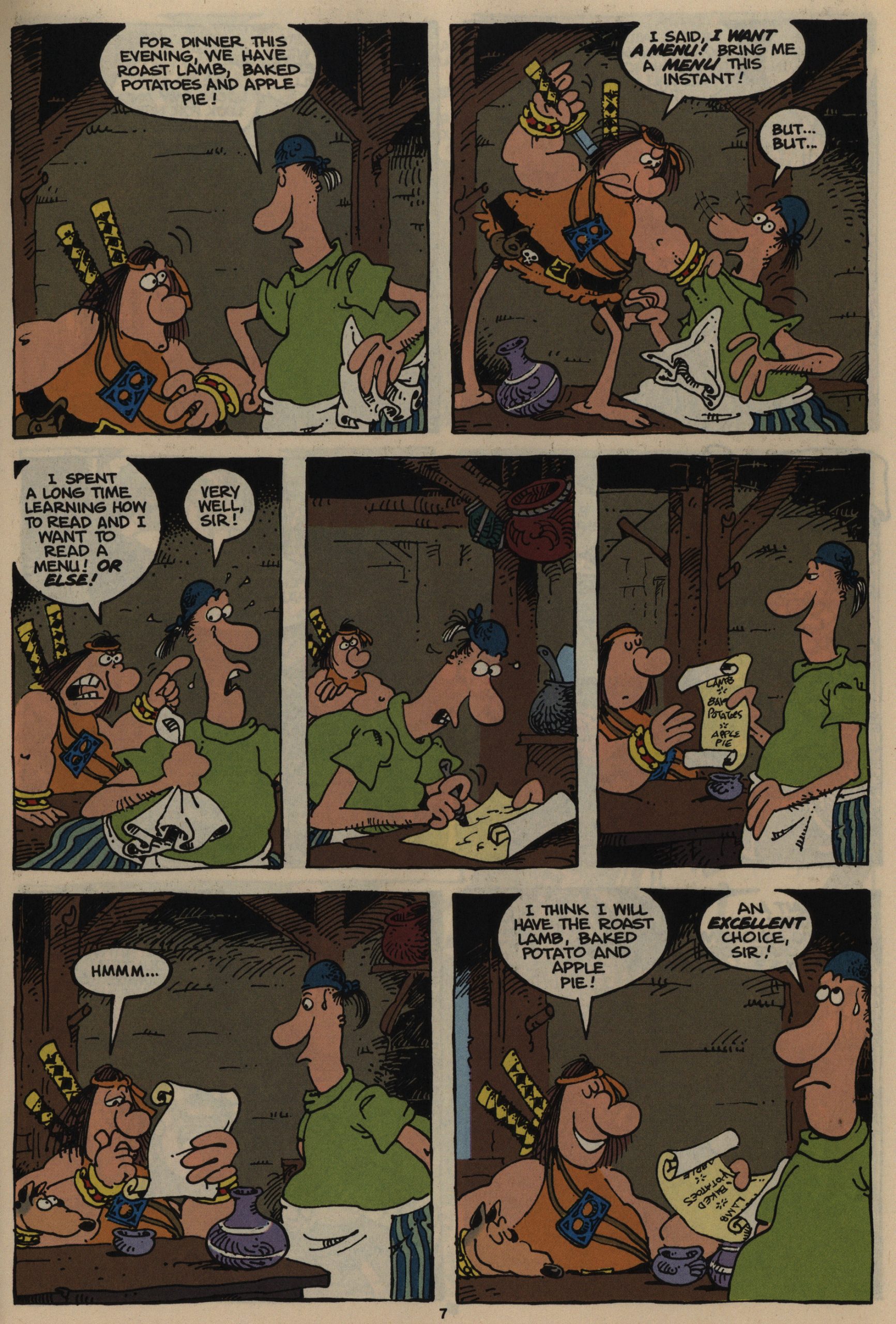
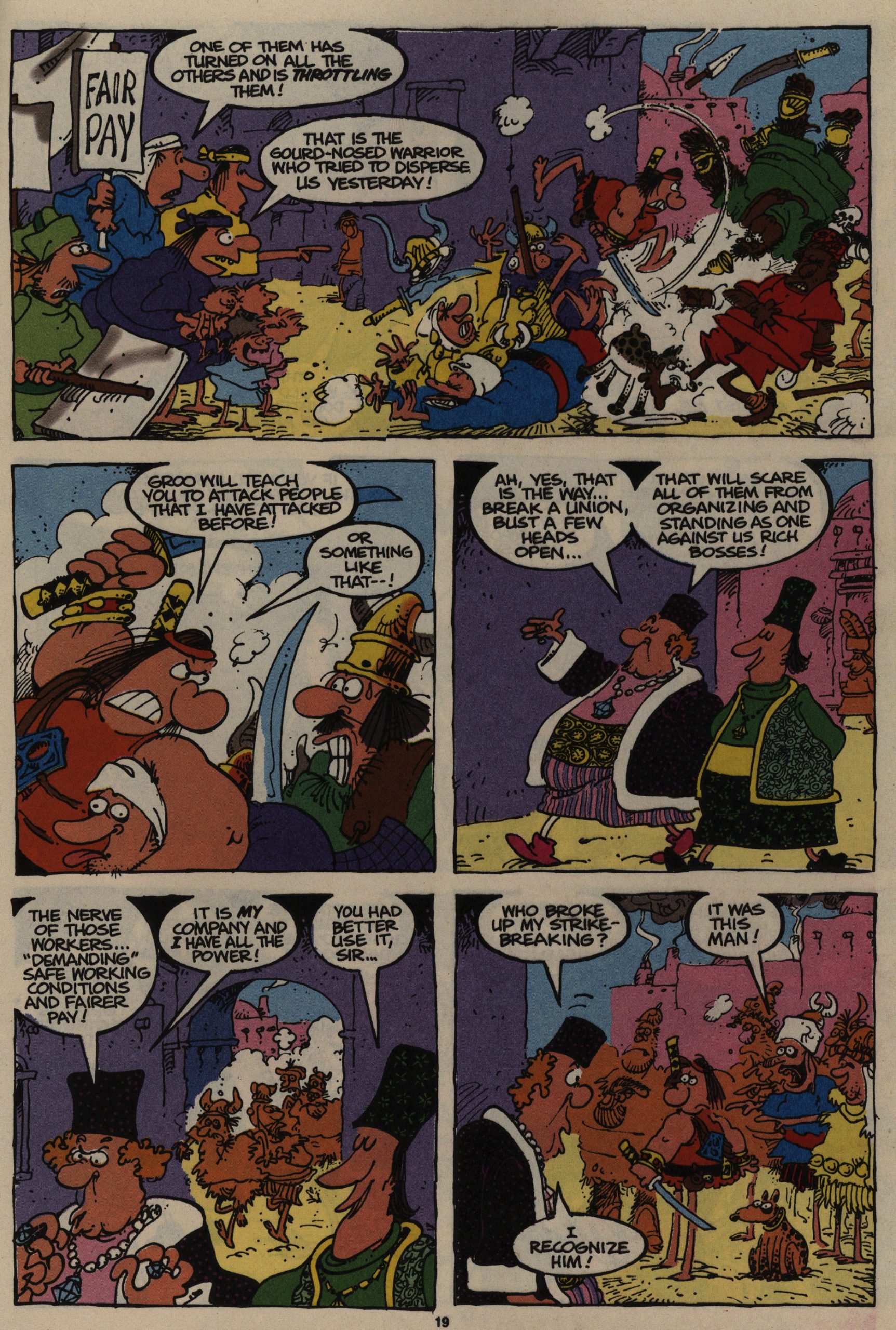
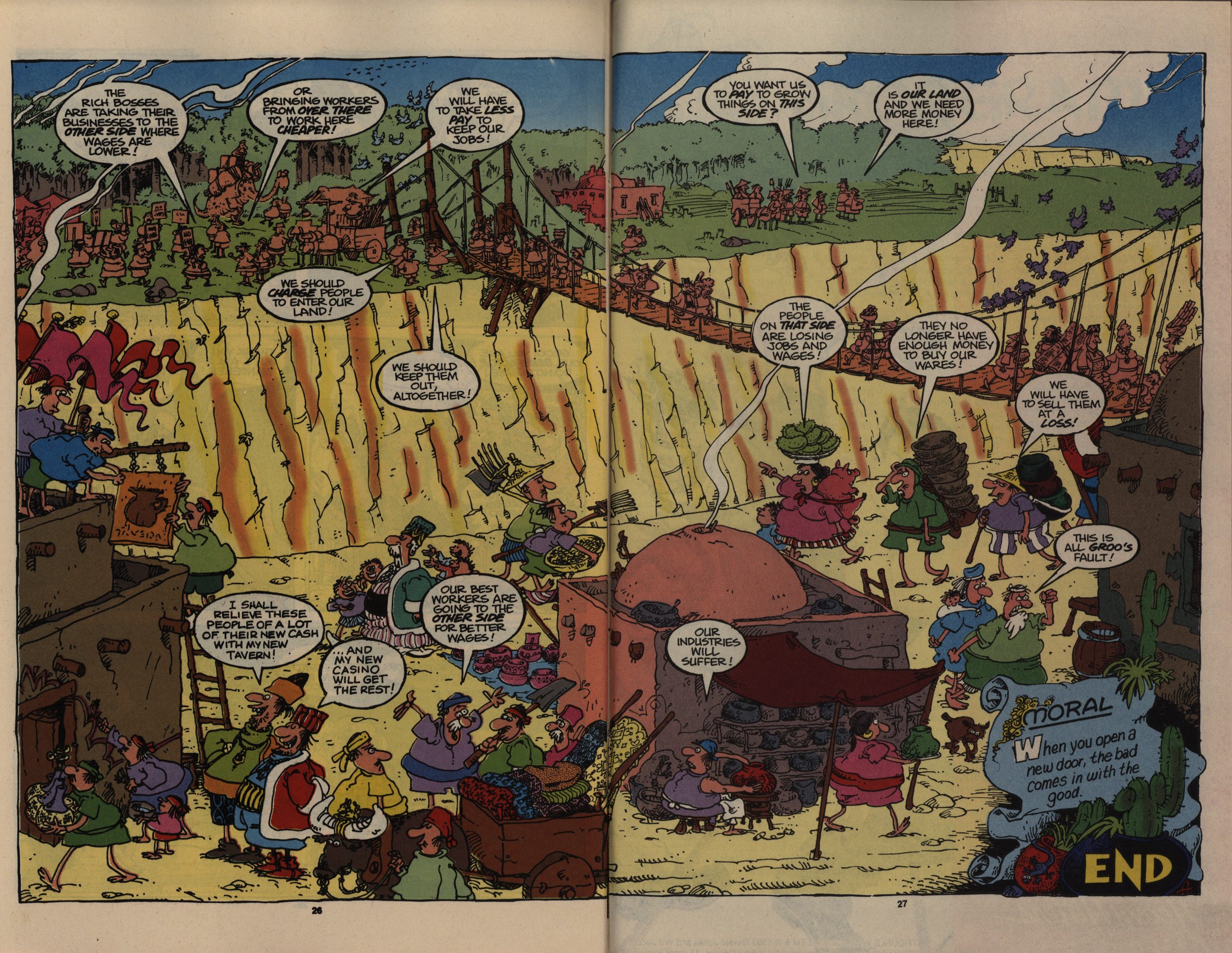
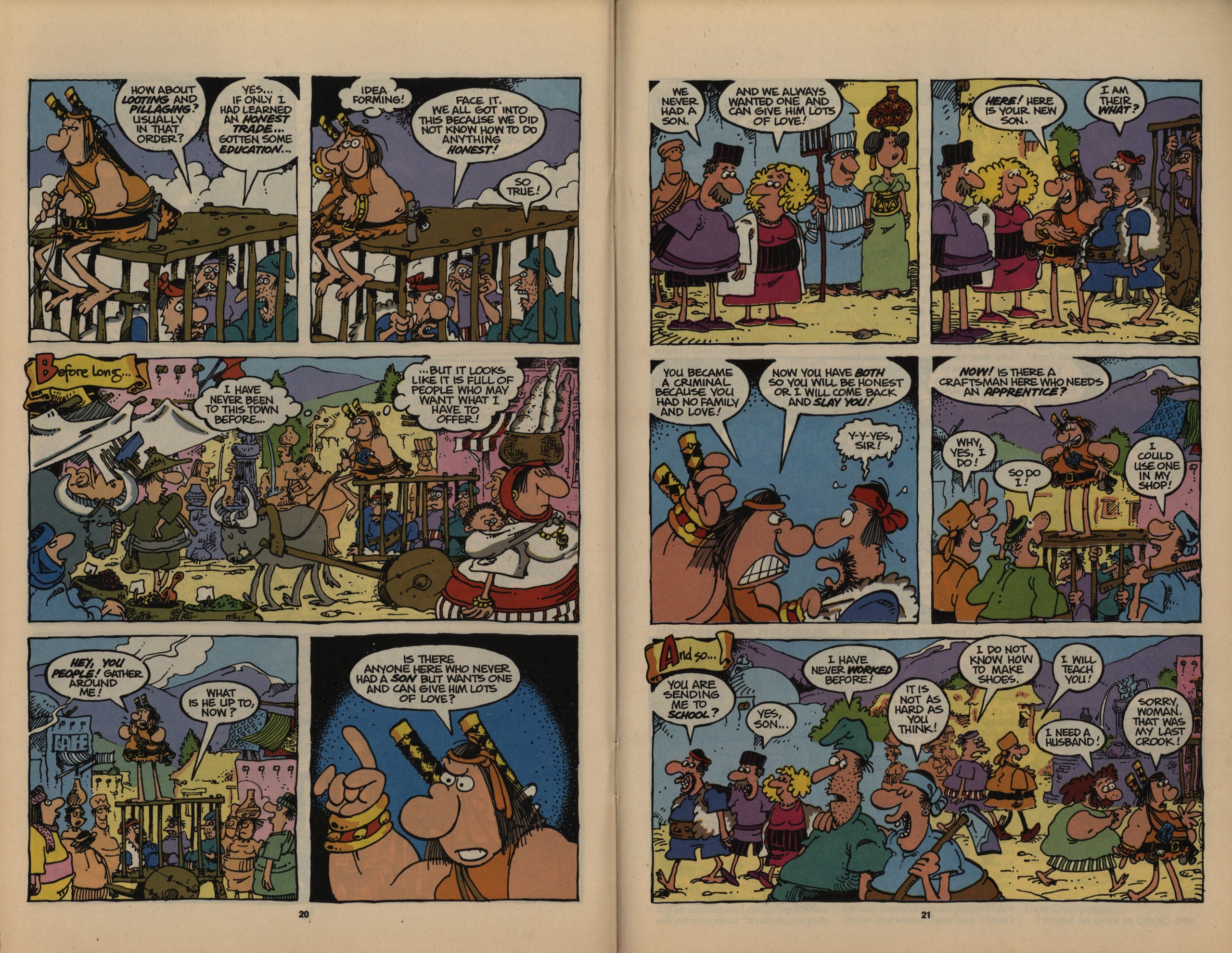
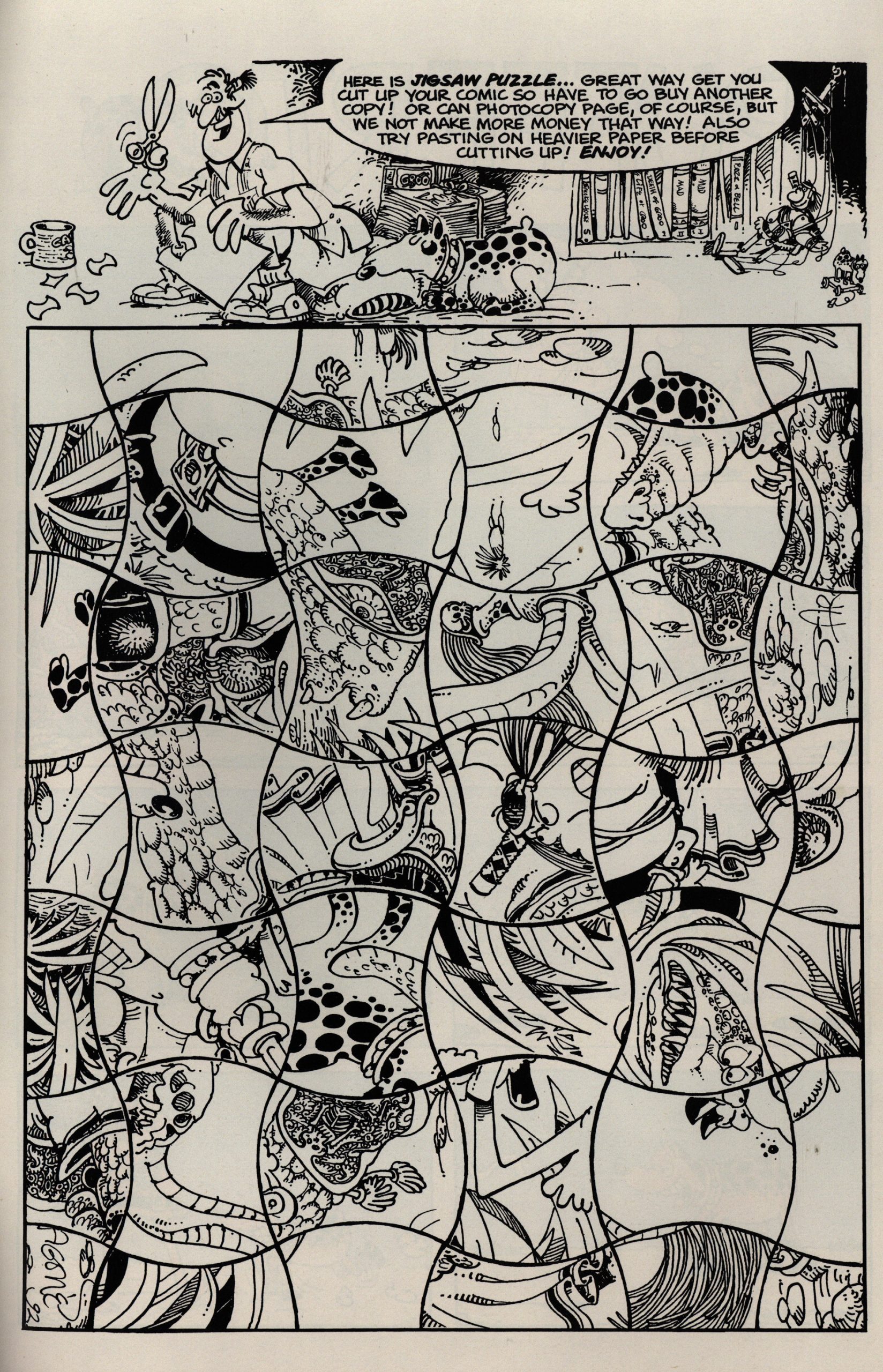
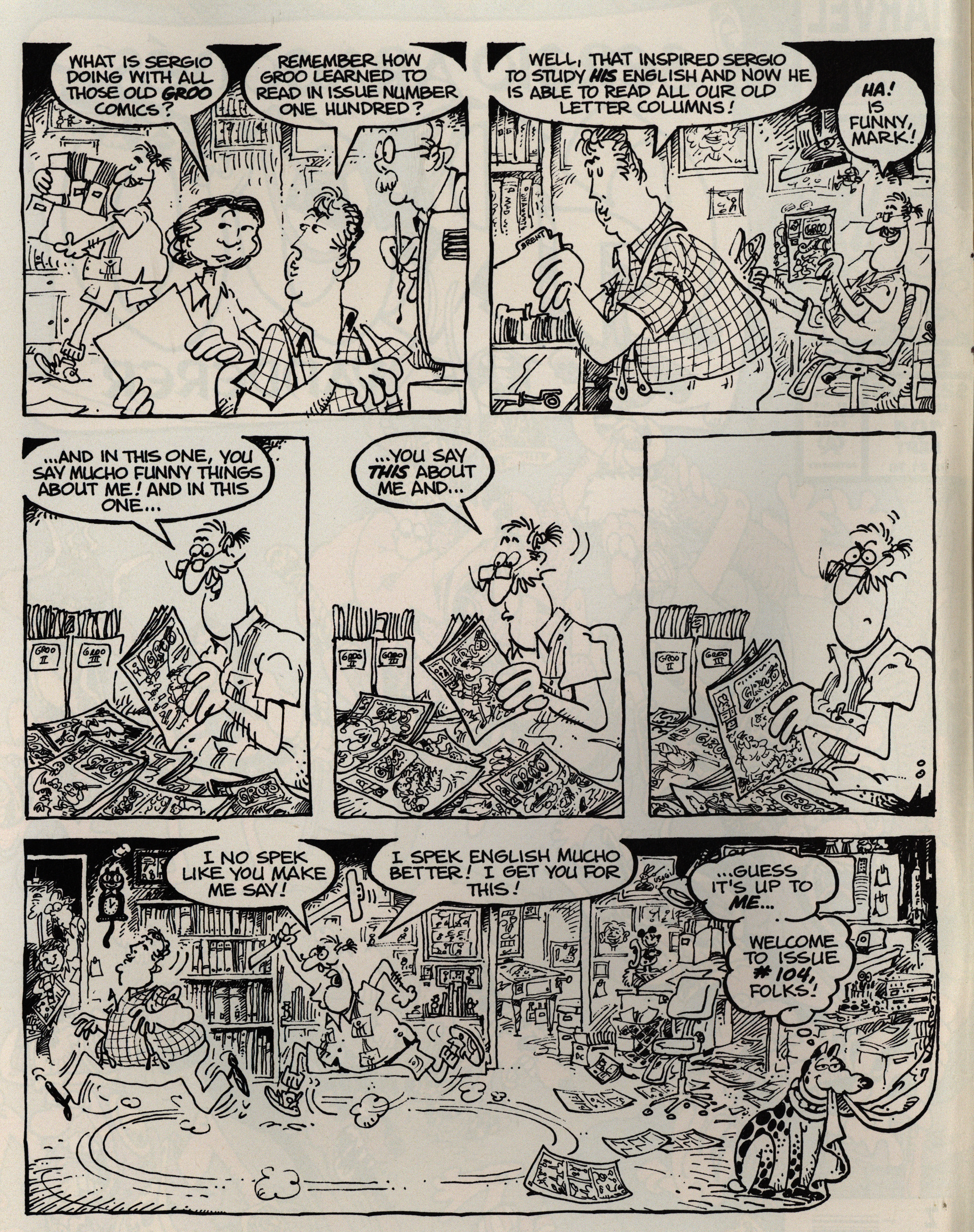
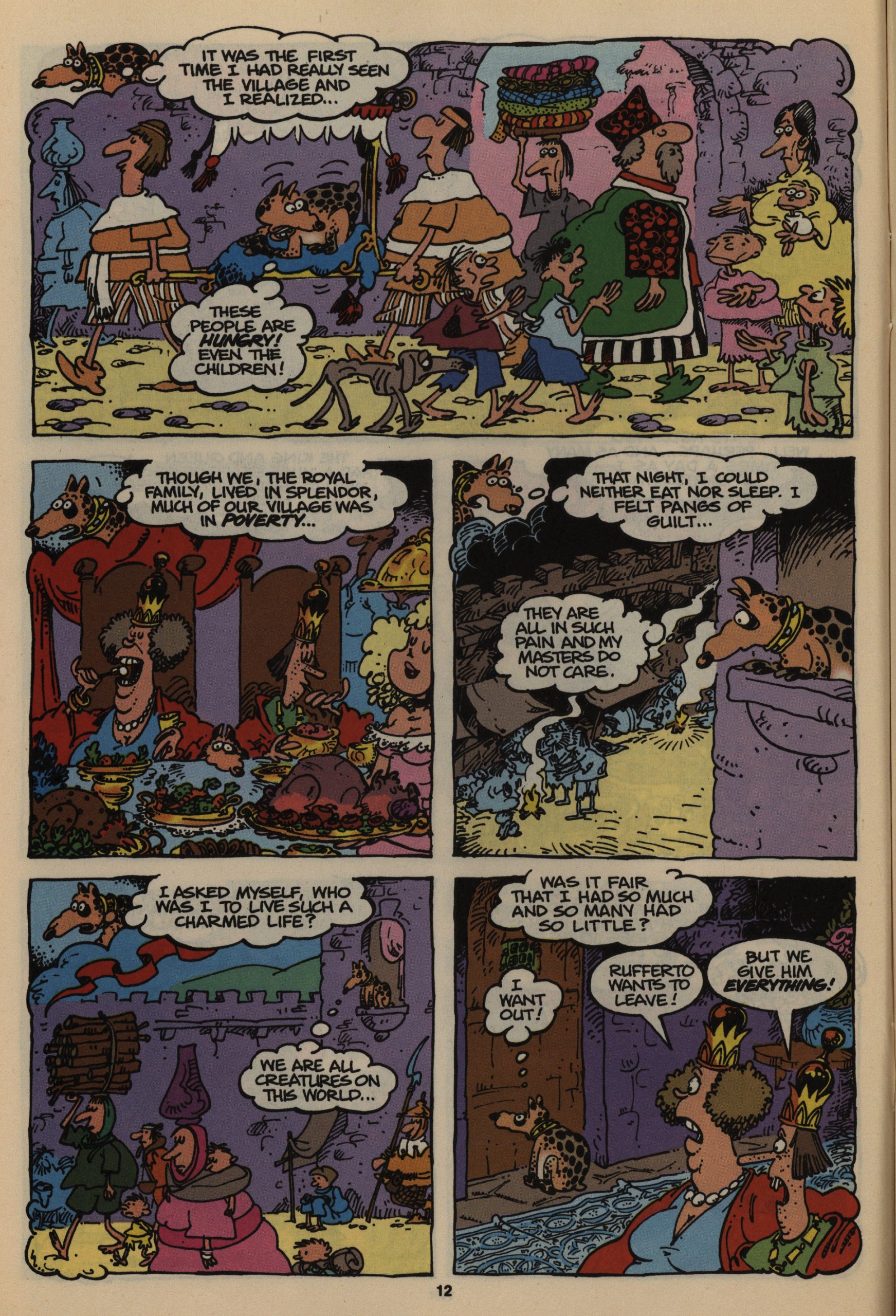
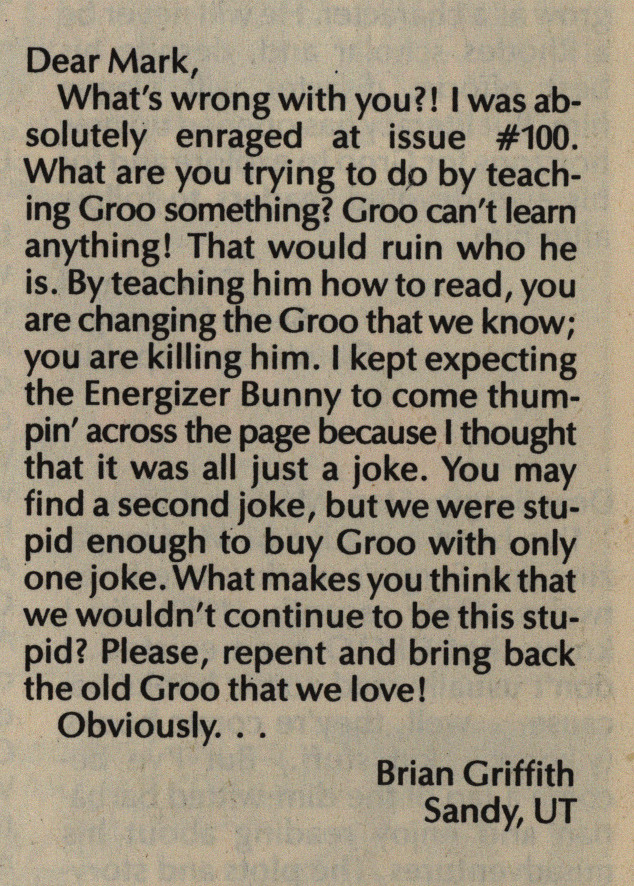
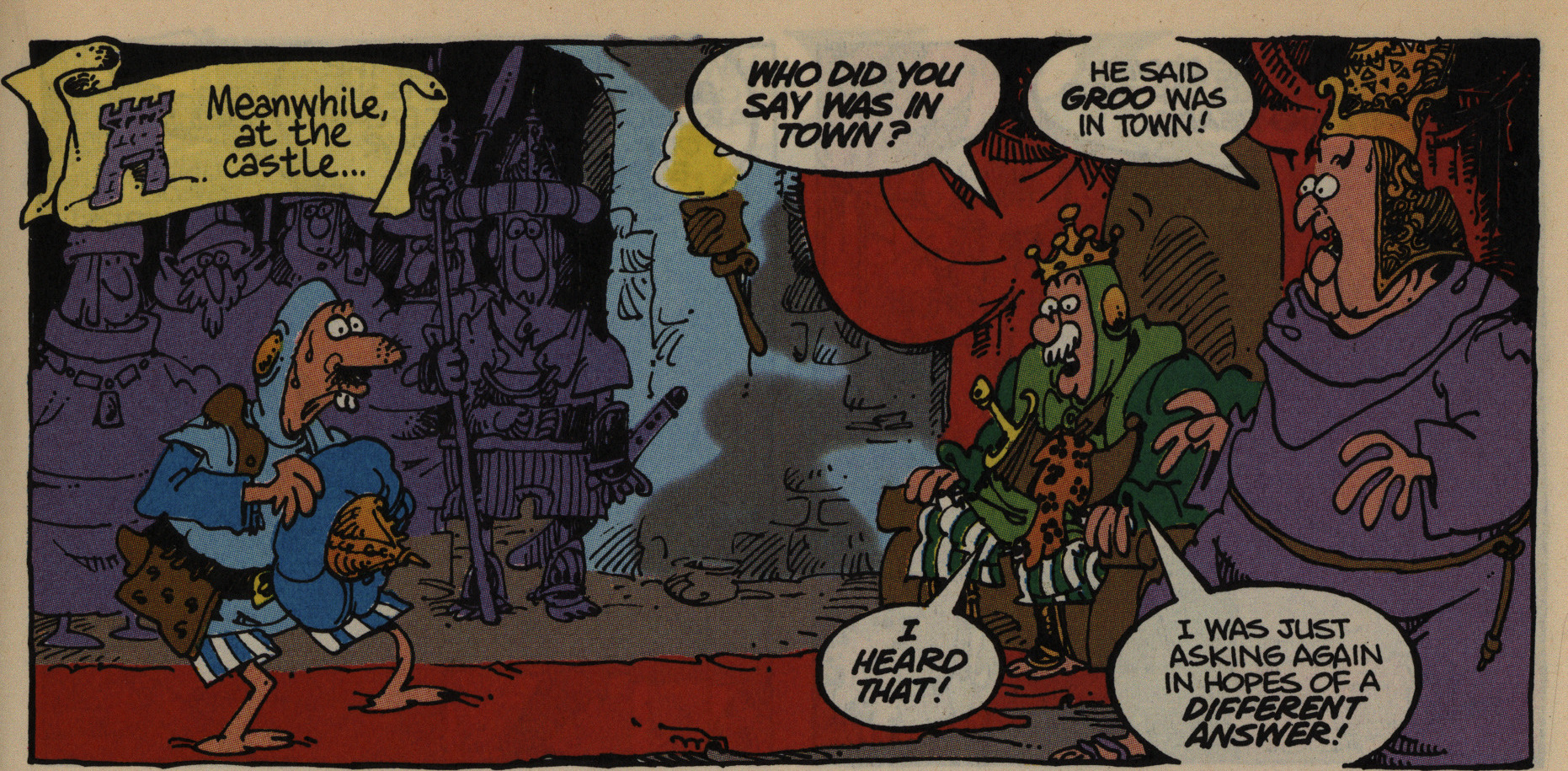
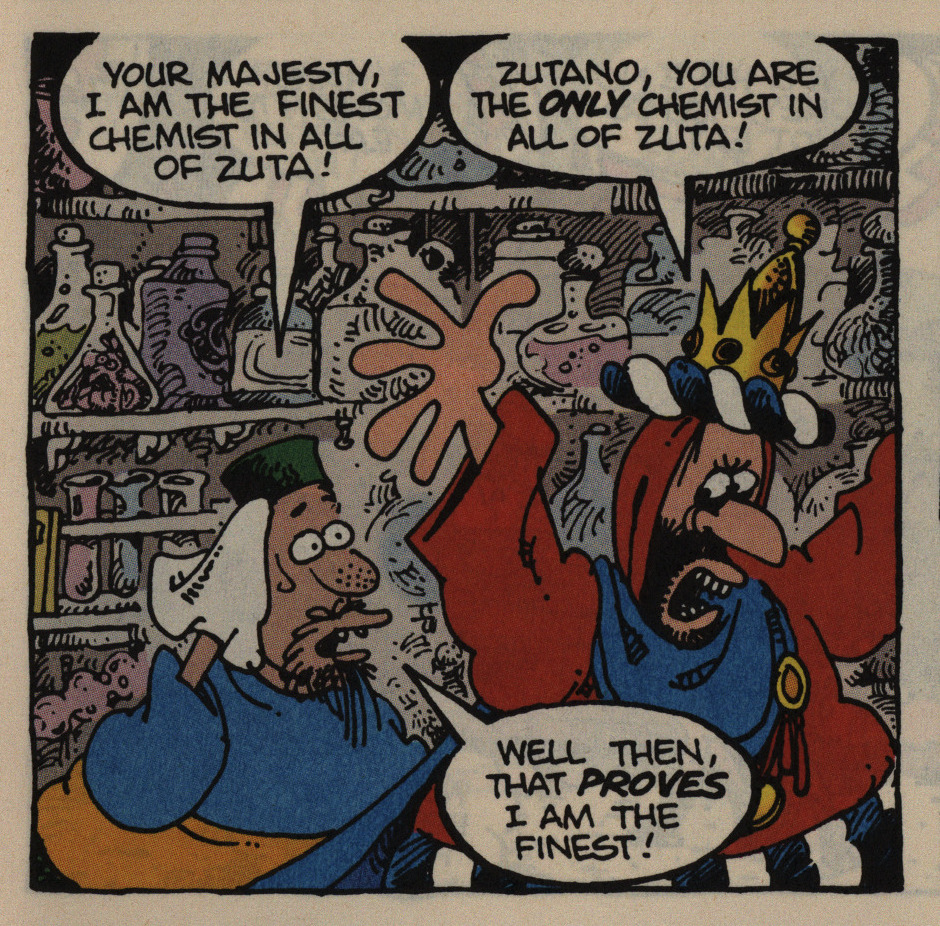
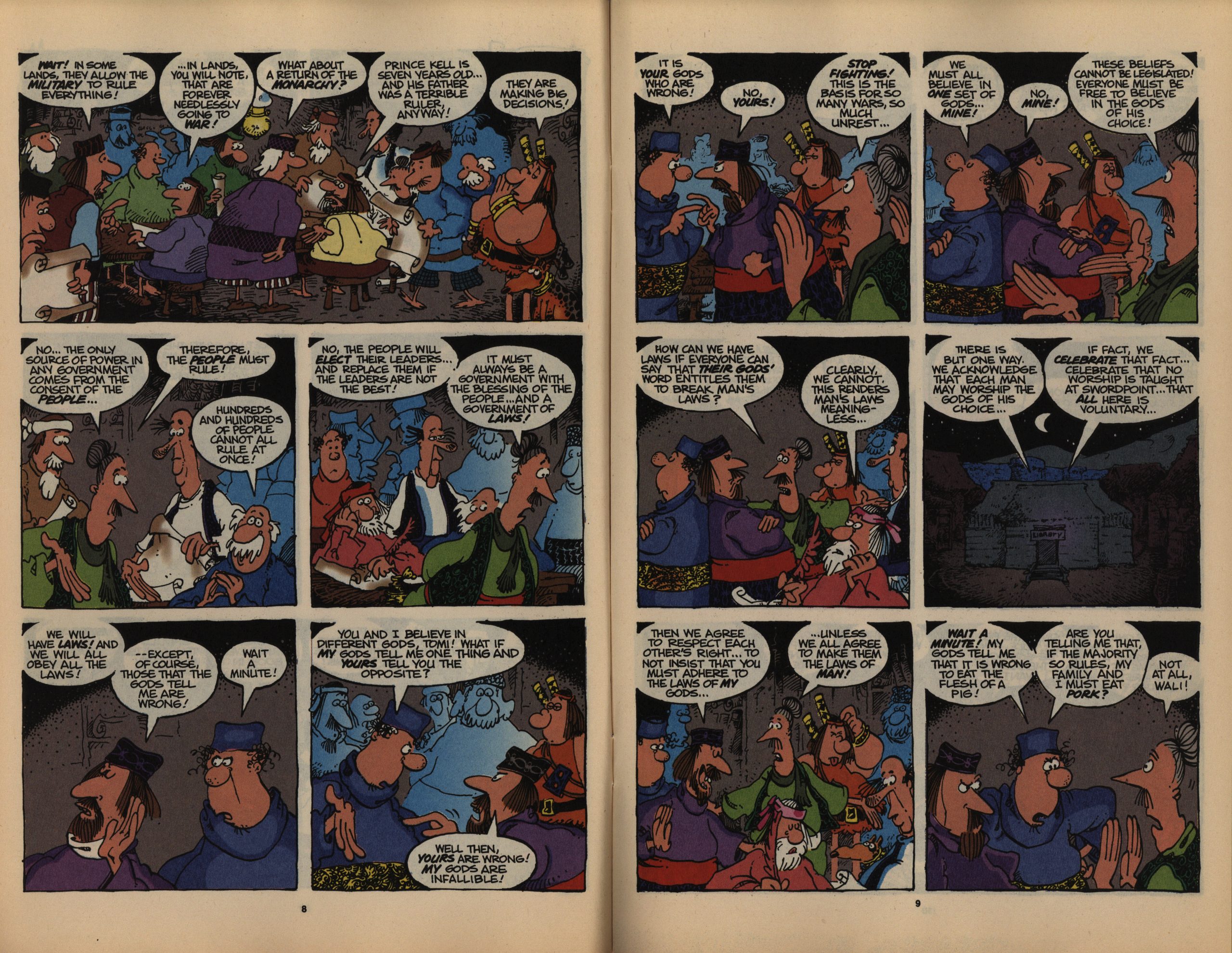
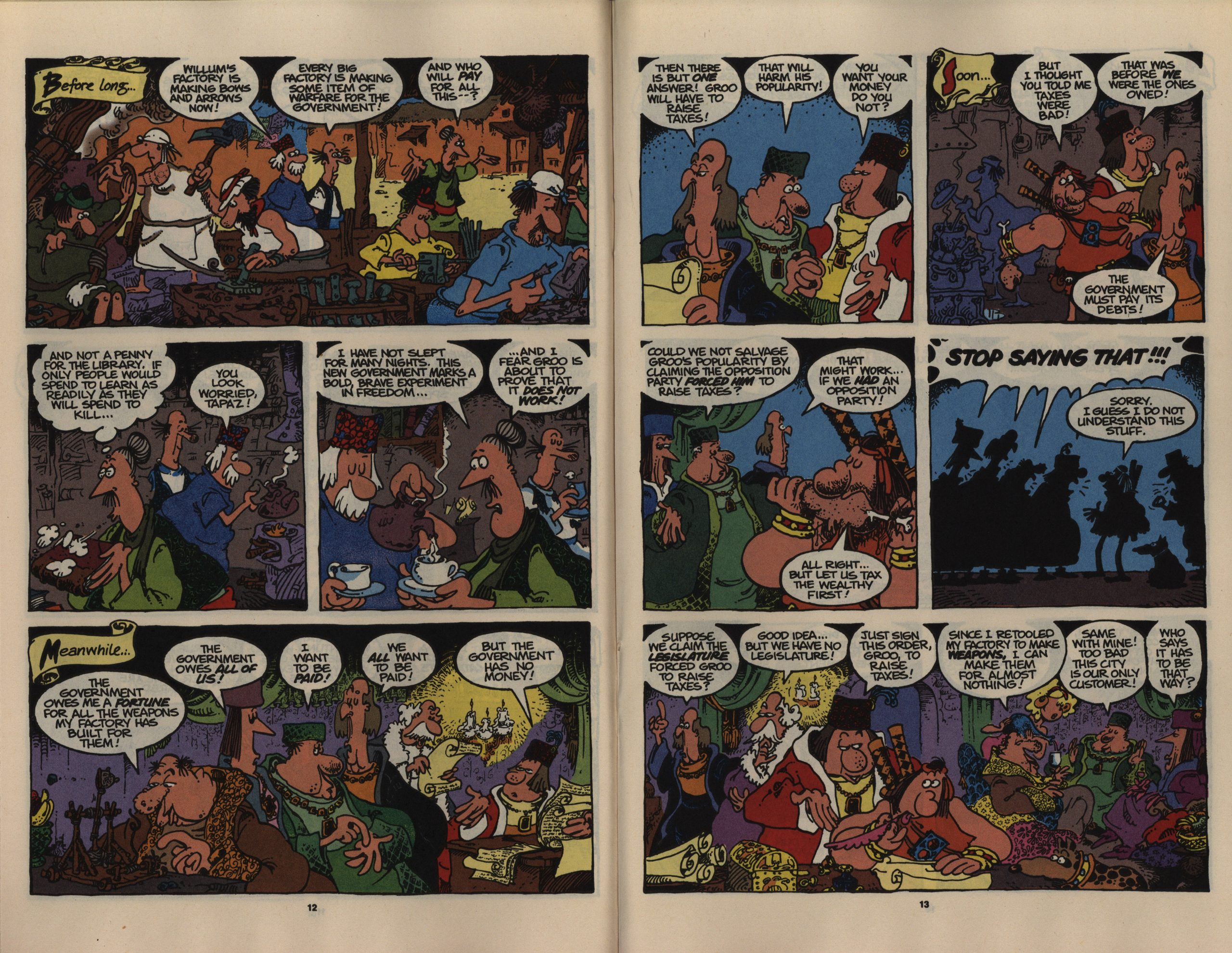

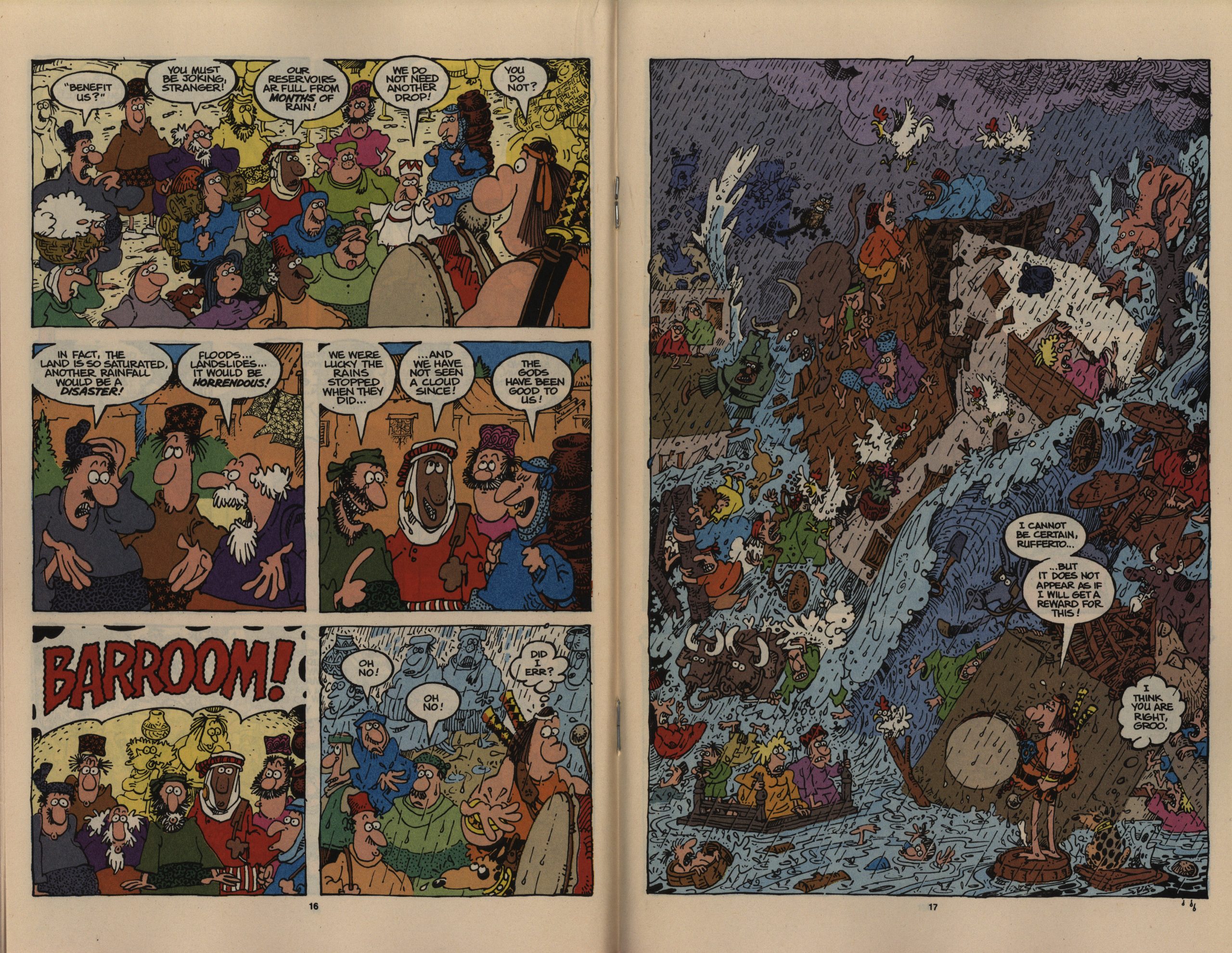
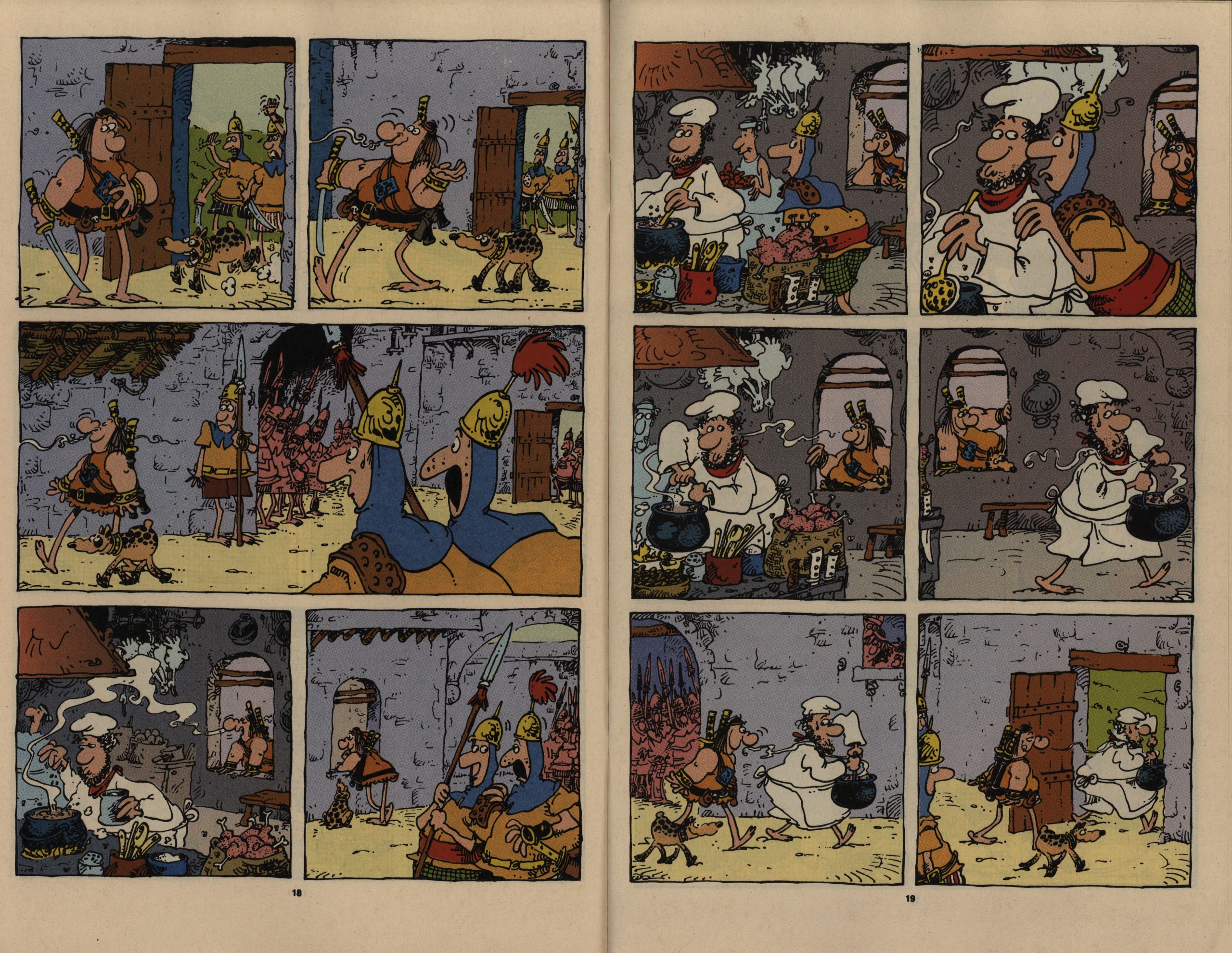
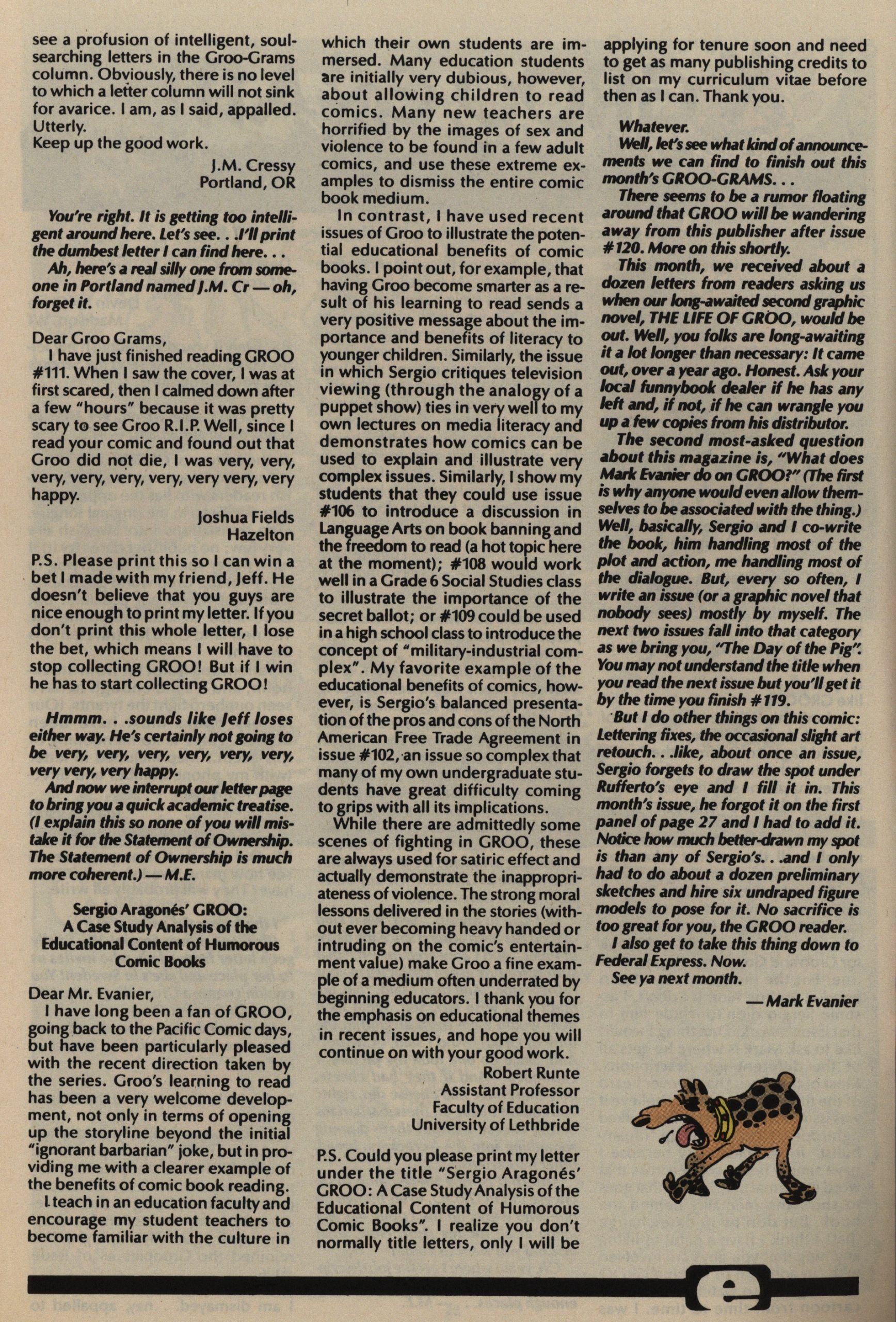
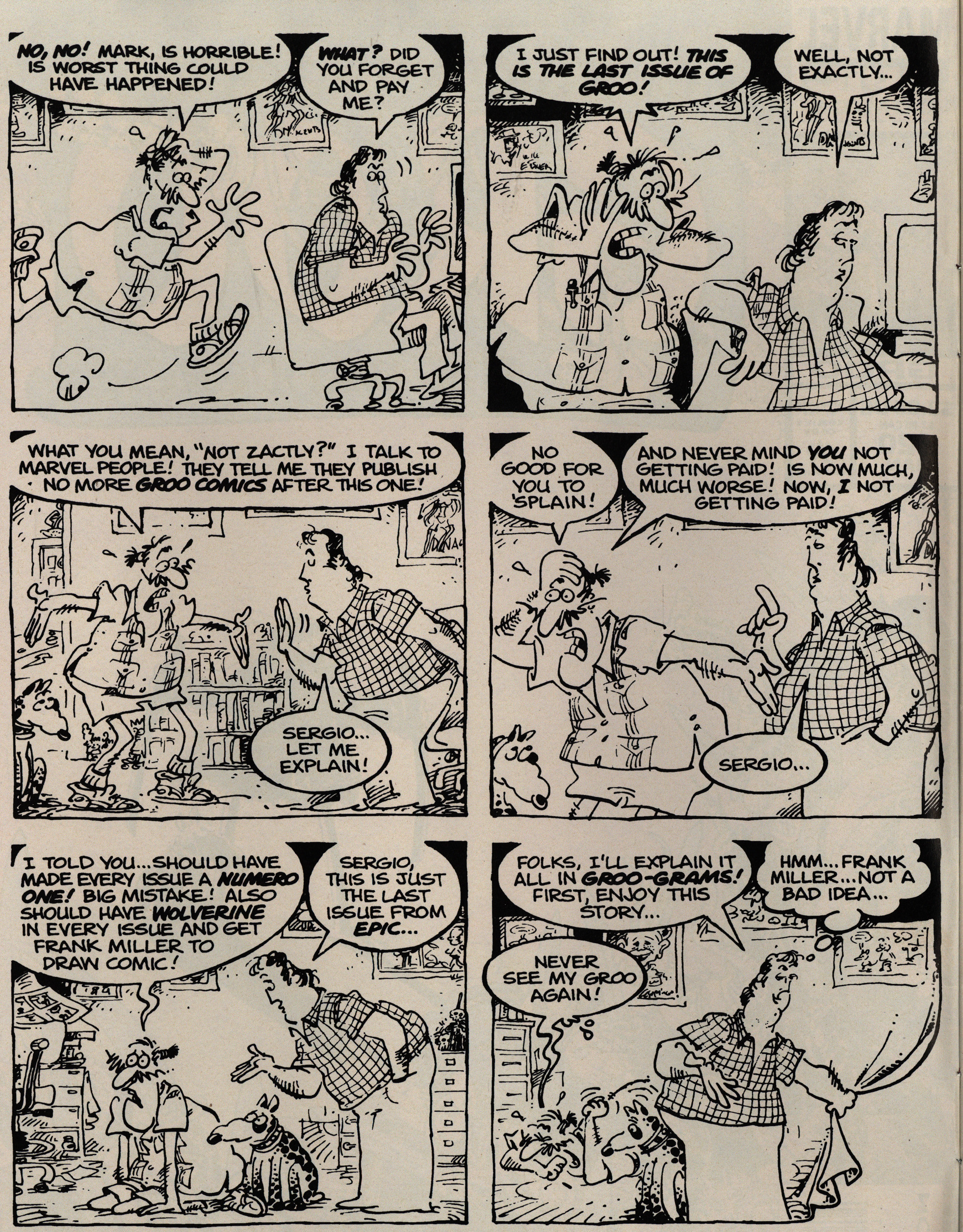
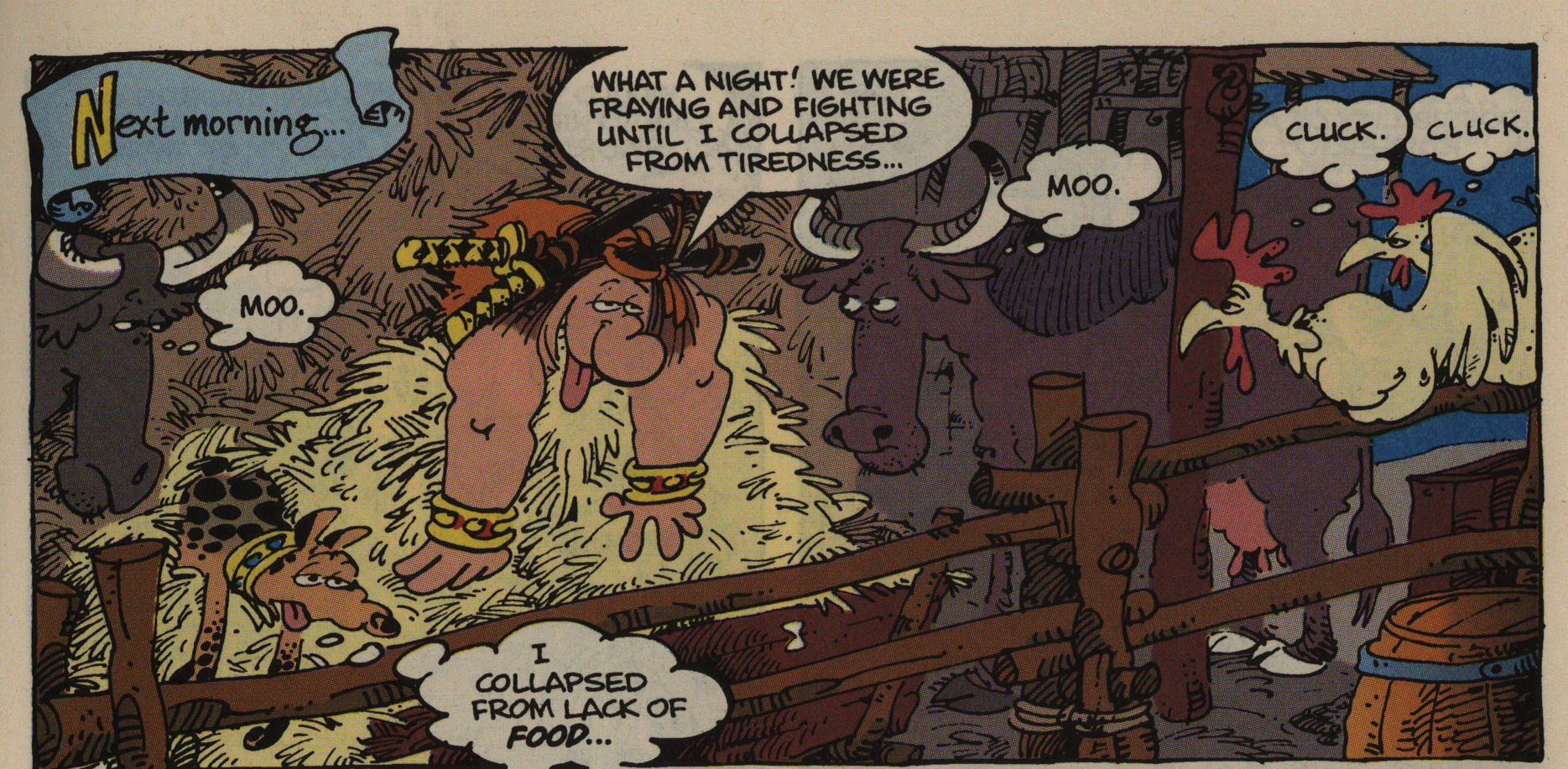
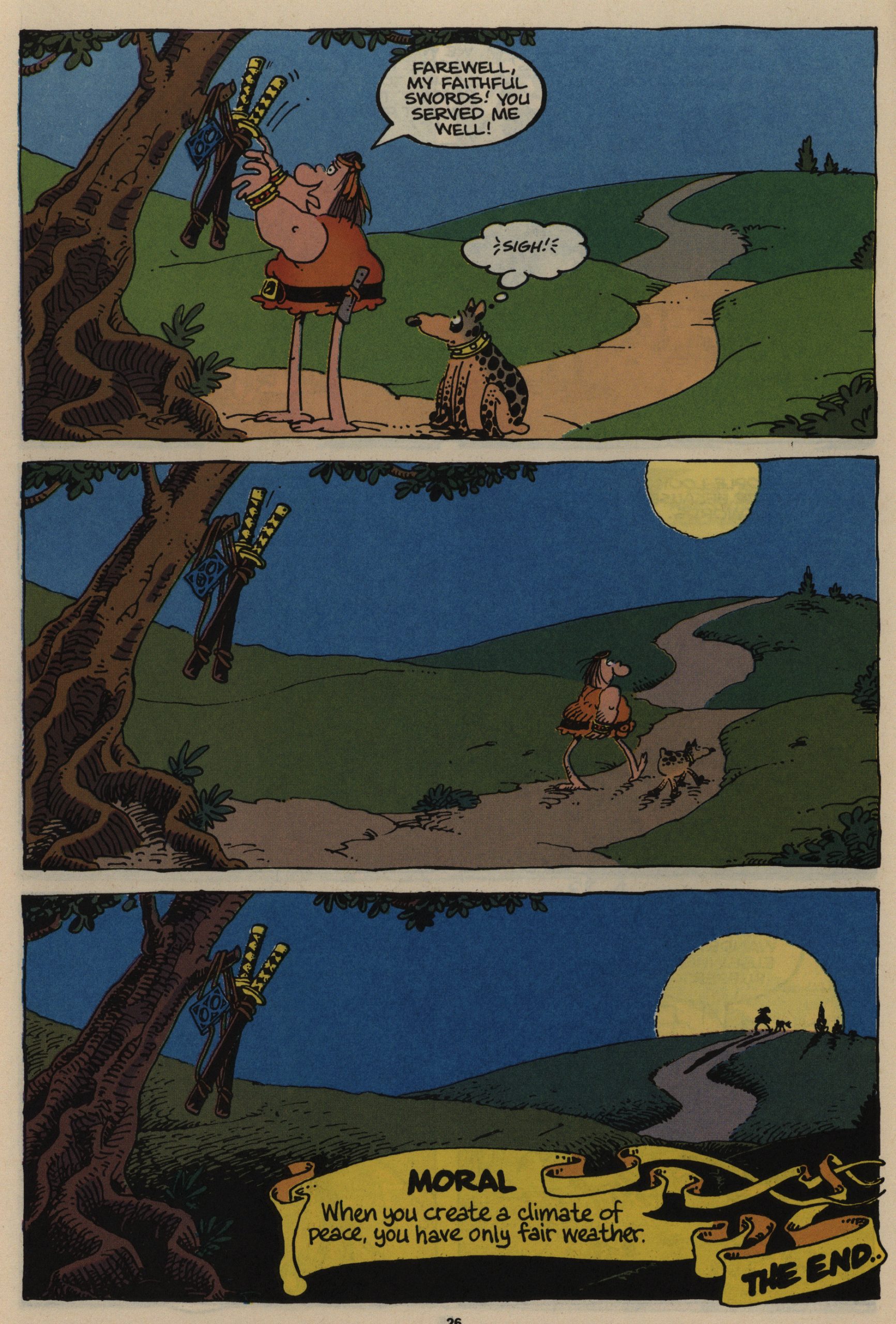
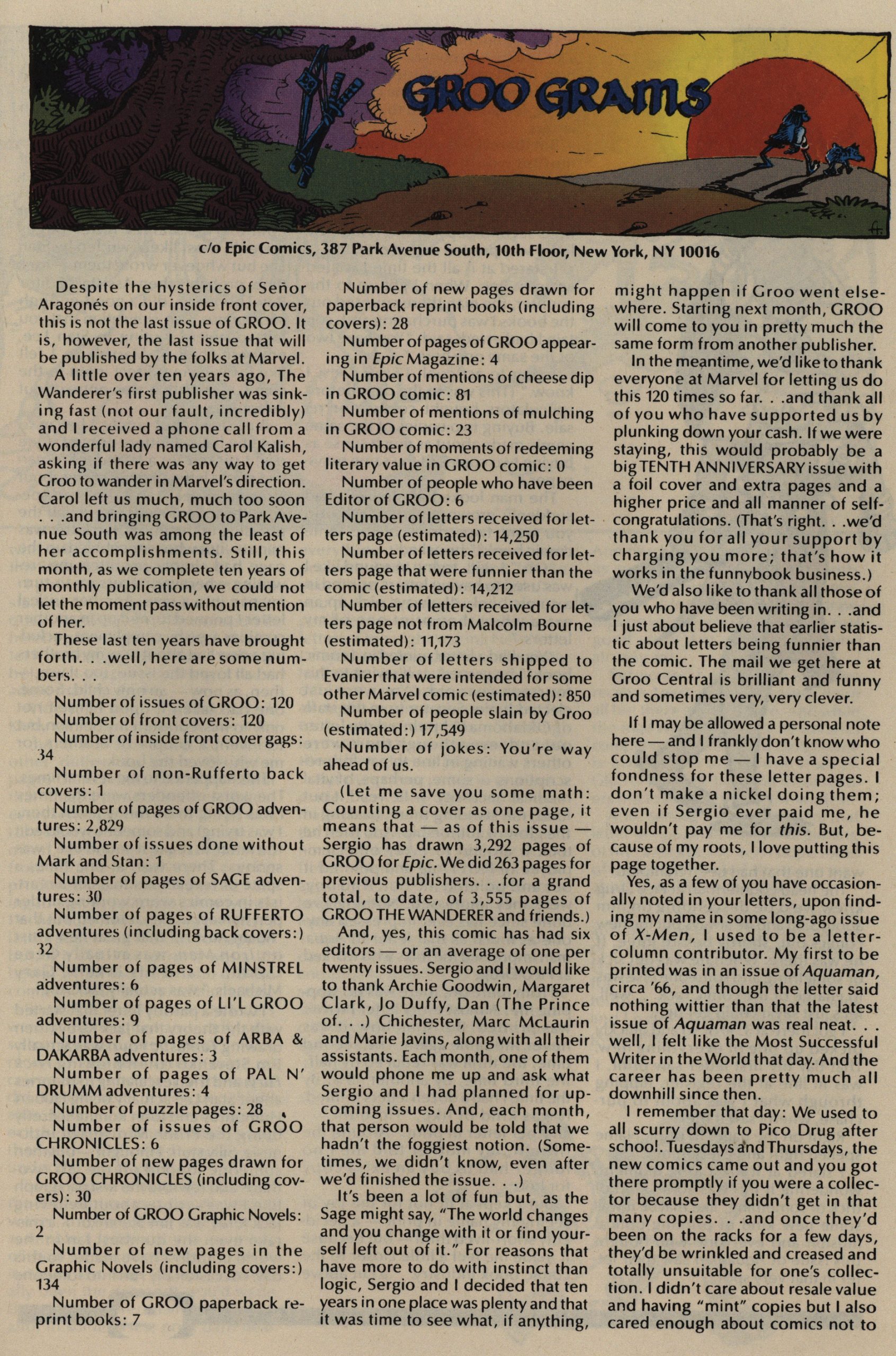
Congrats! I stumbled onto your Fantagraphics blog a few months ago and have been eagerly working my way through your other comics blogs. The Fantagraphics one was a nice nostalgia trip, but these others are even better, as I wouldn’t ever want to actually read most of these, but am completely fascinated reading about them- so thanks! I hope you keep it up for a long while (and thanks in particular for turning me on to What’s Michael?, which I love).